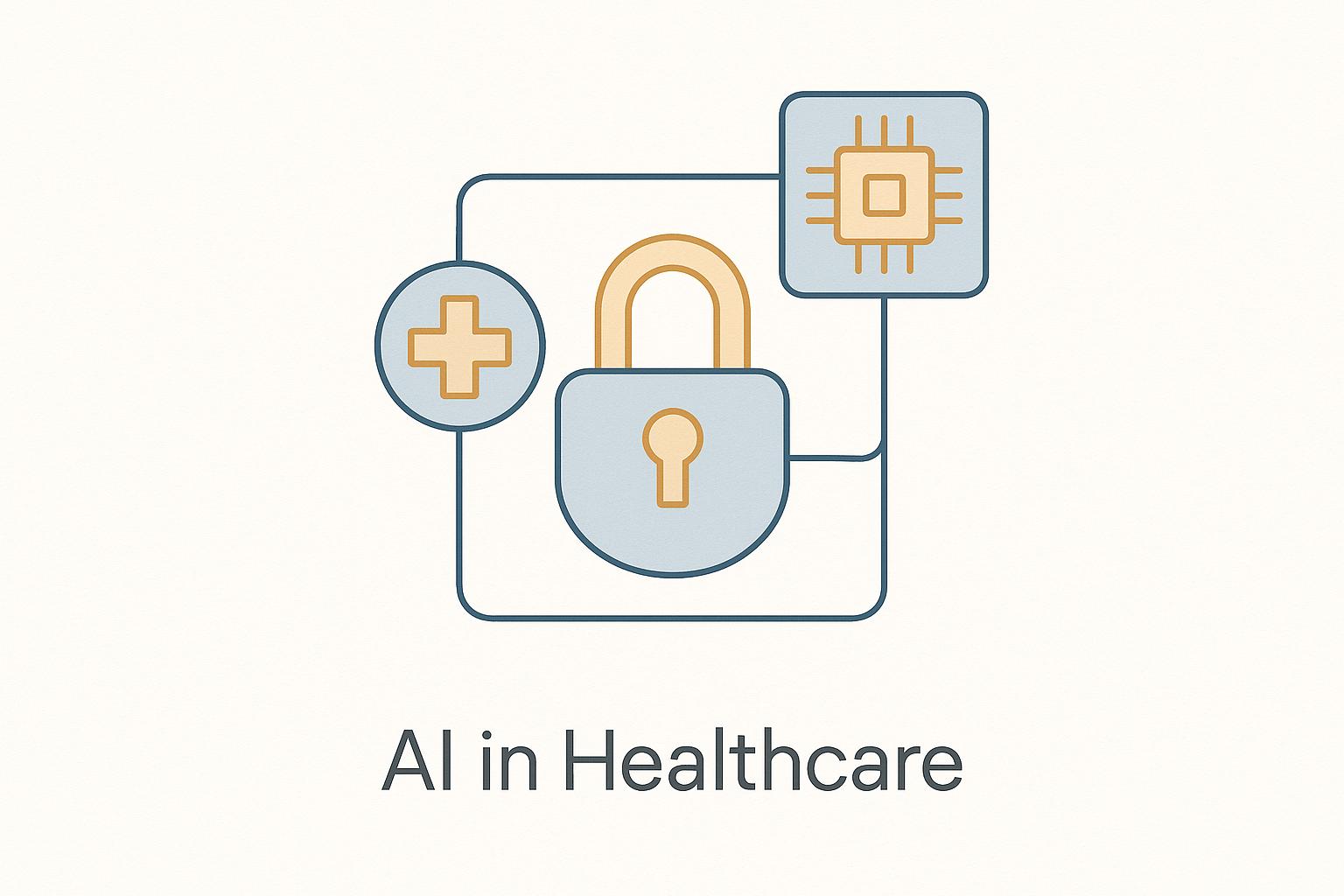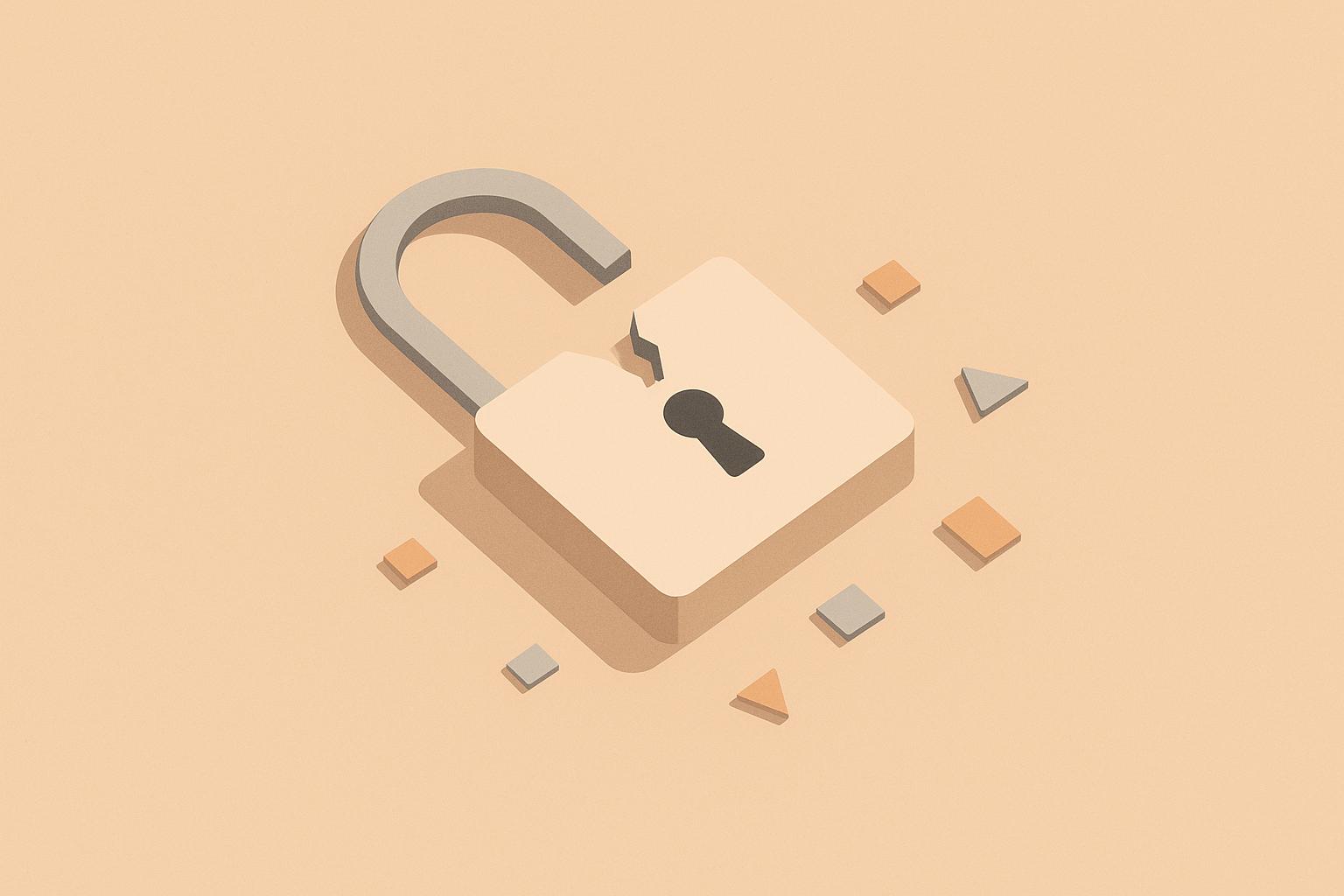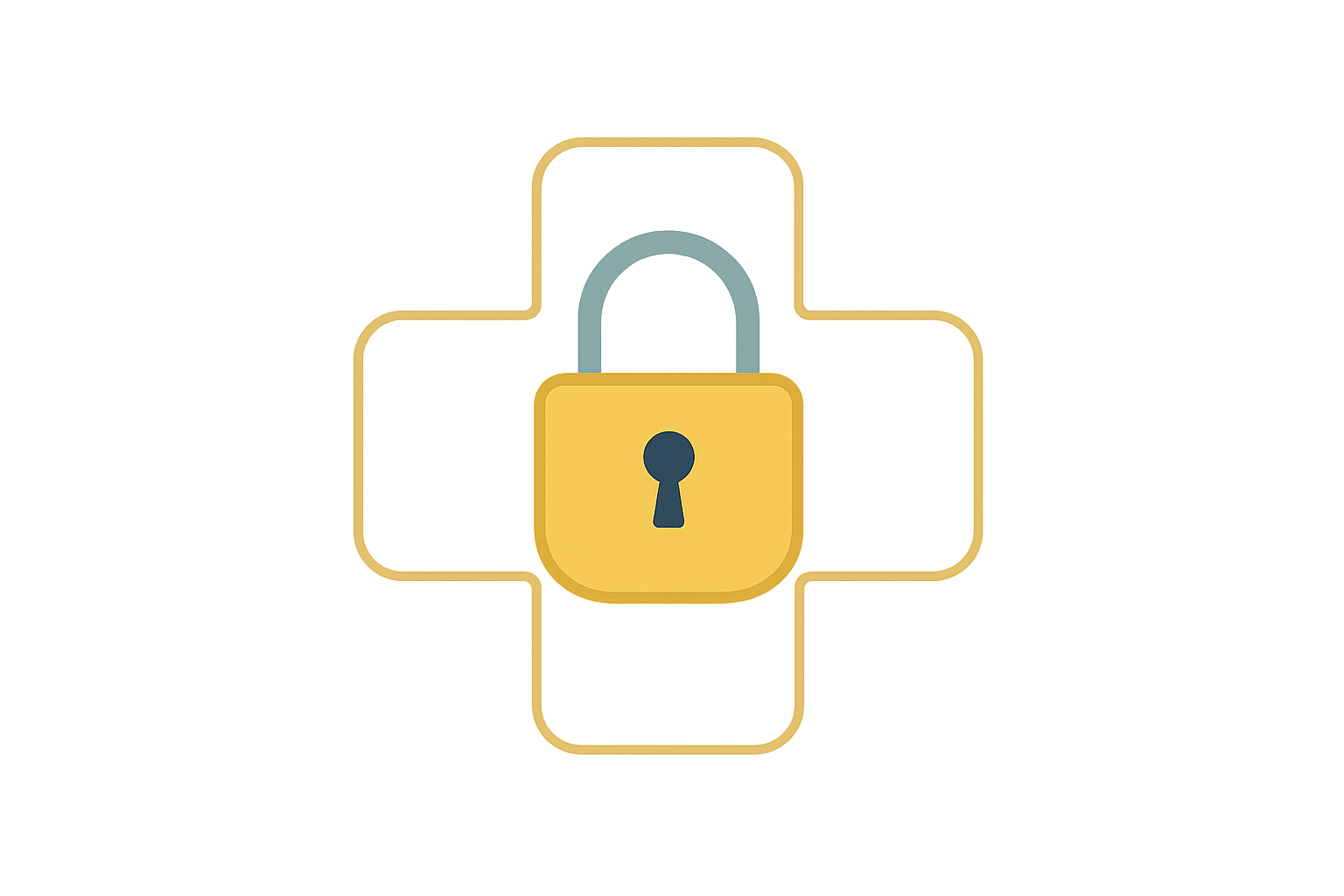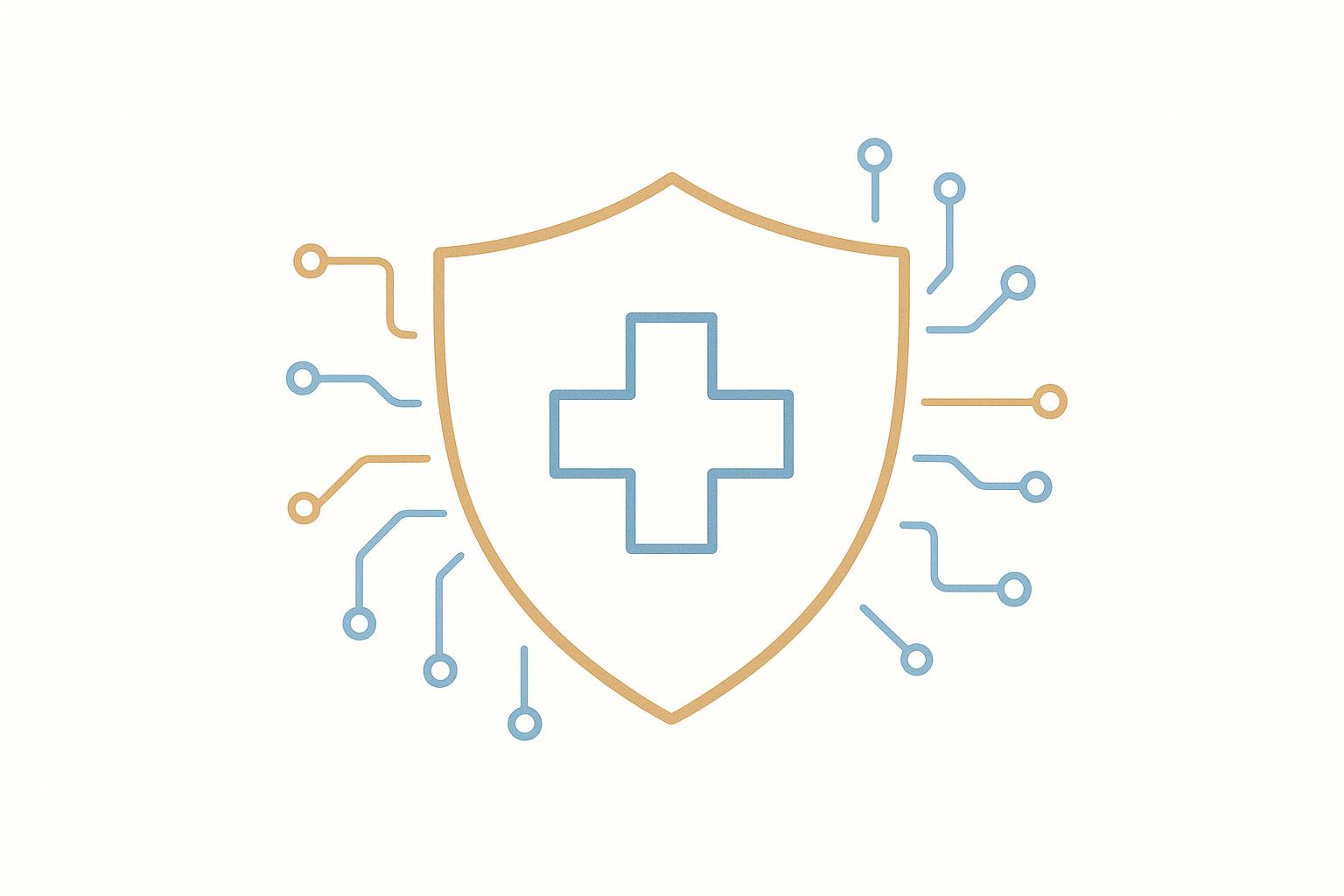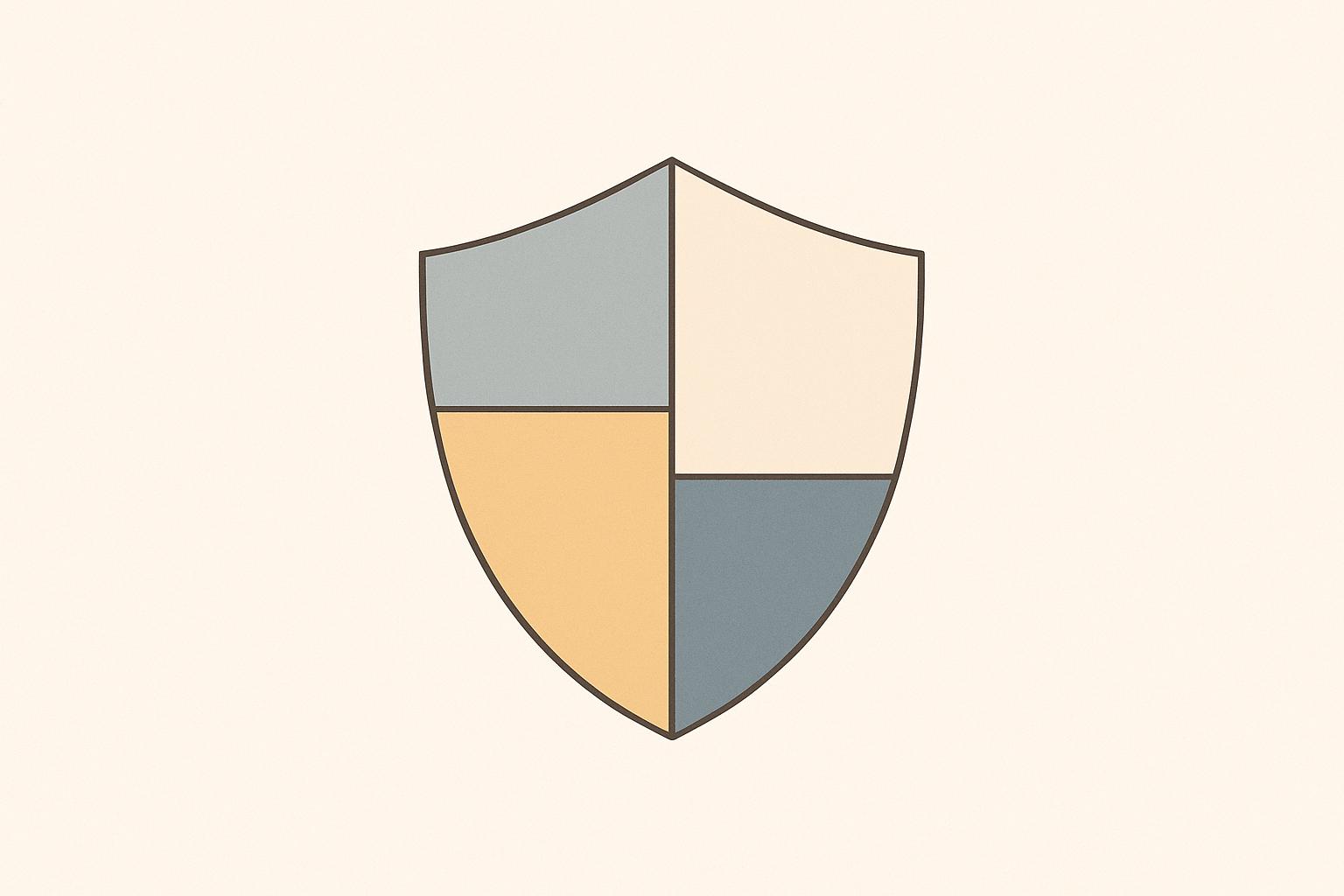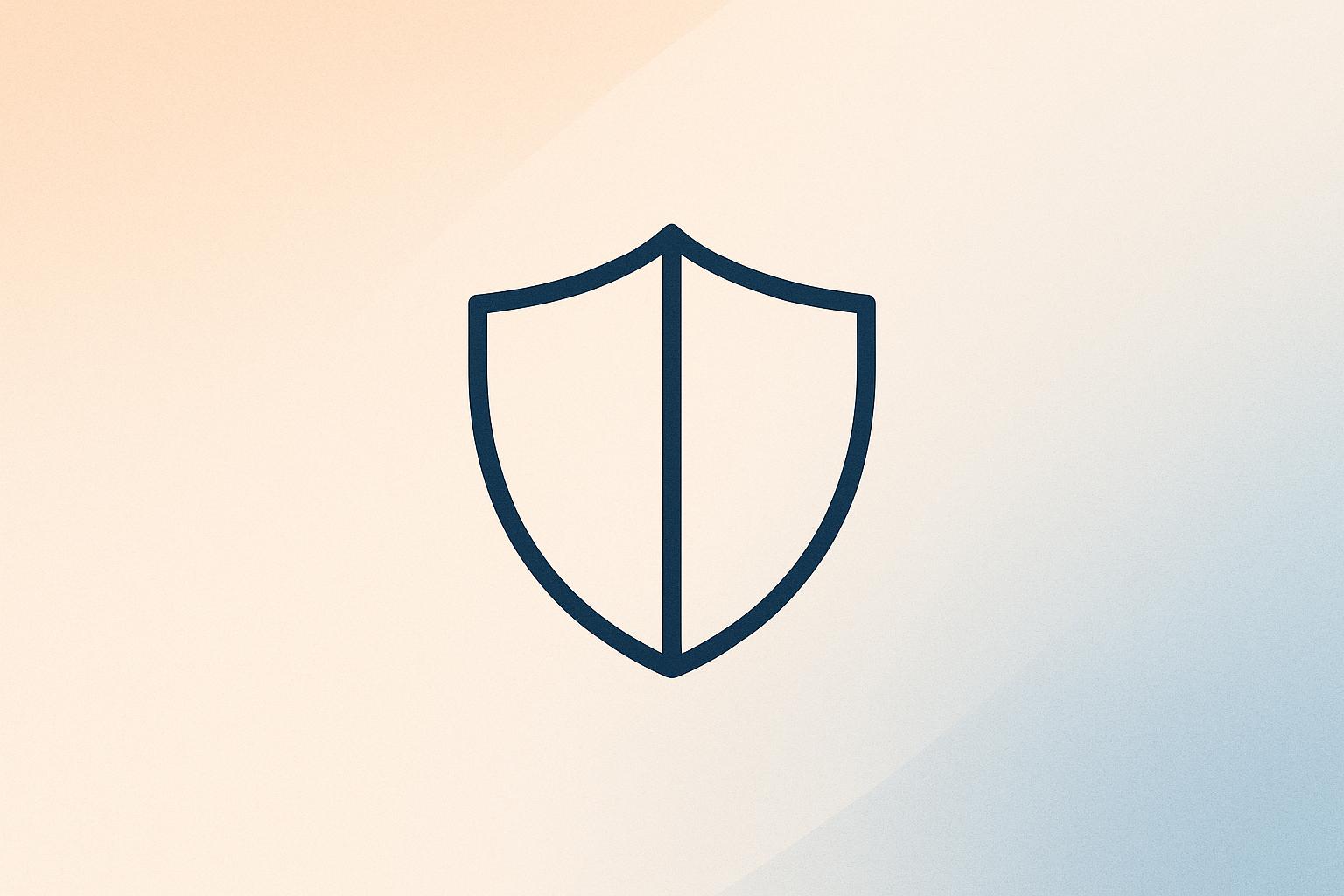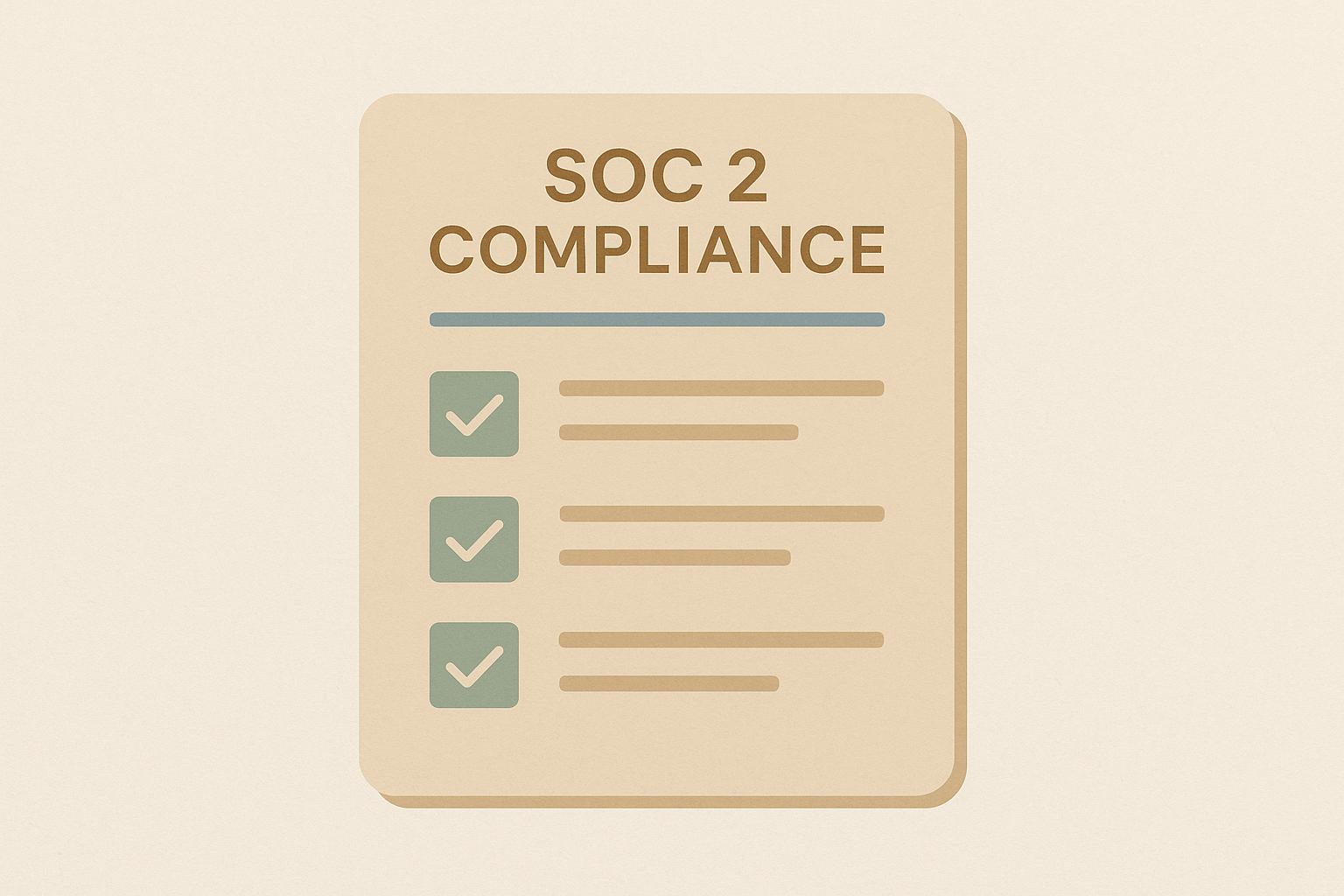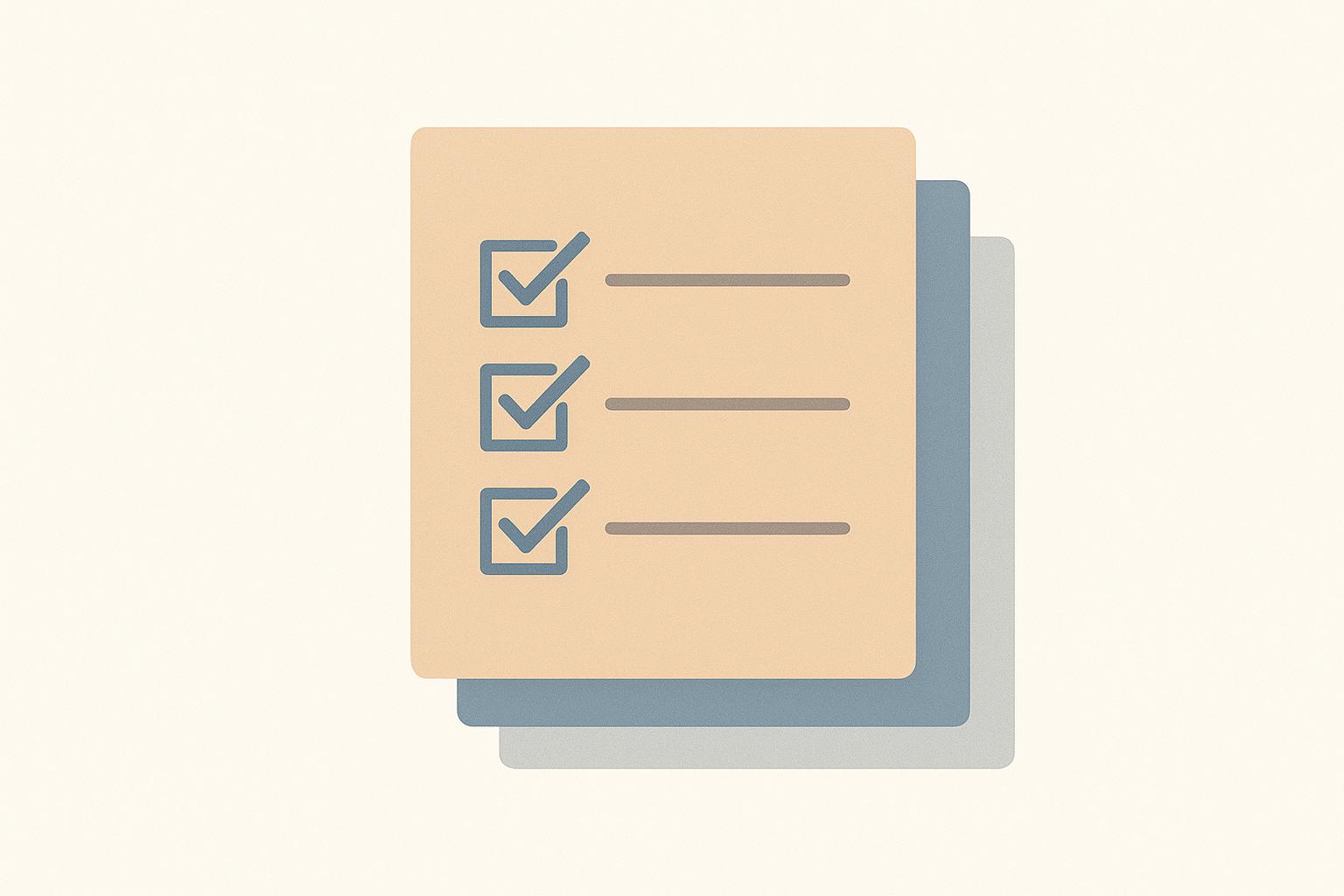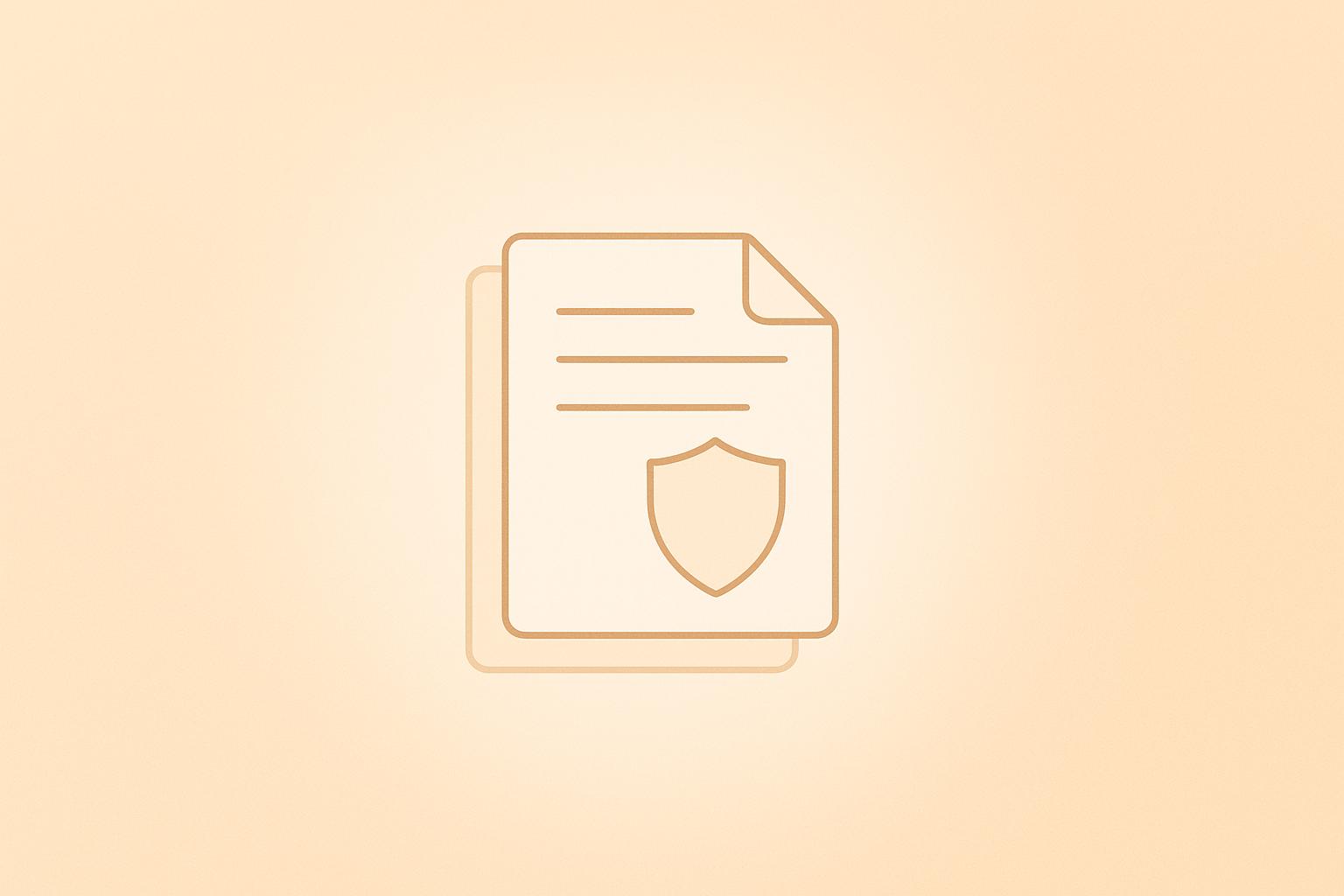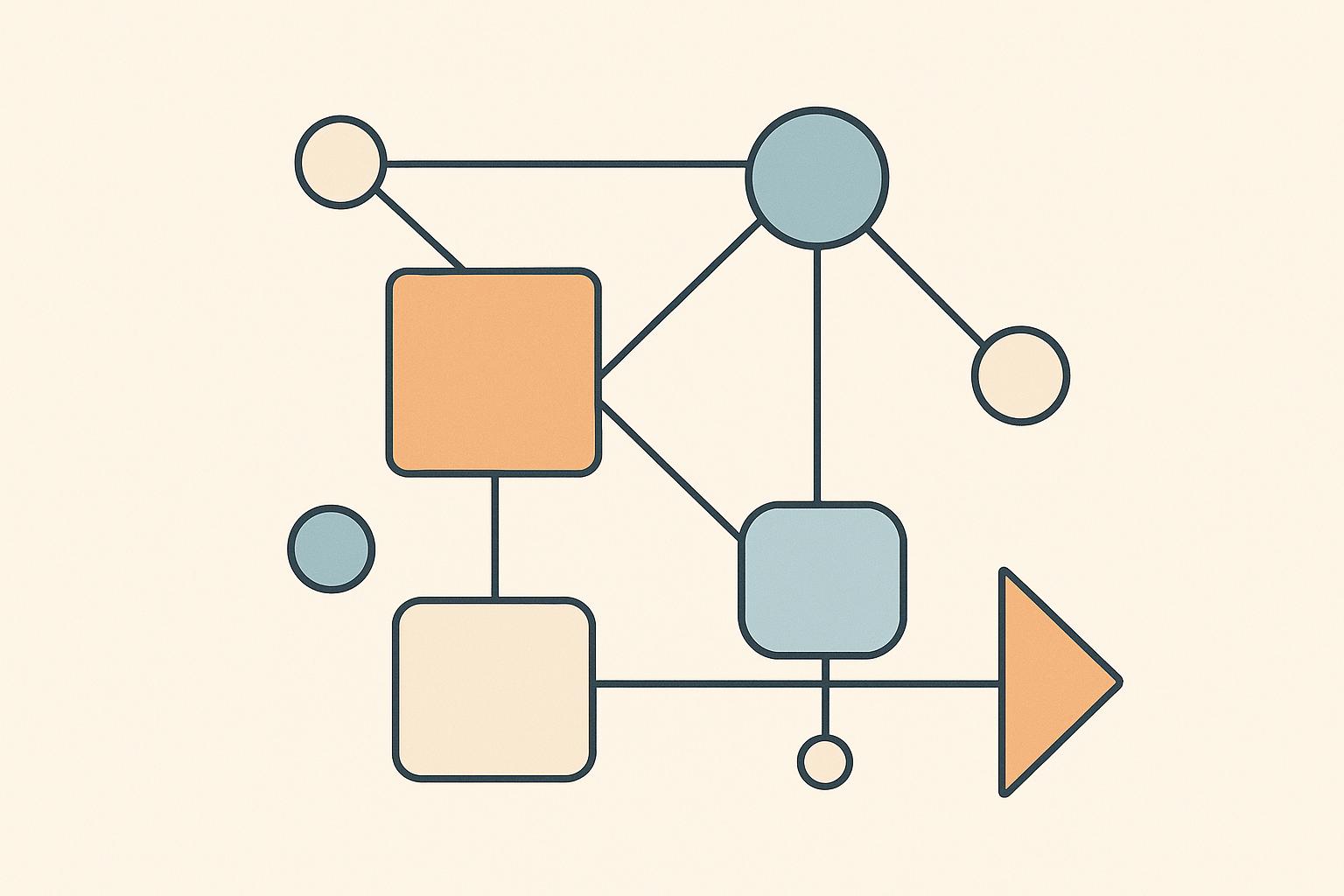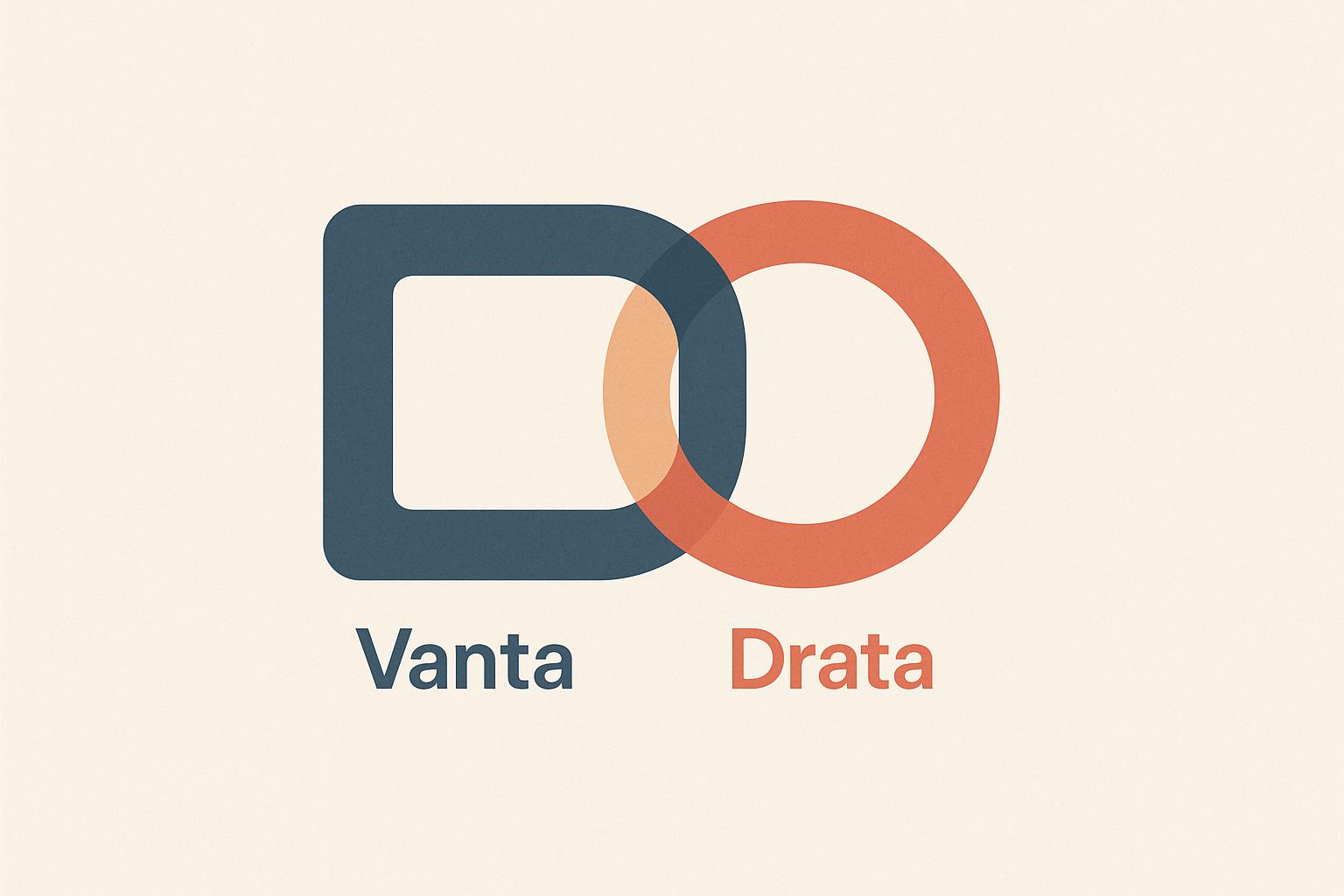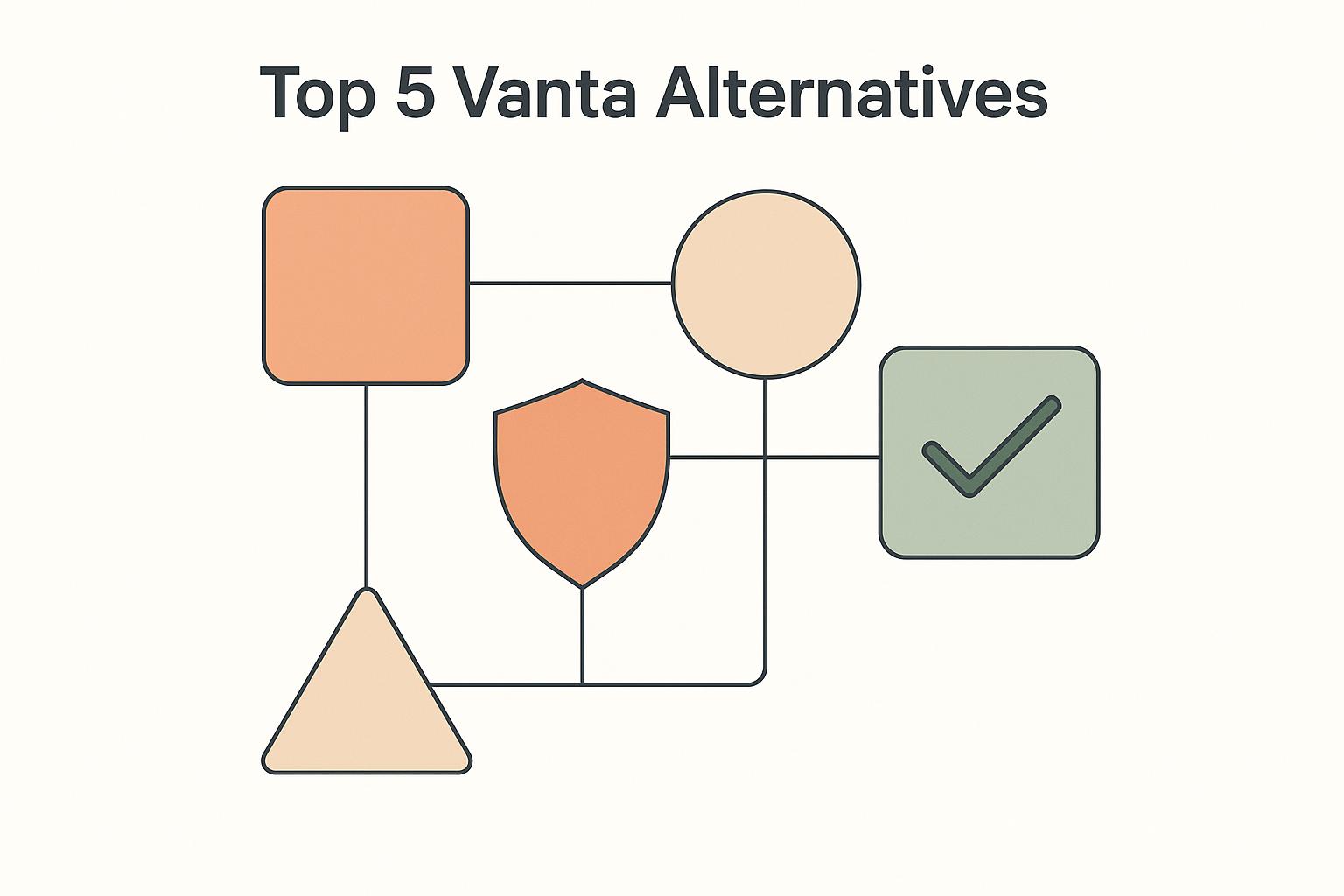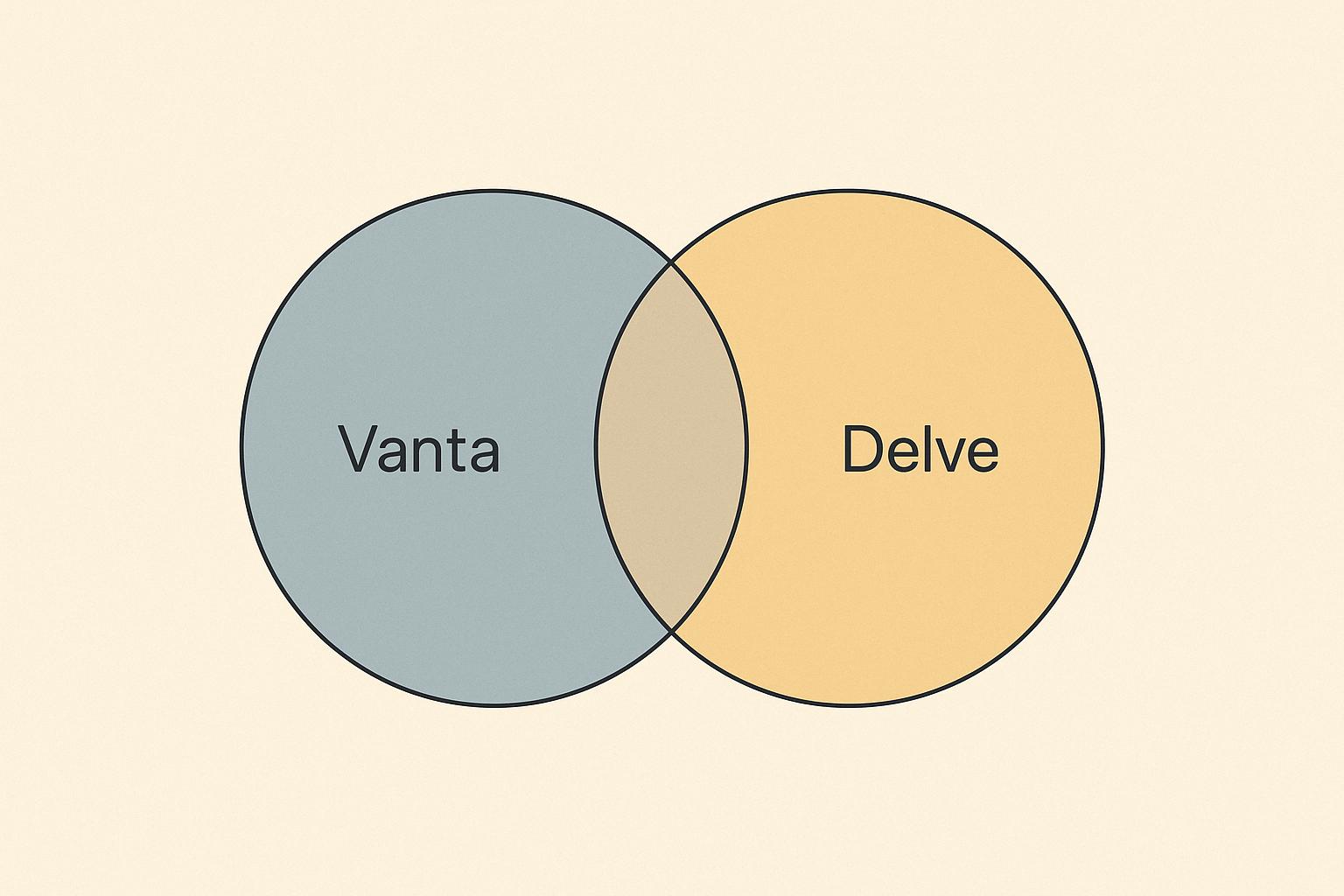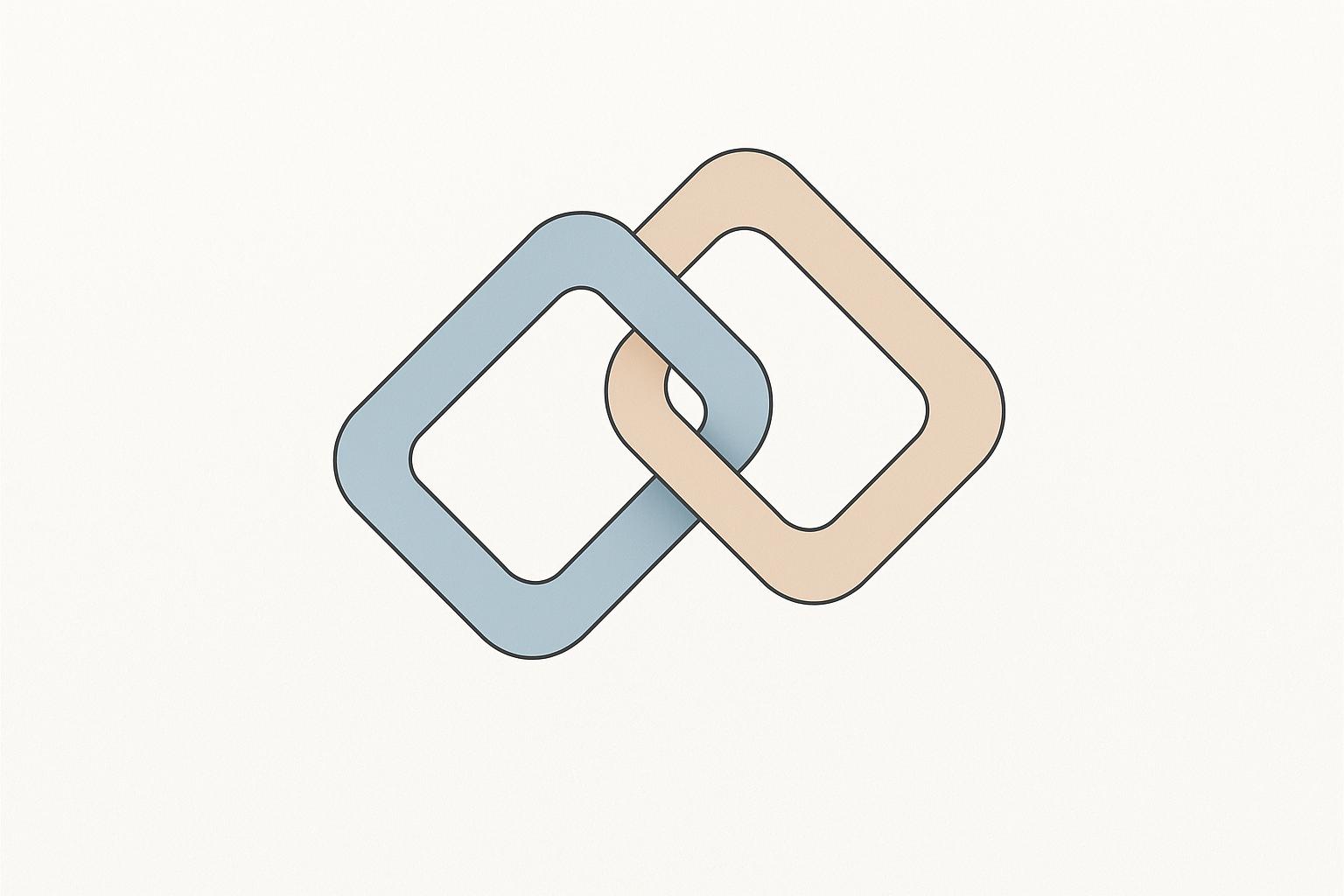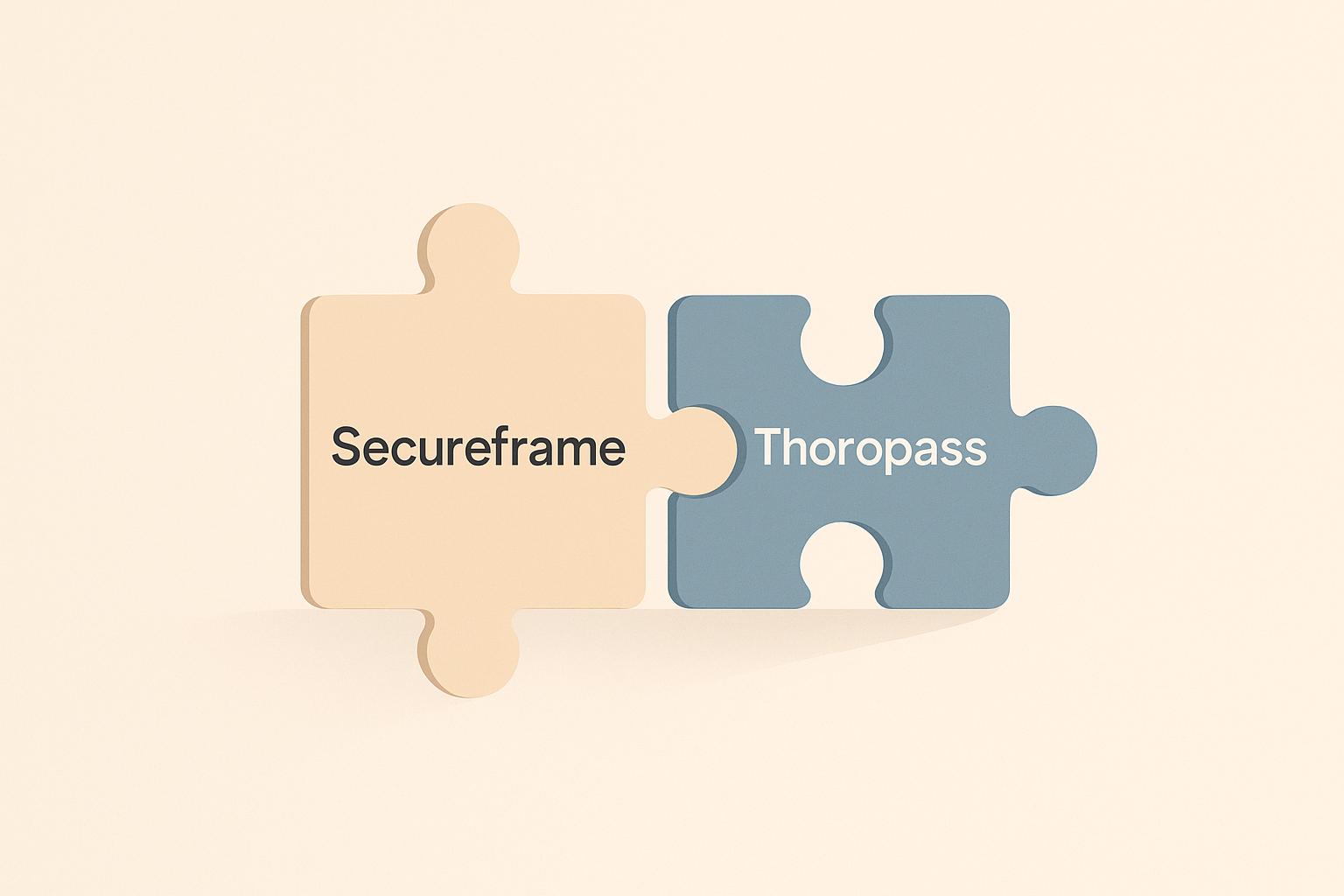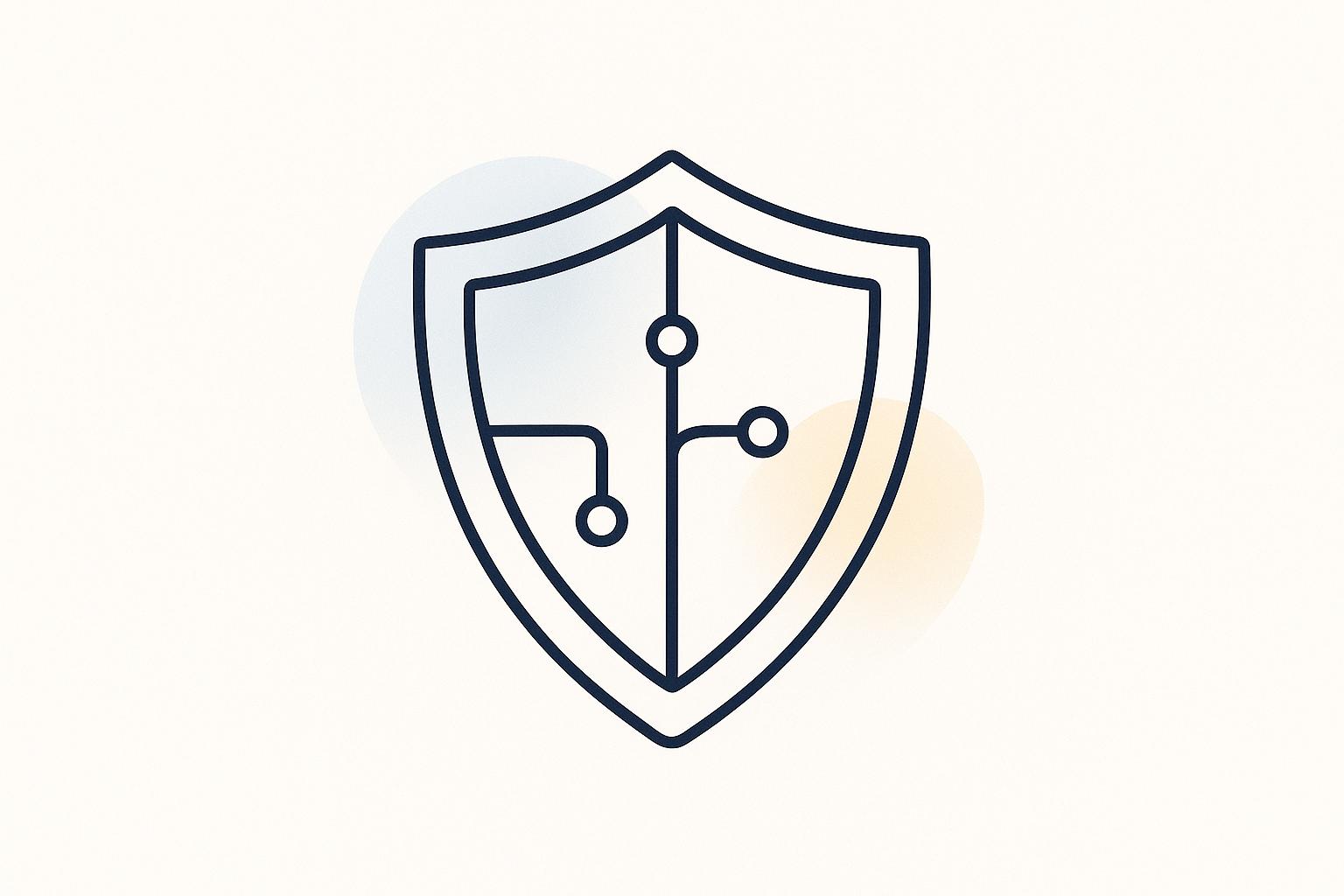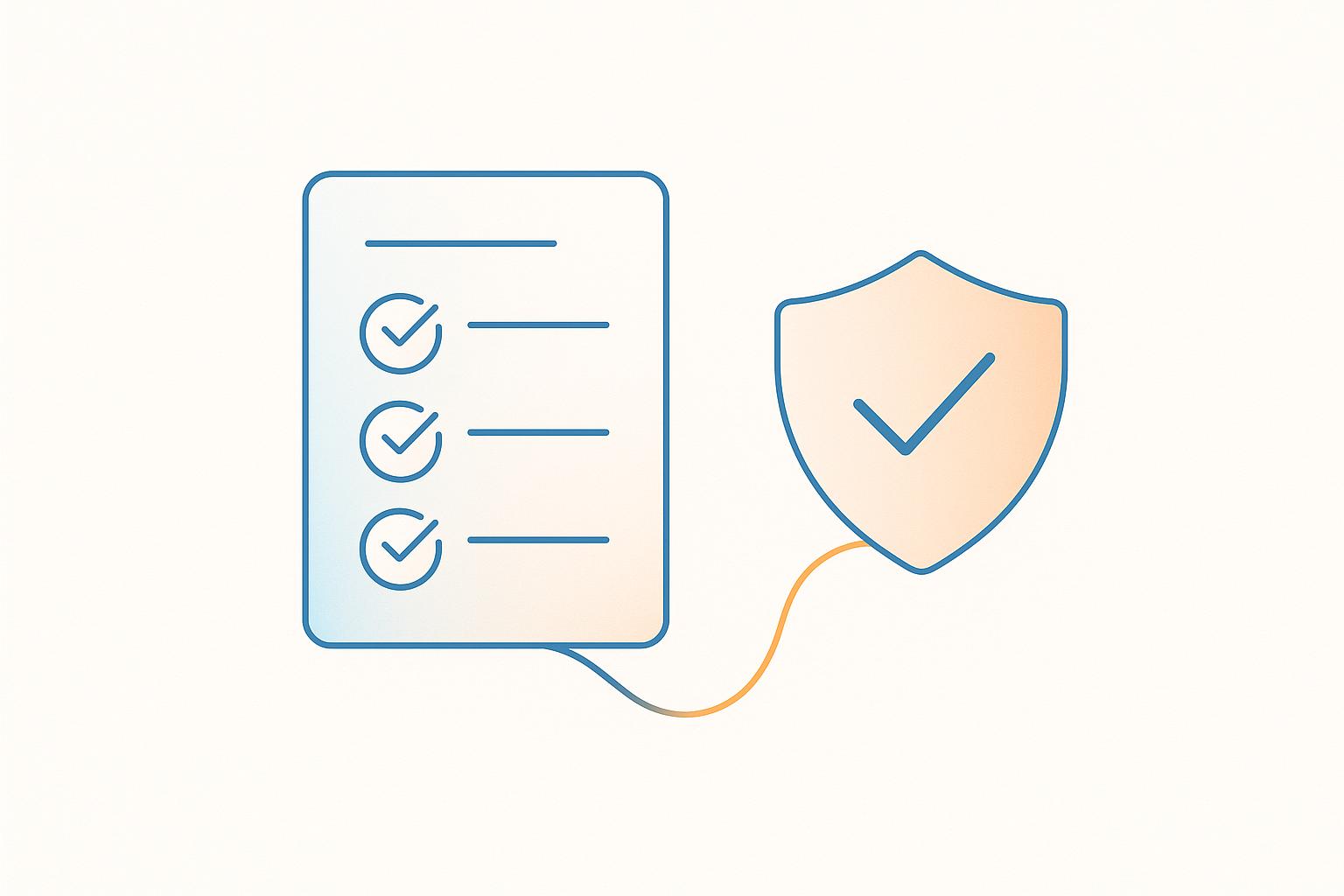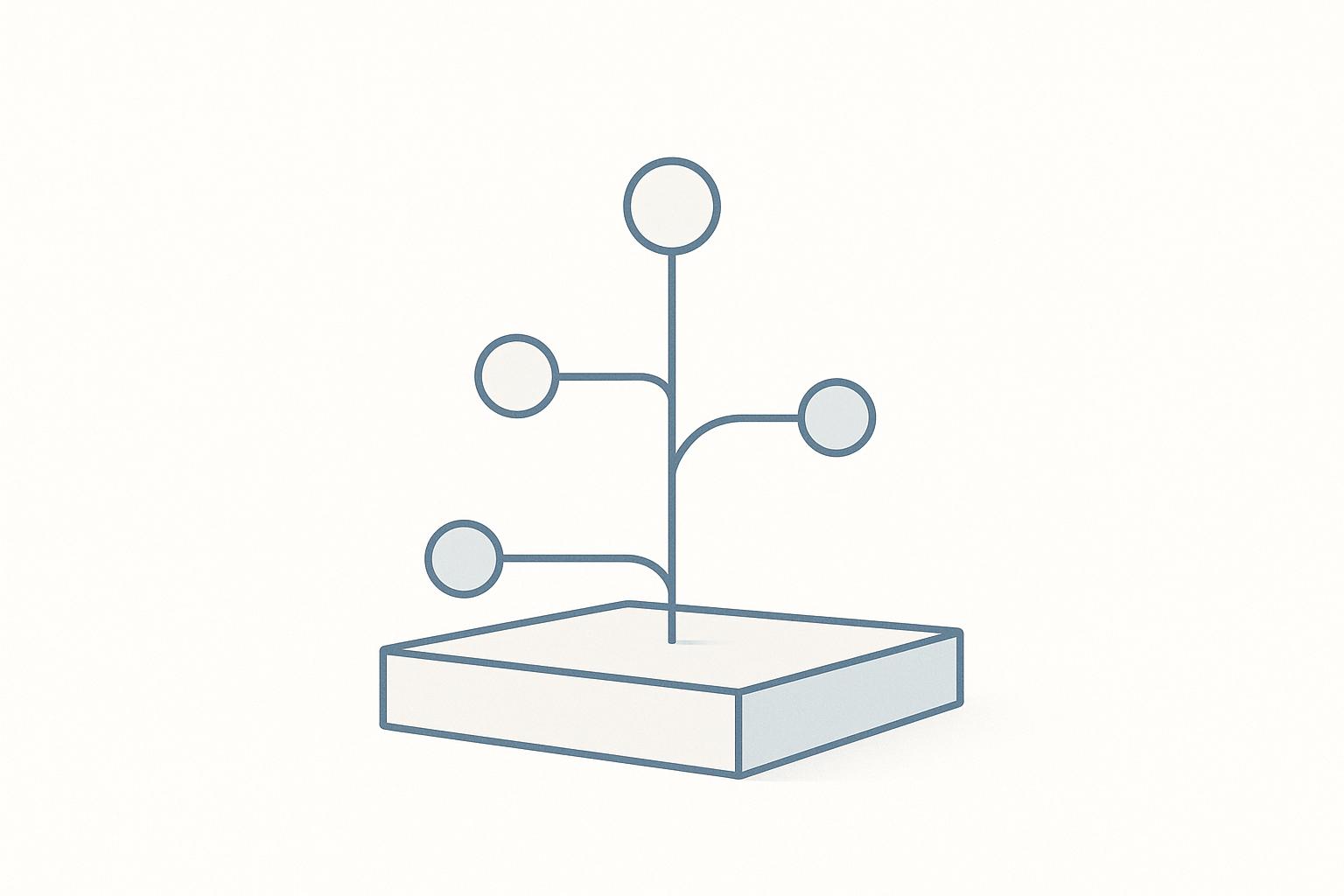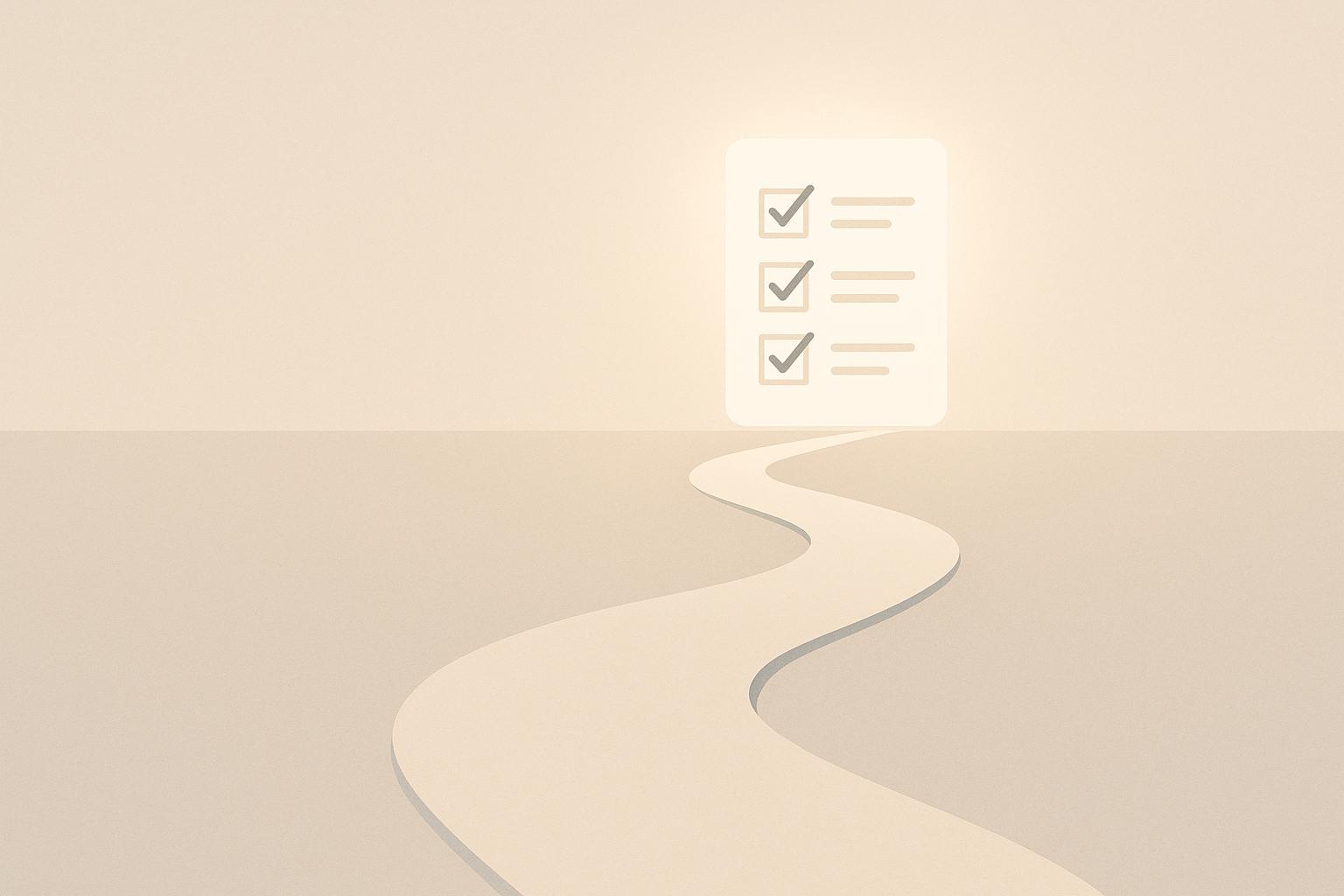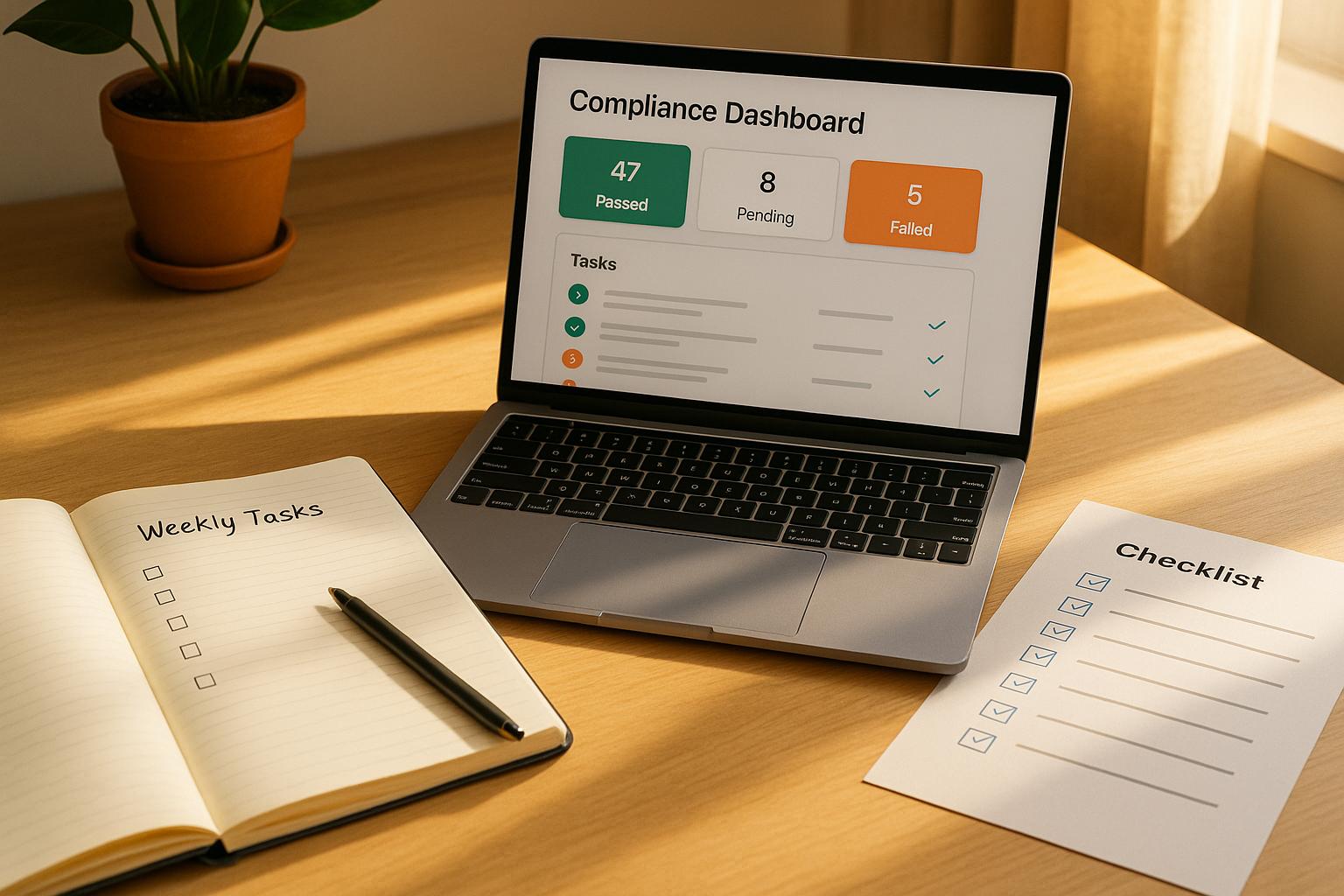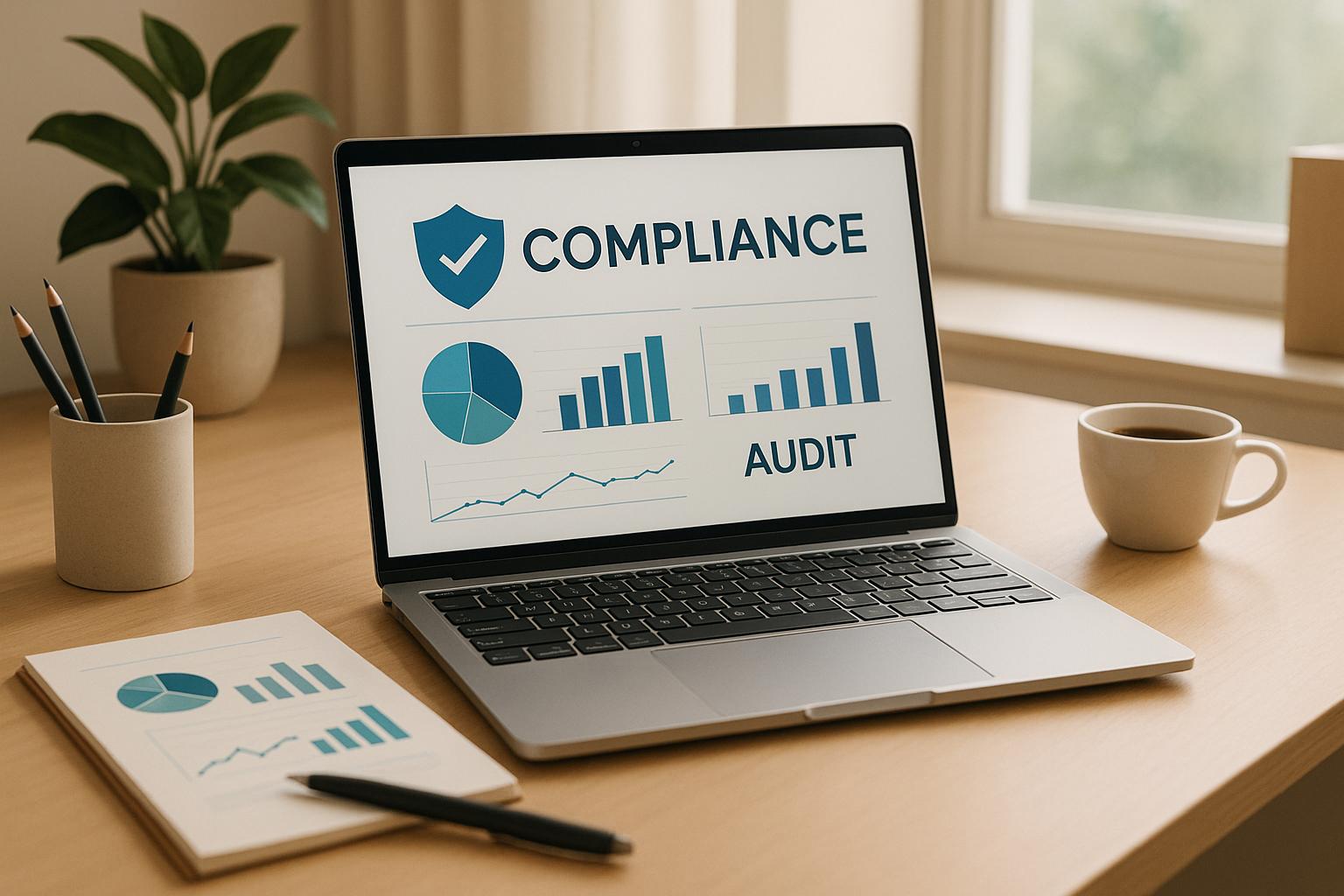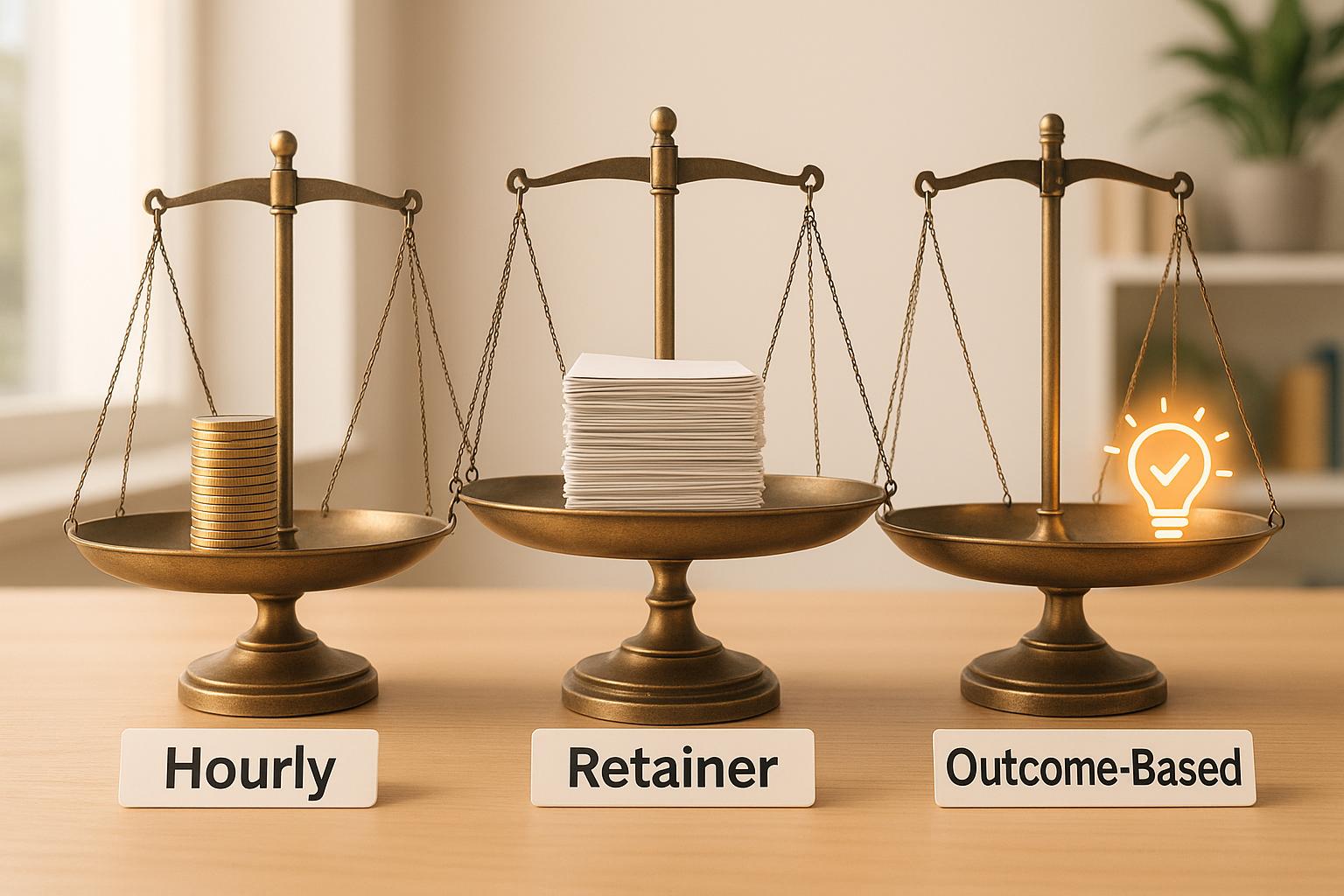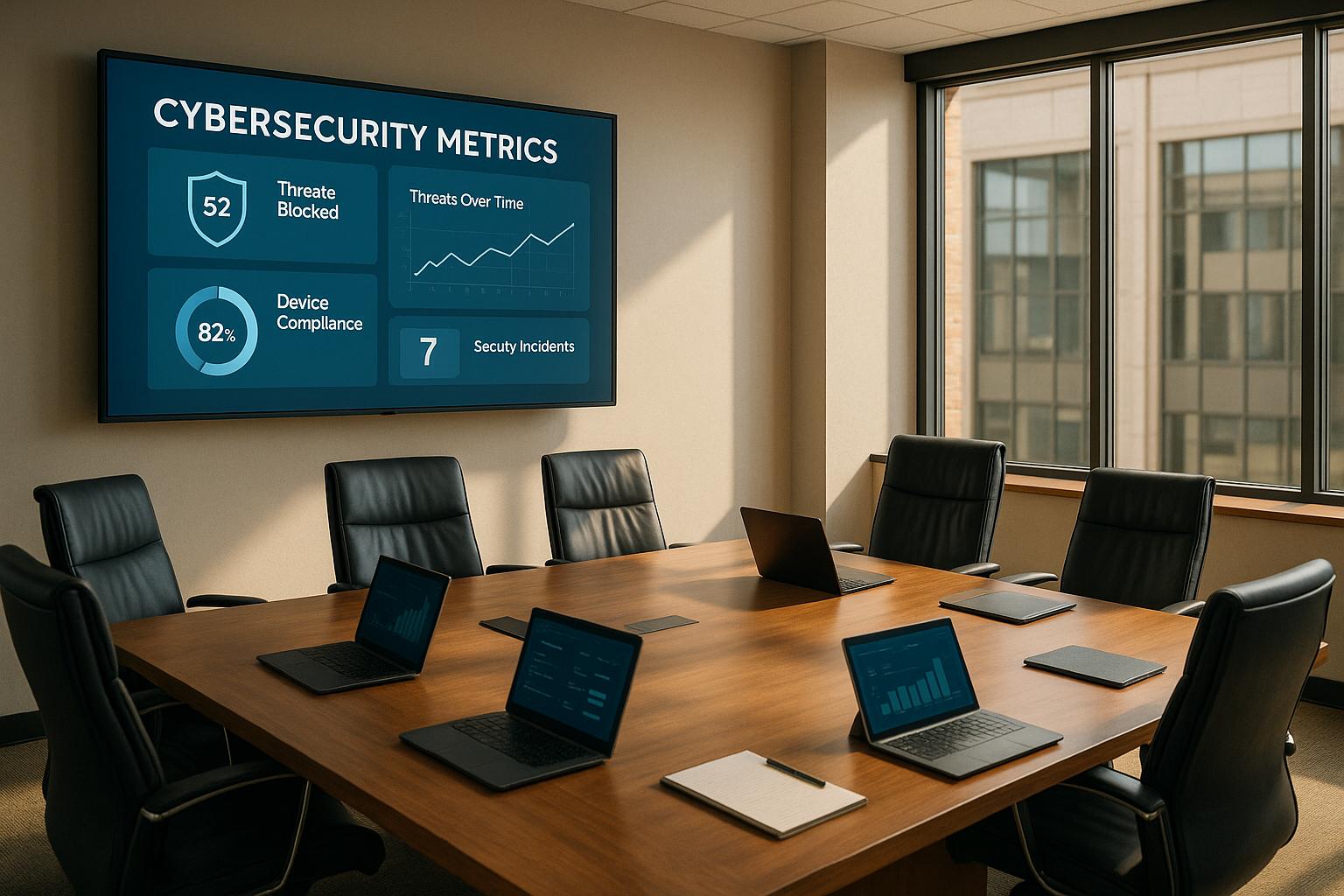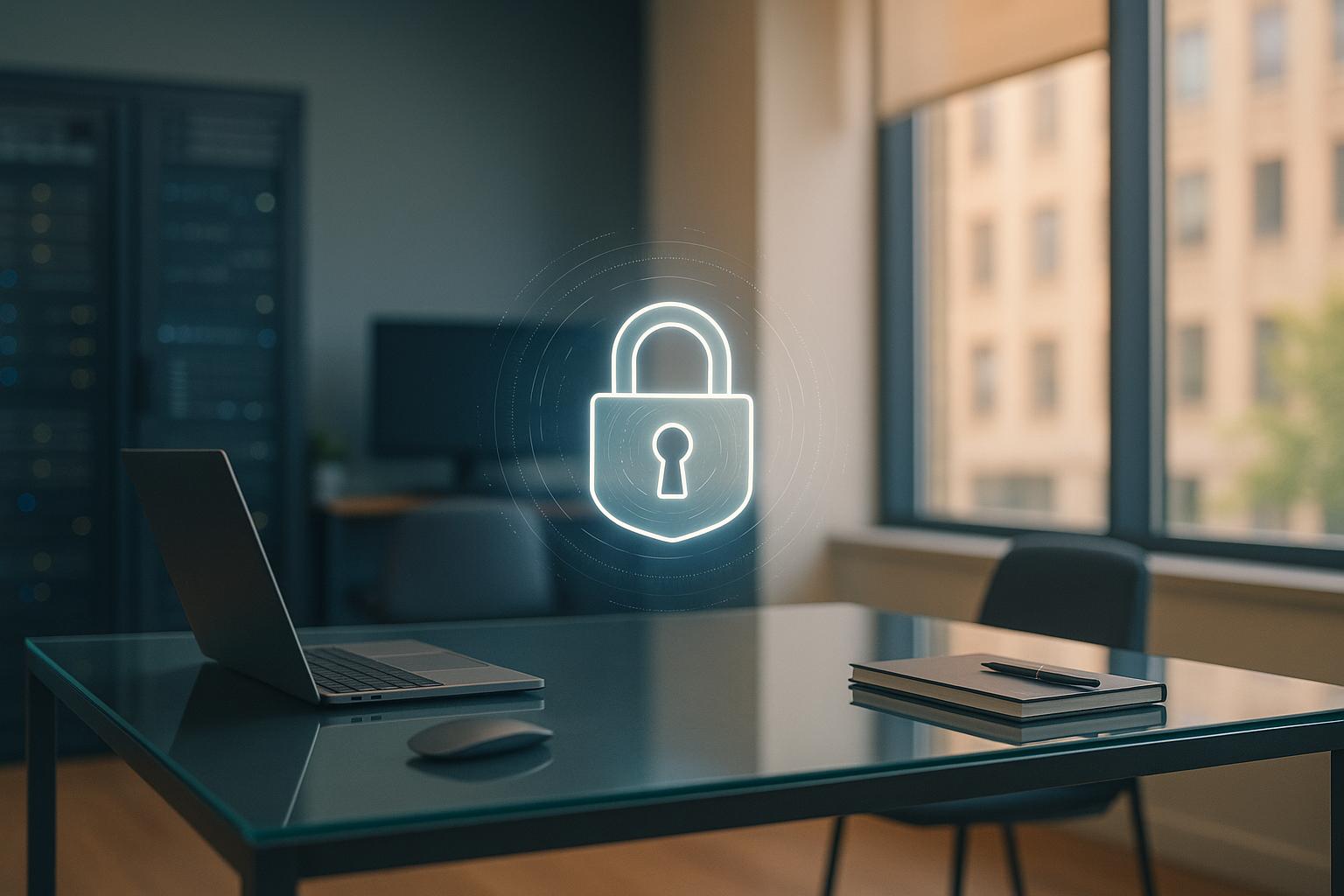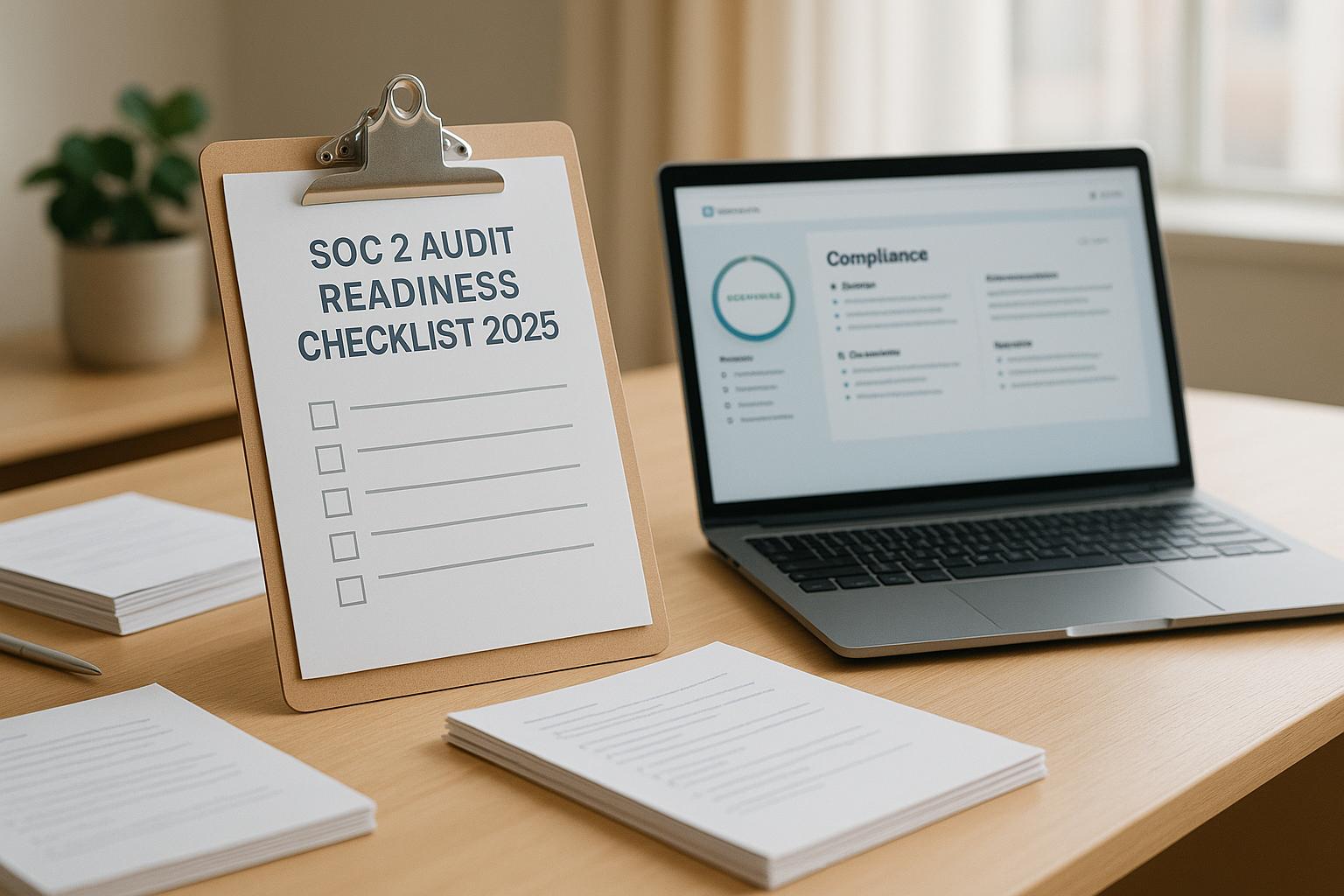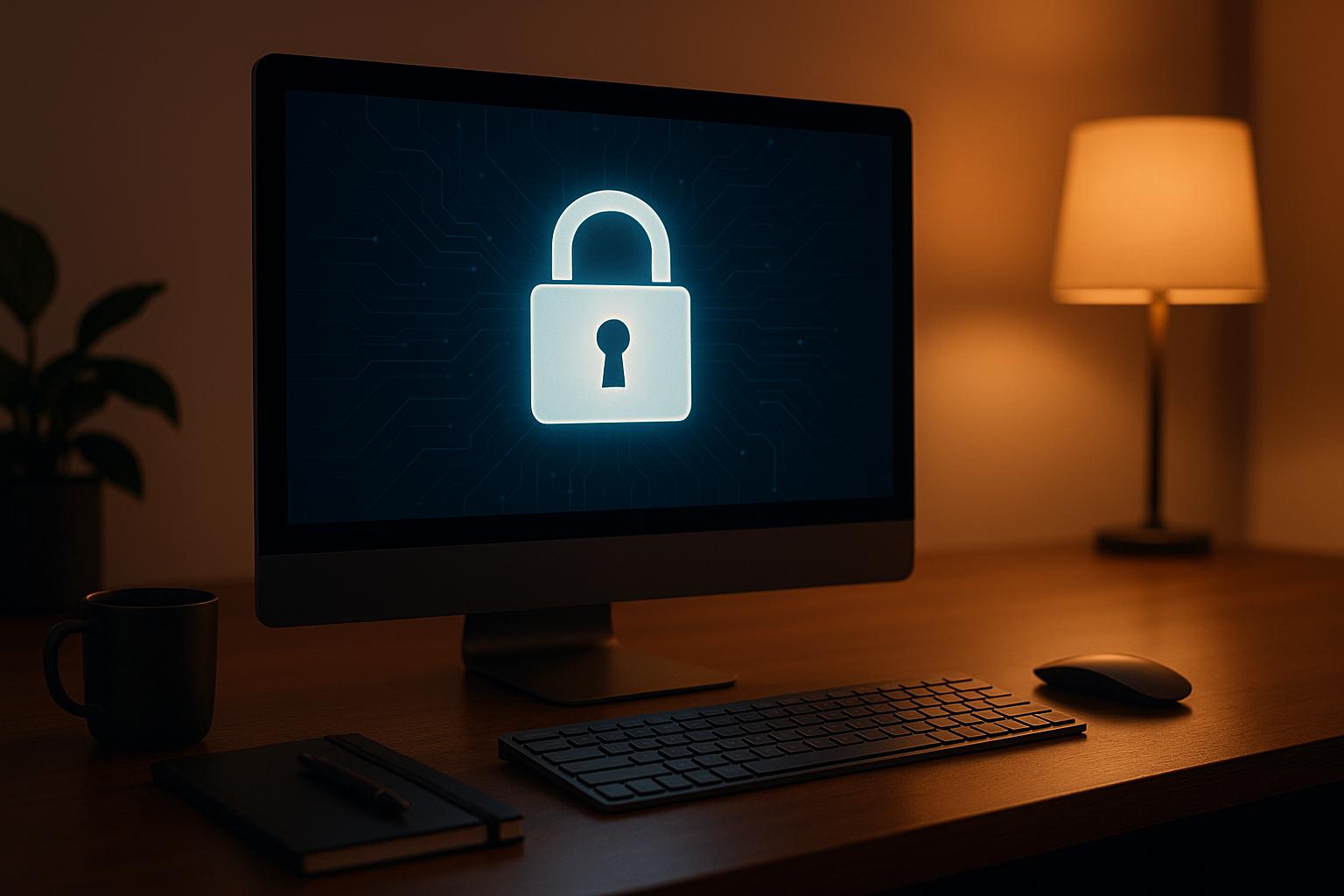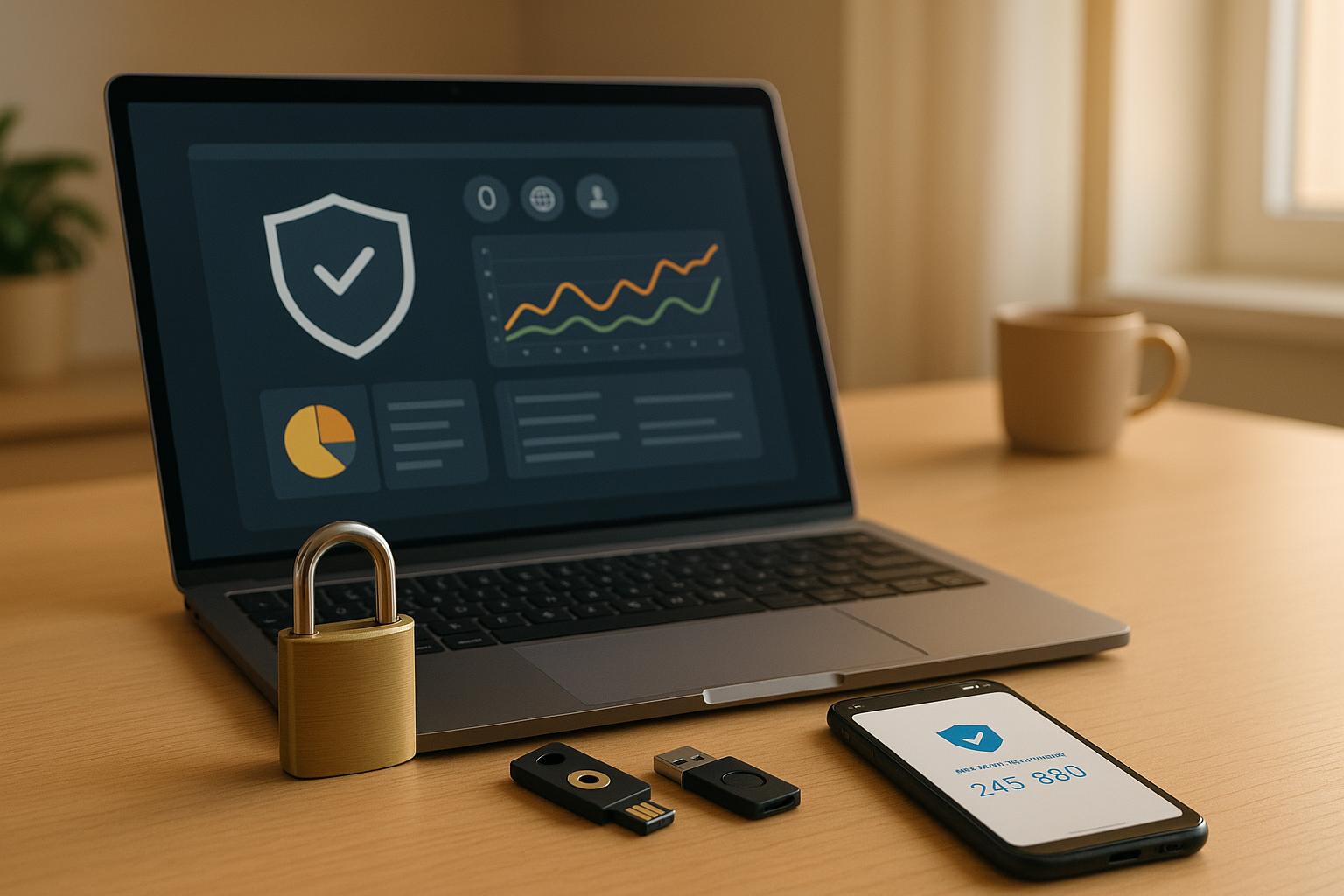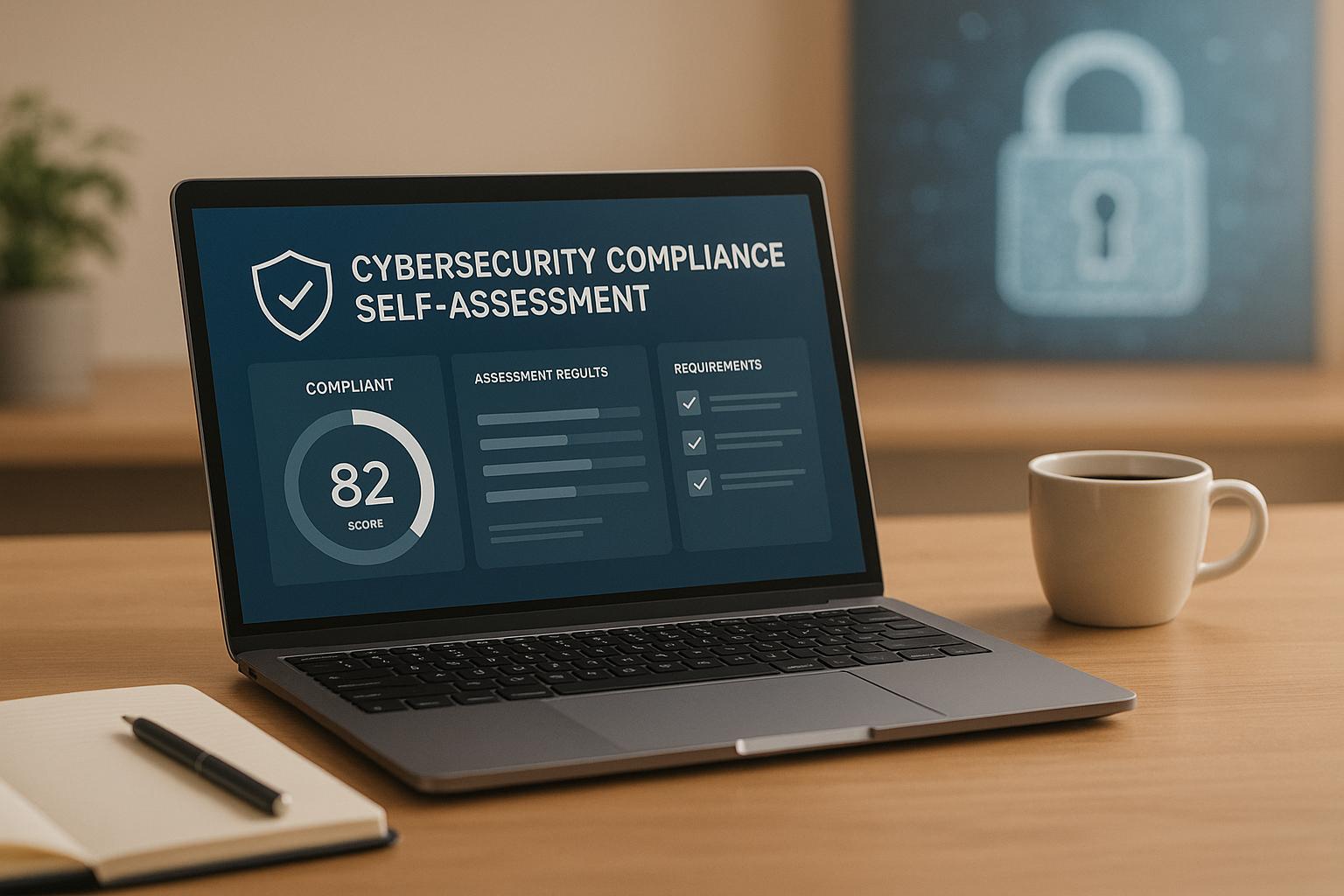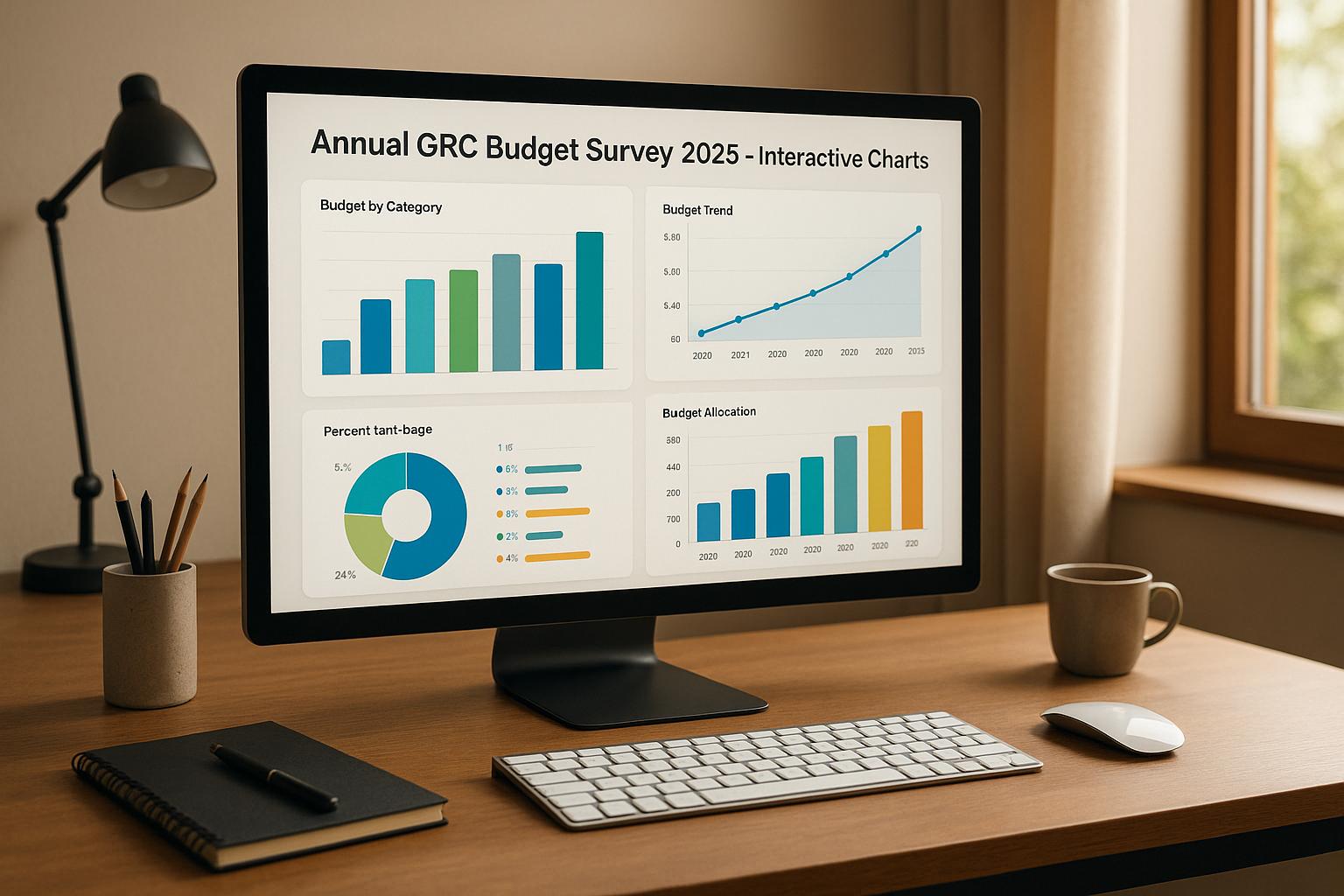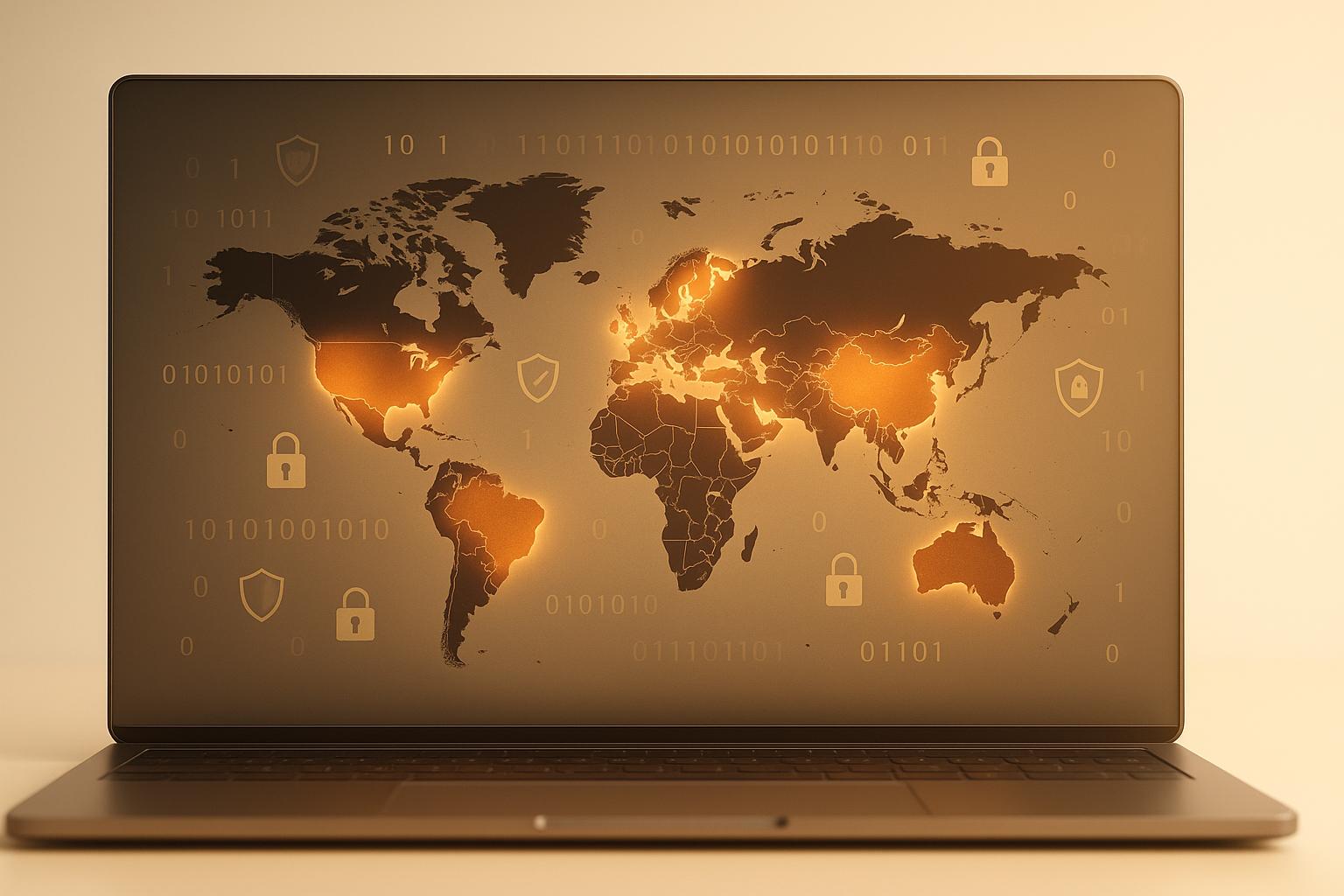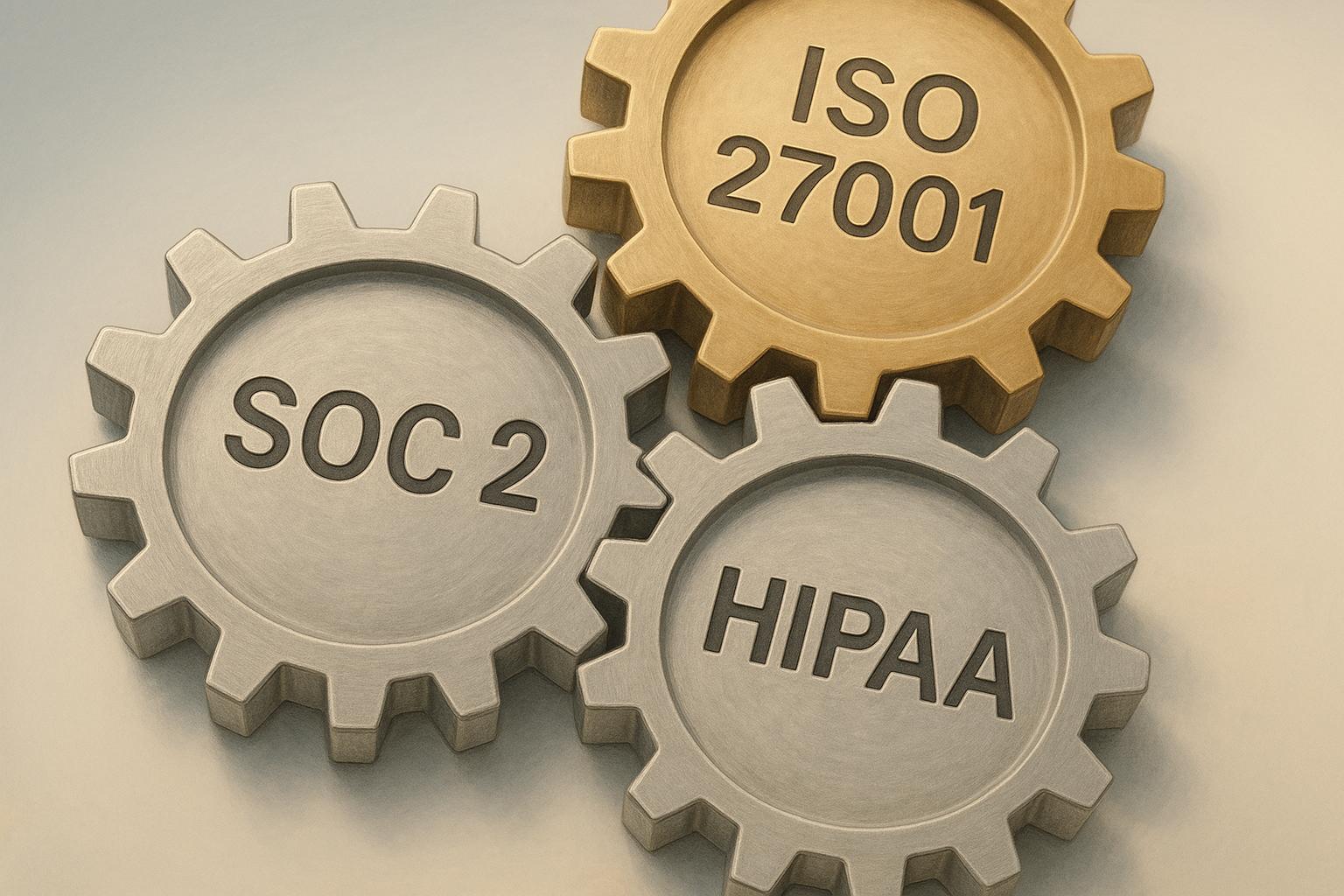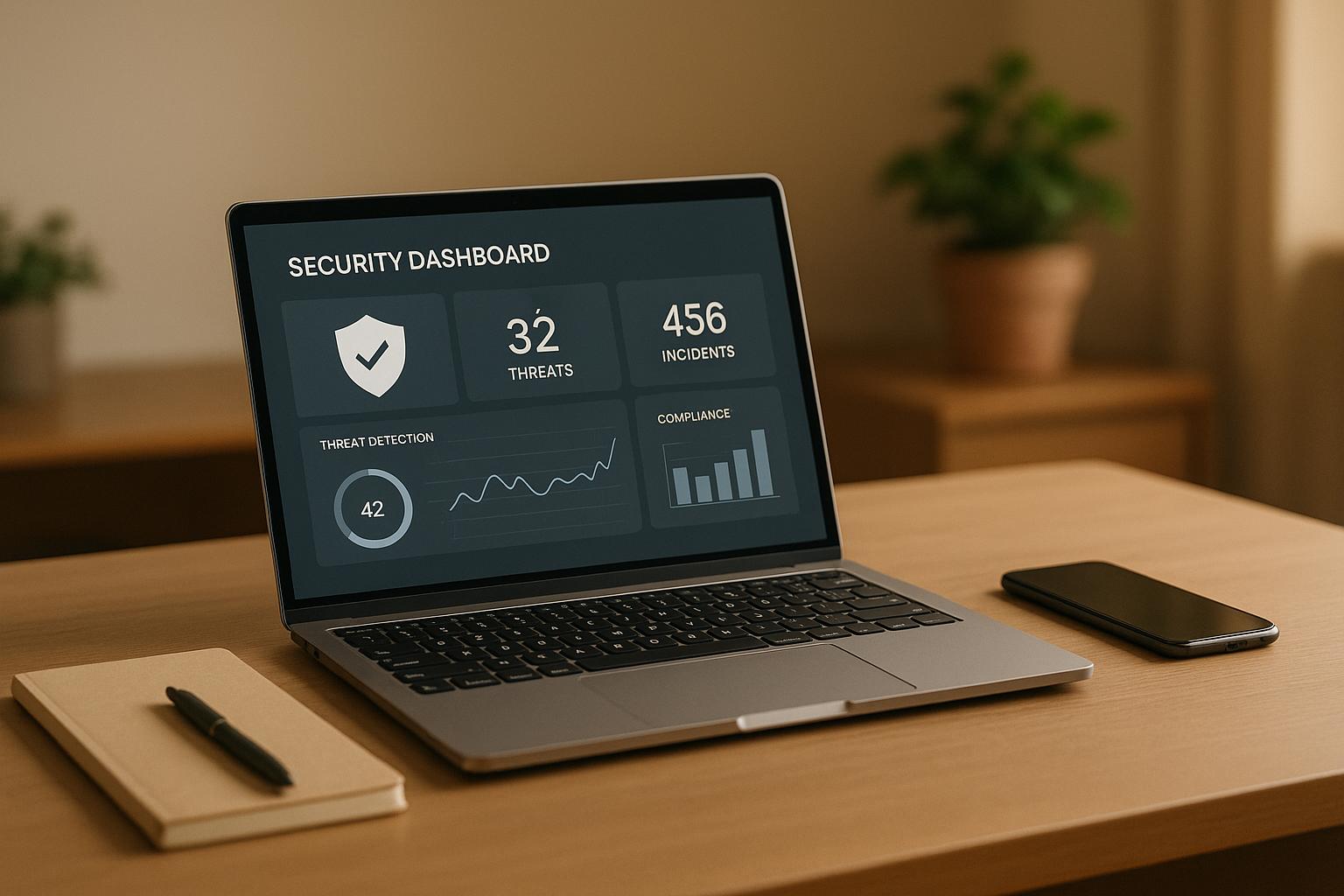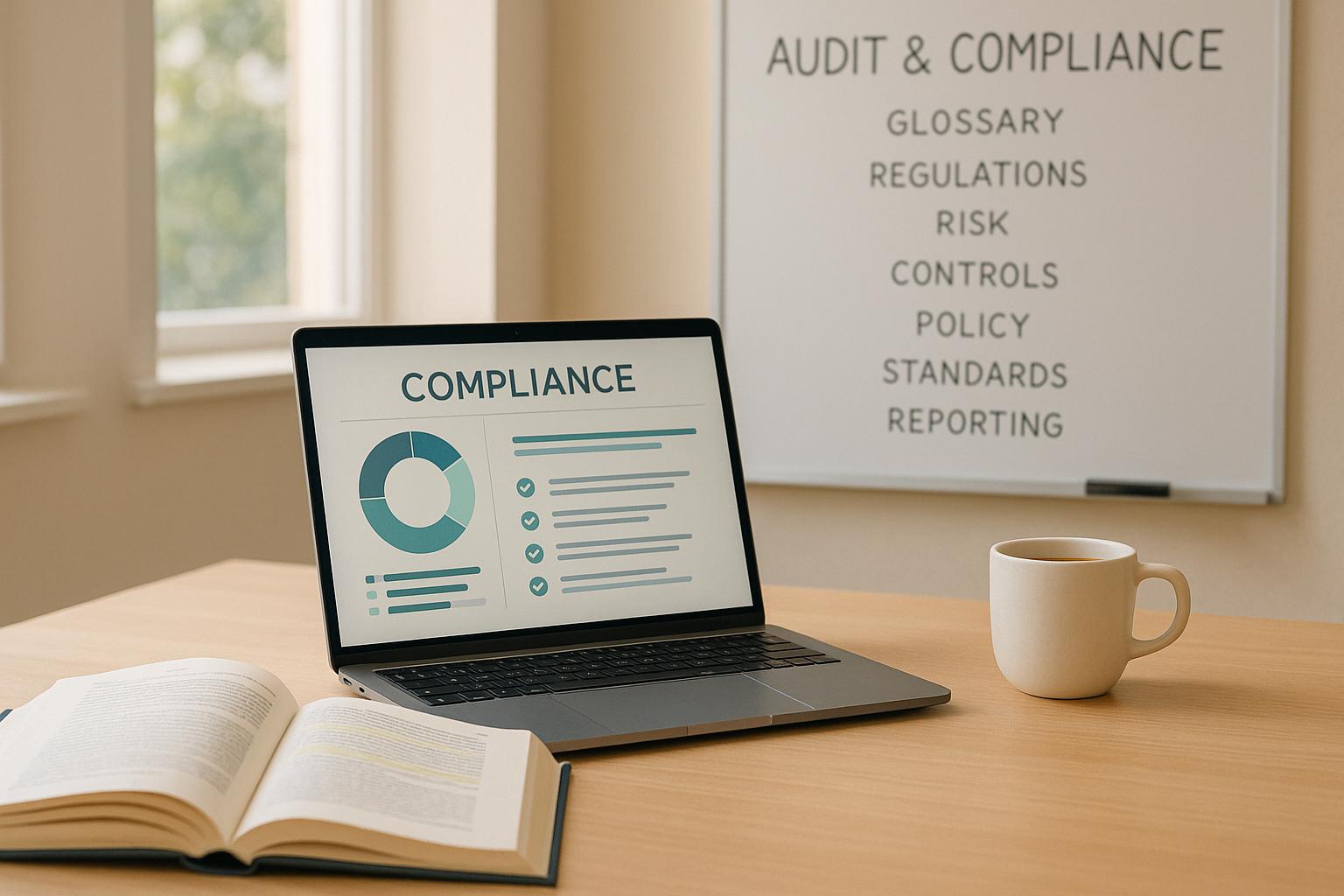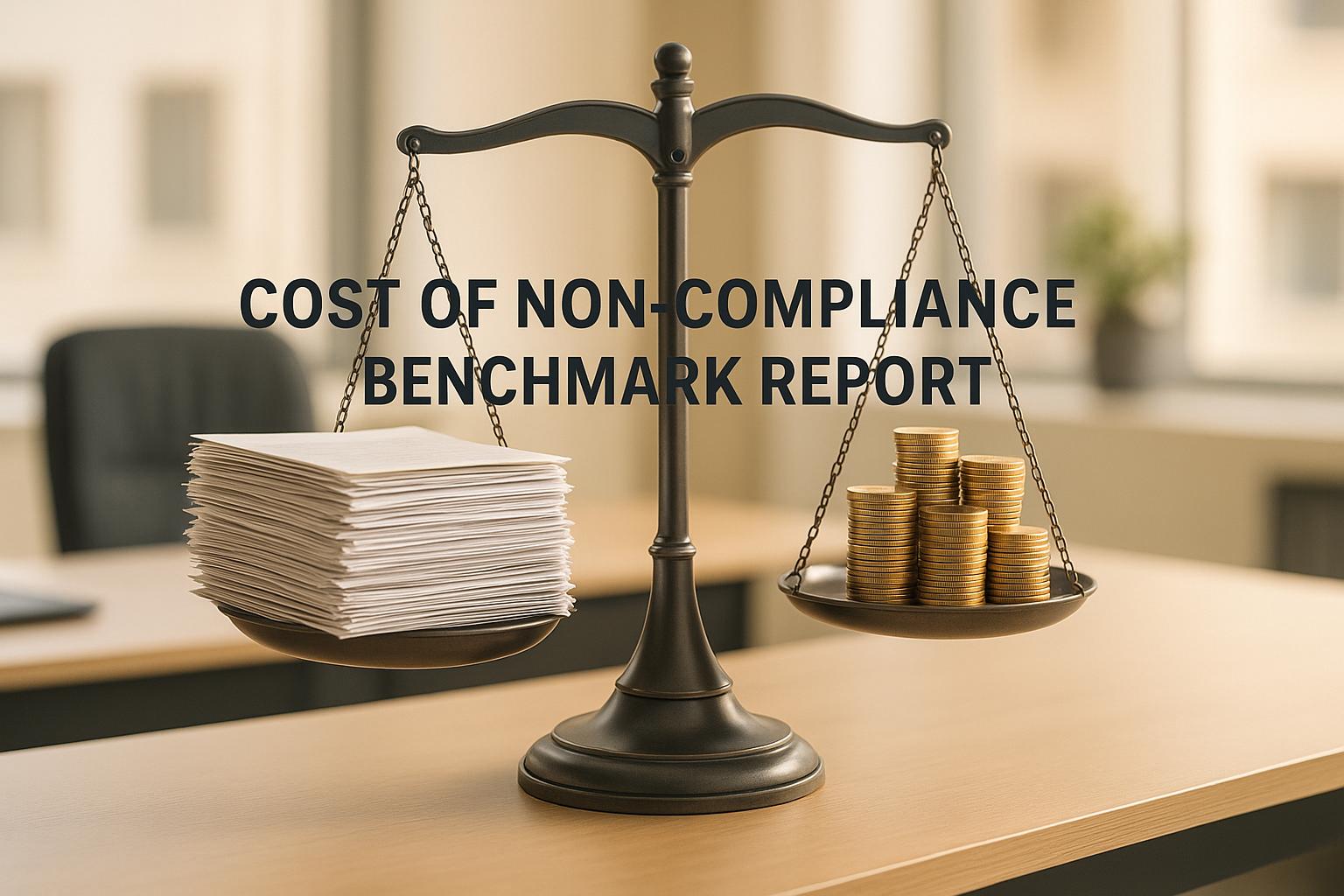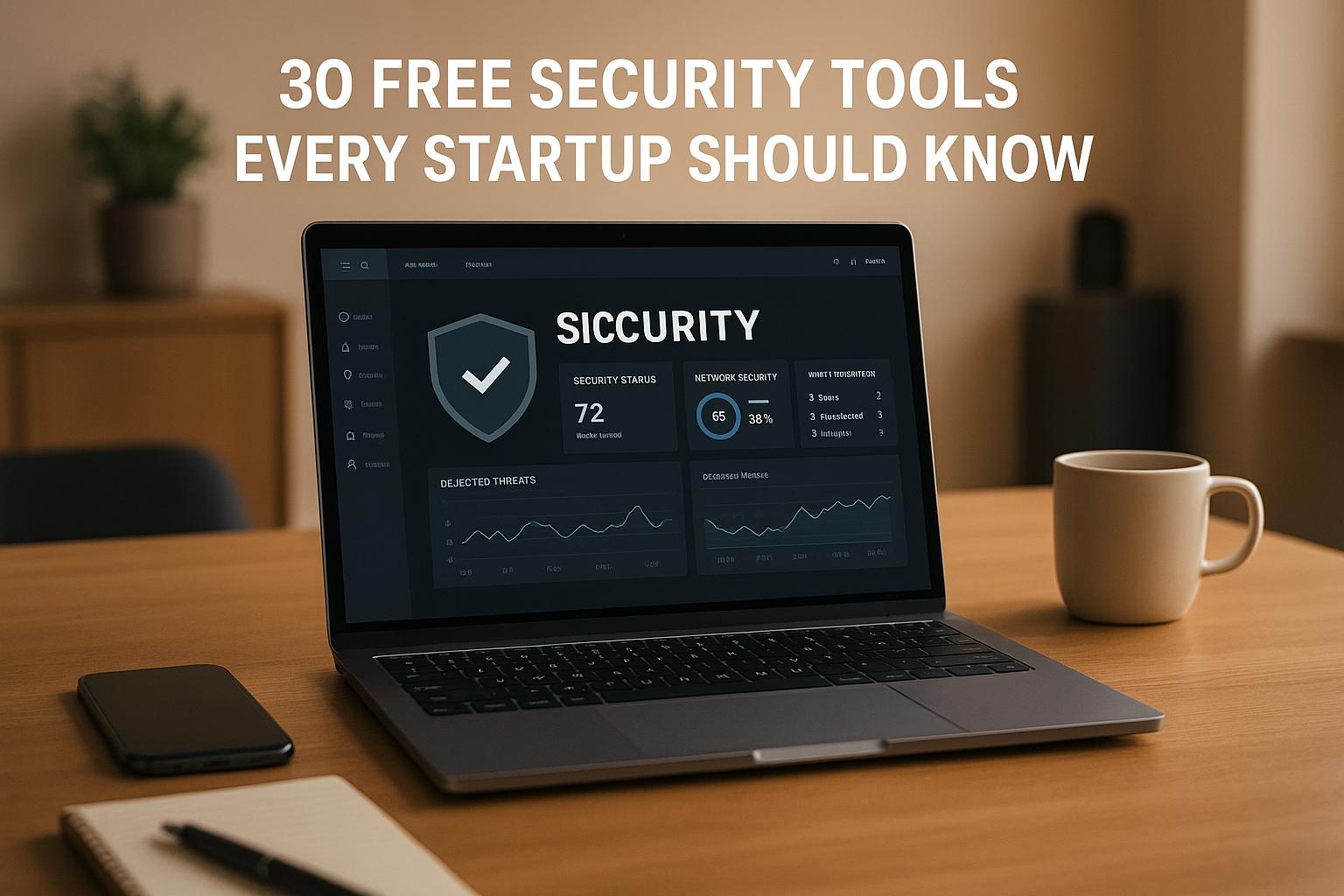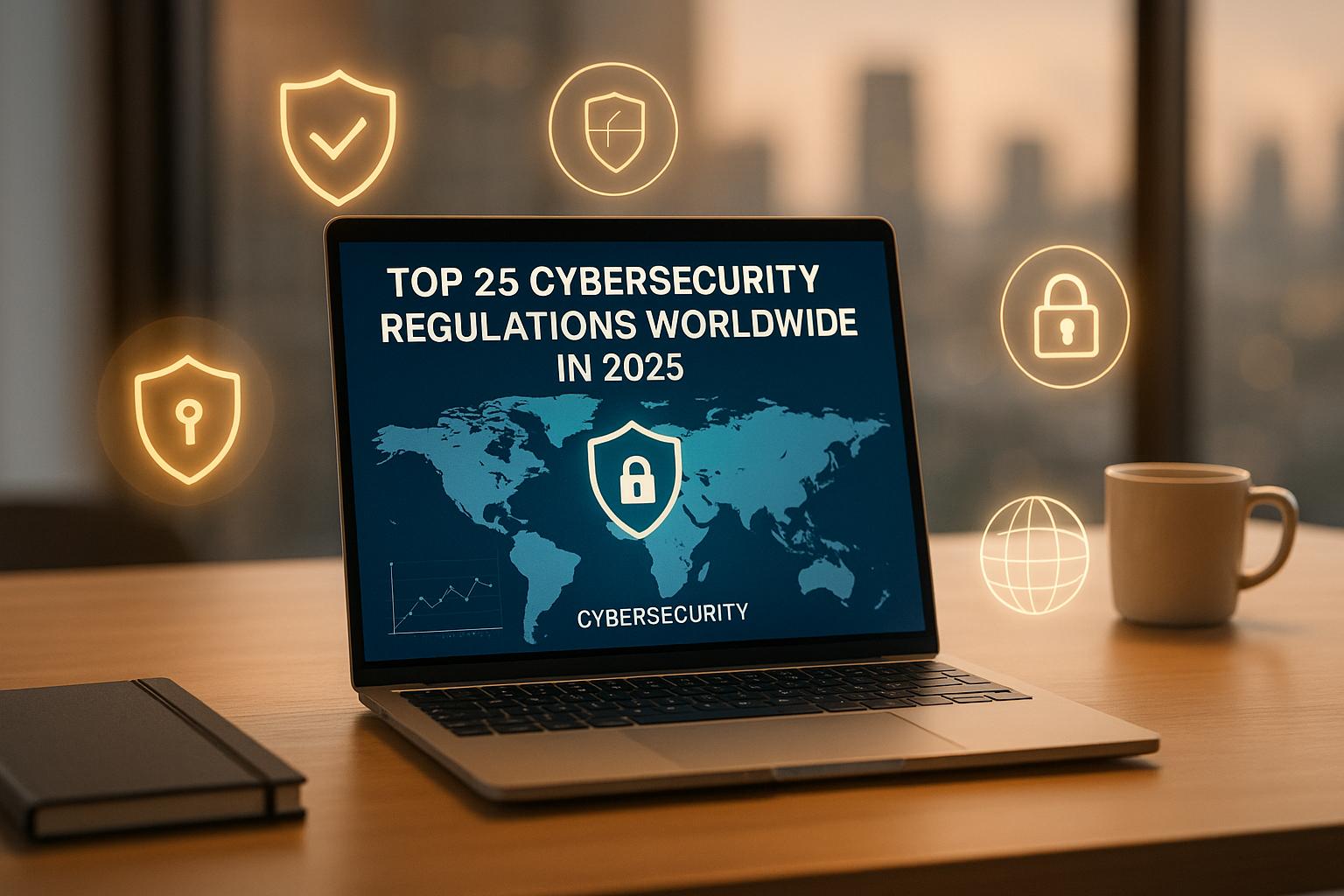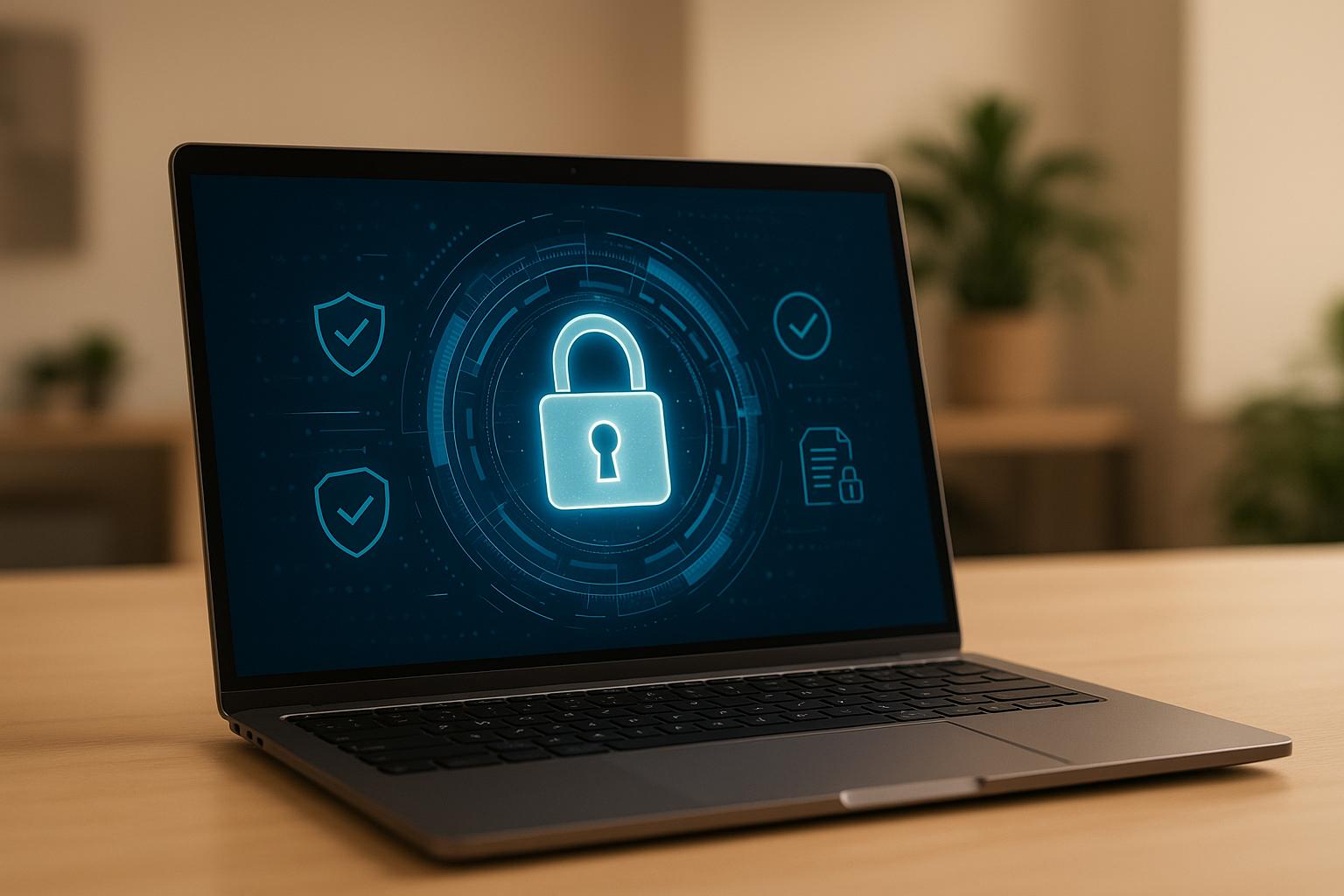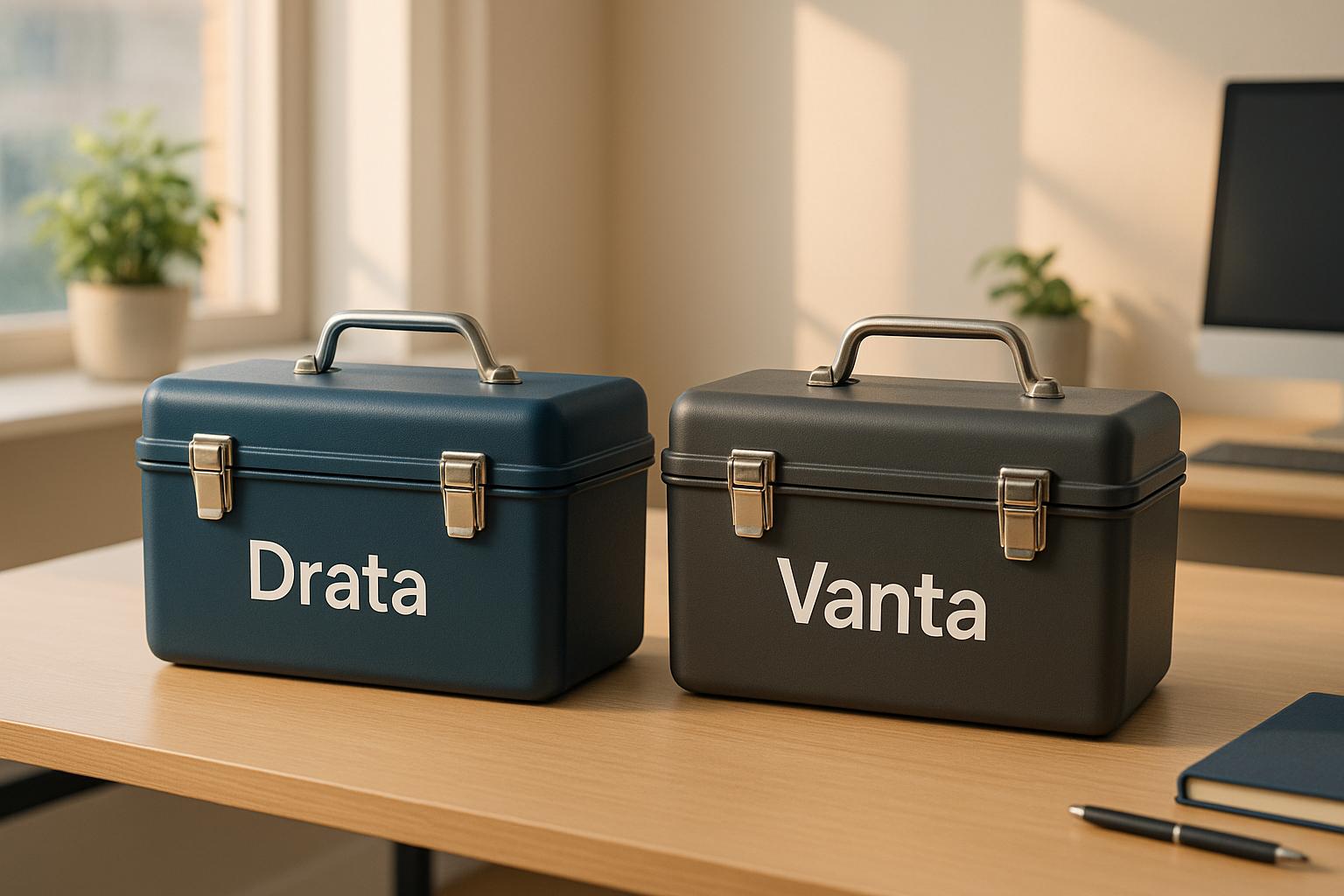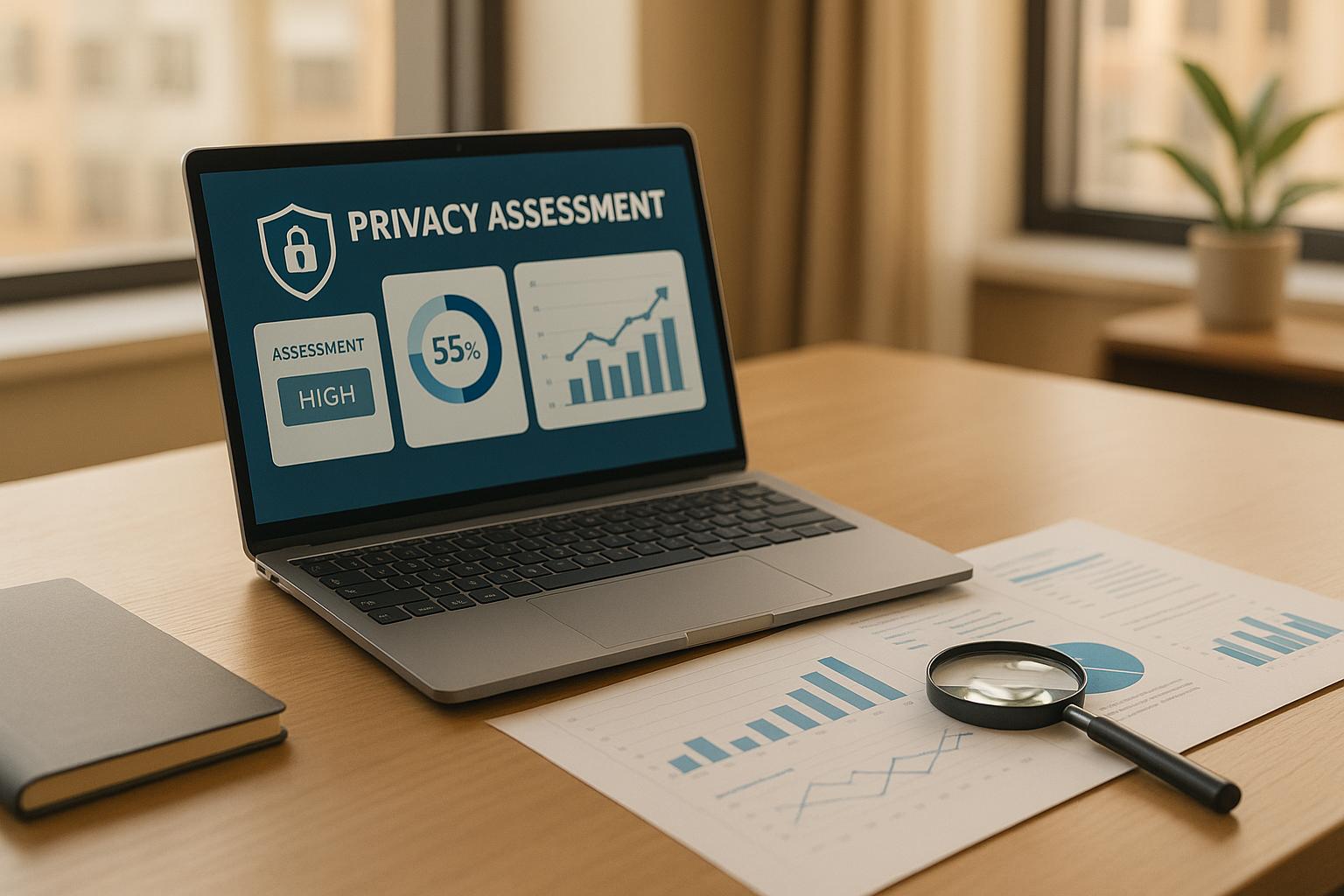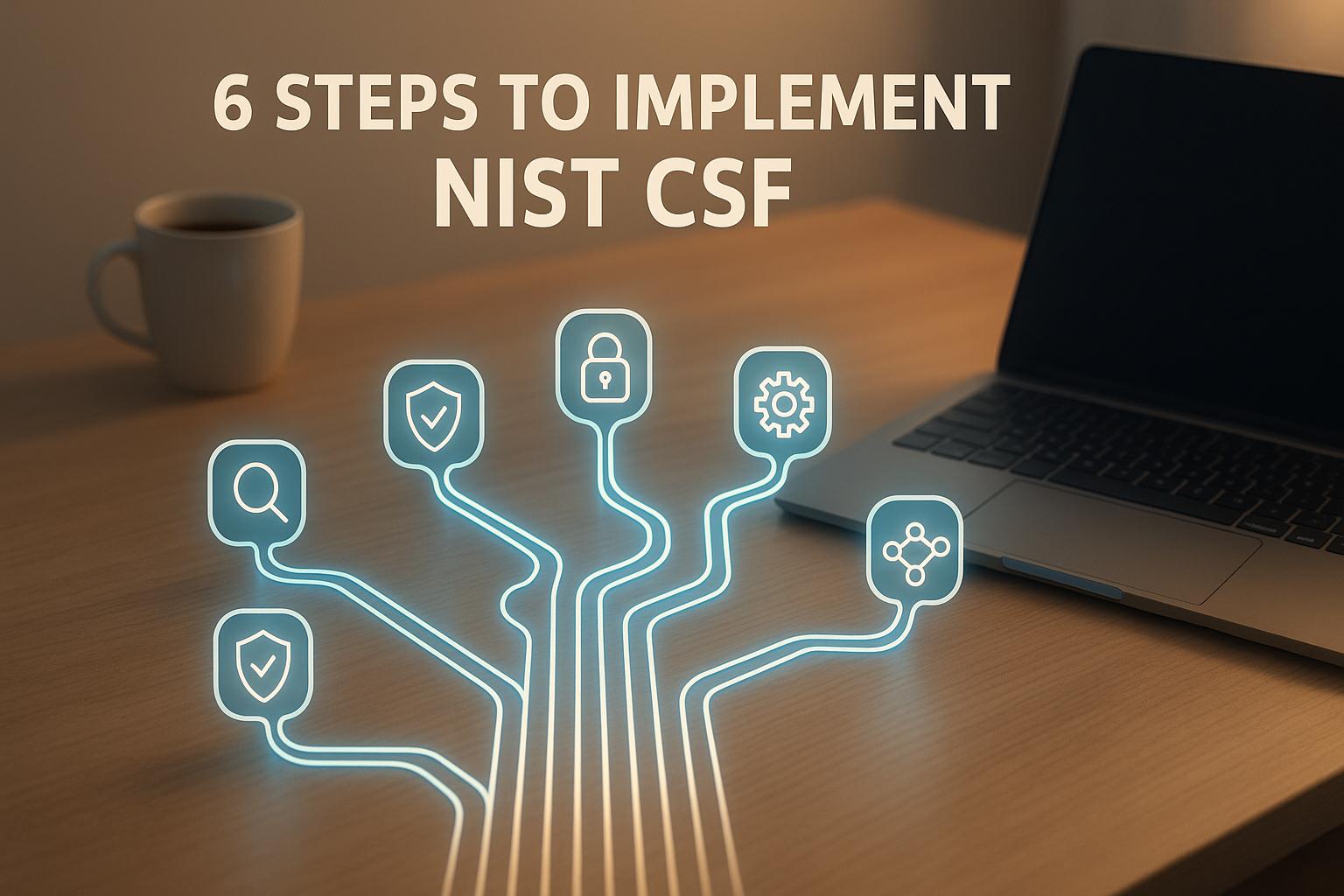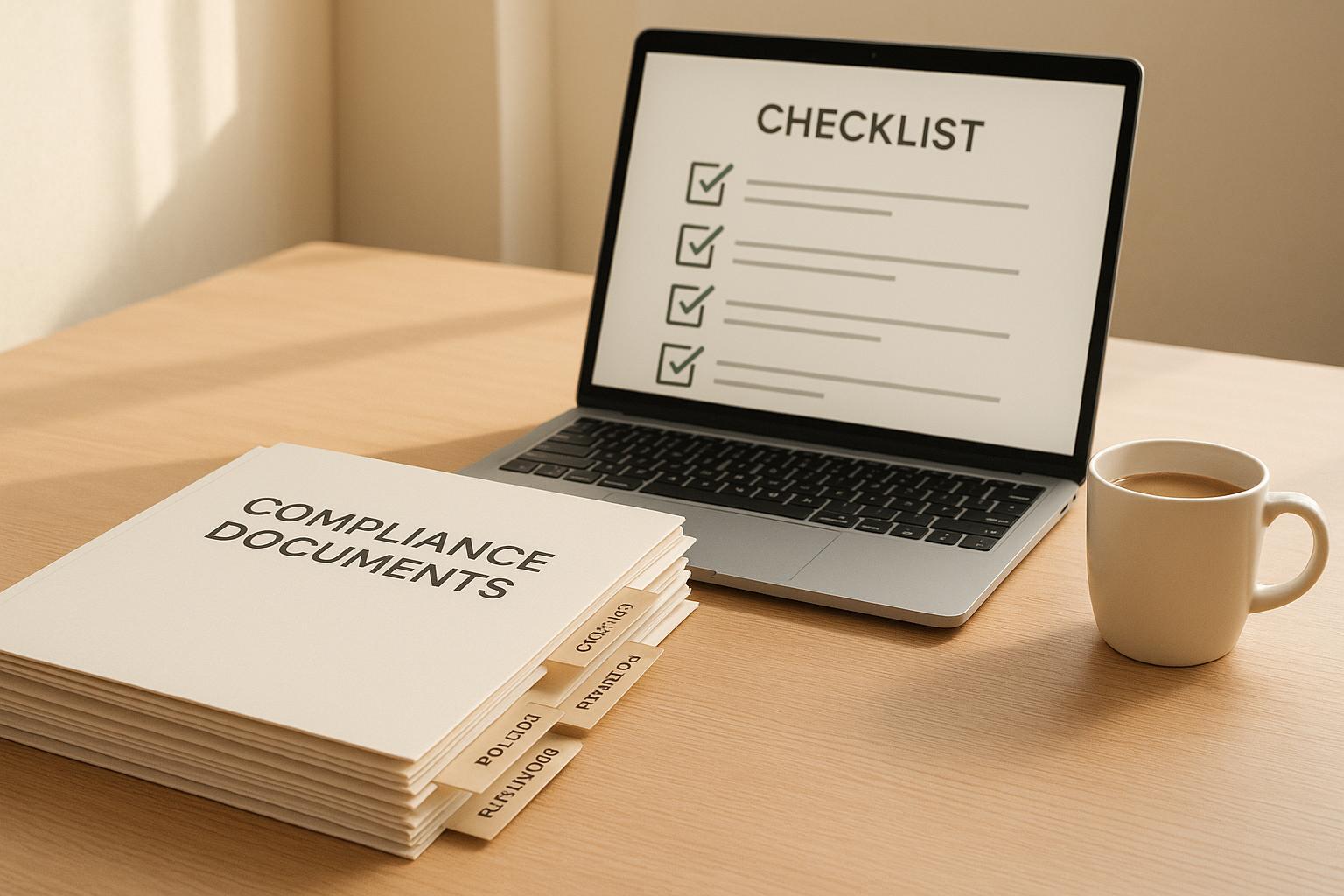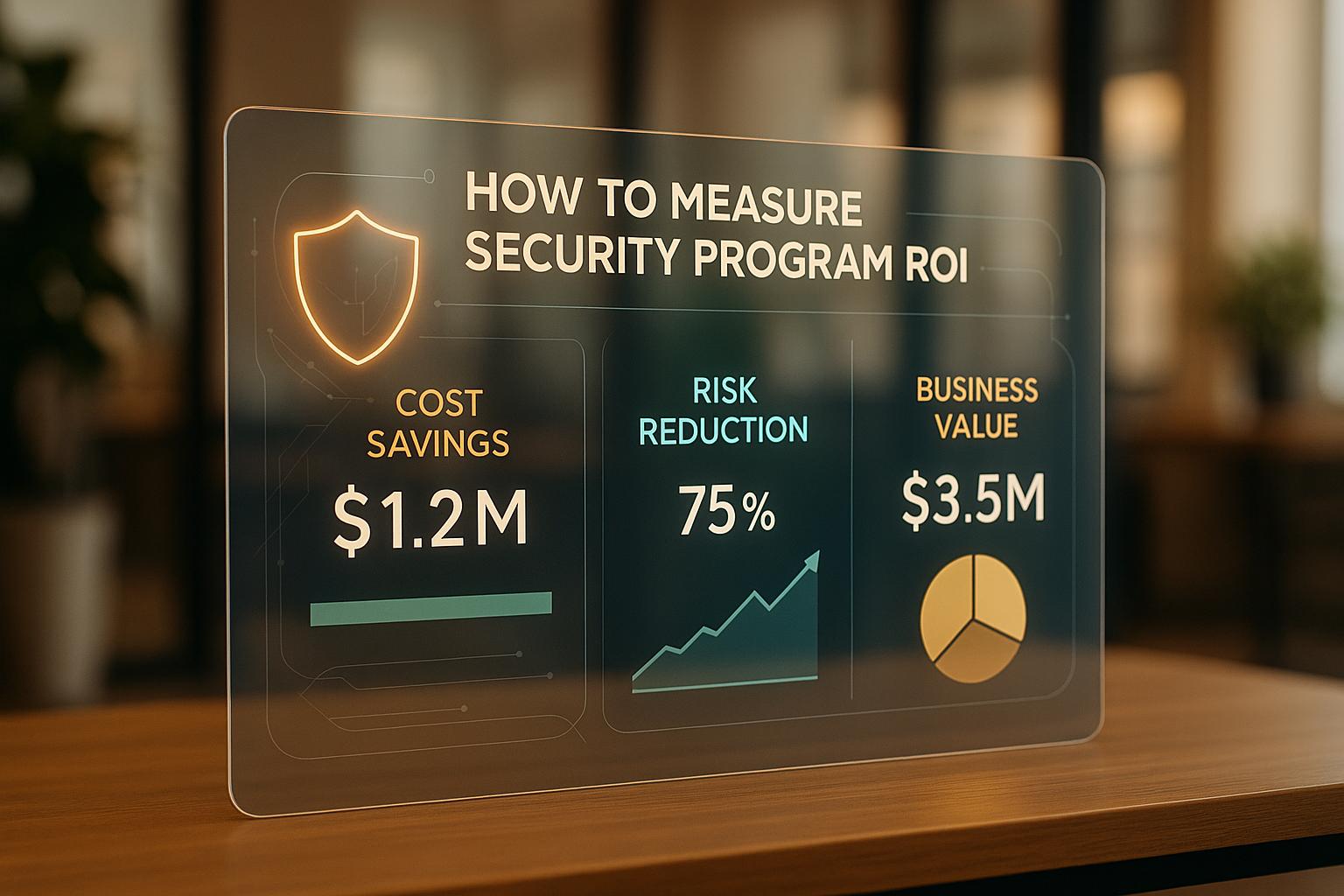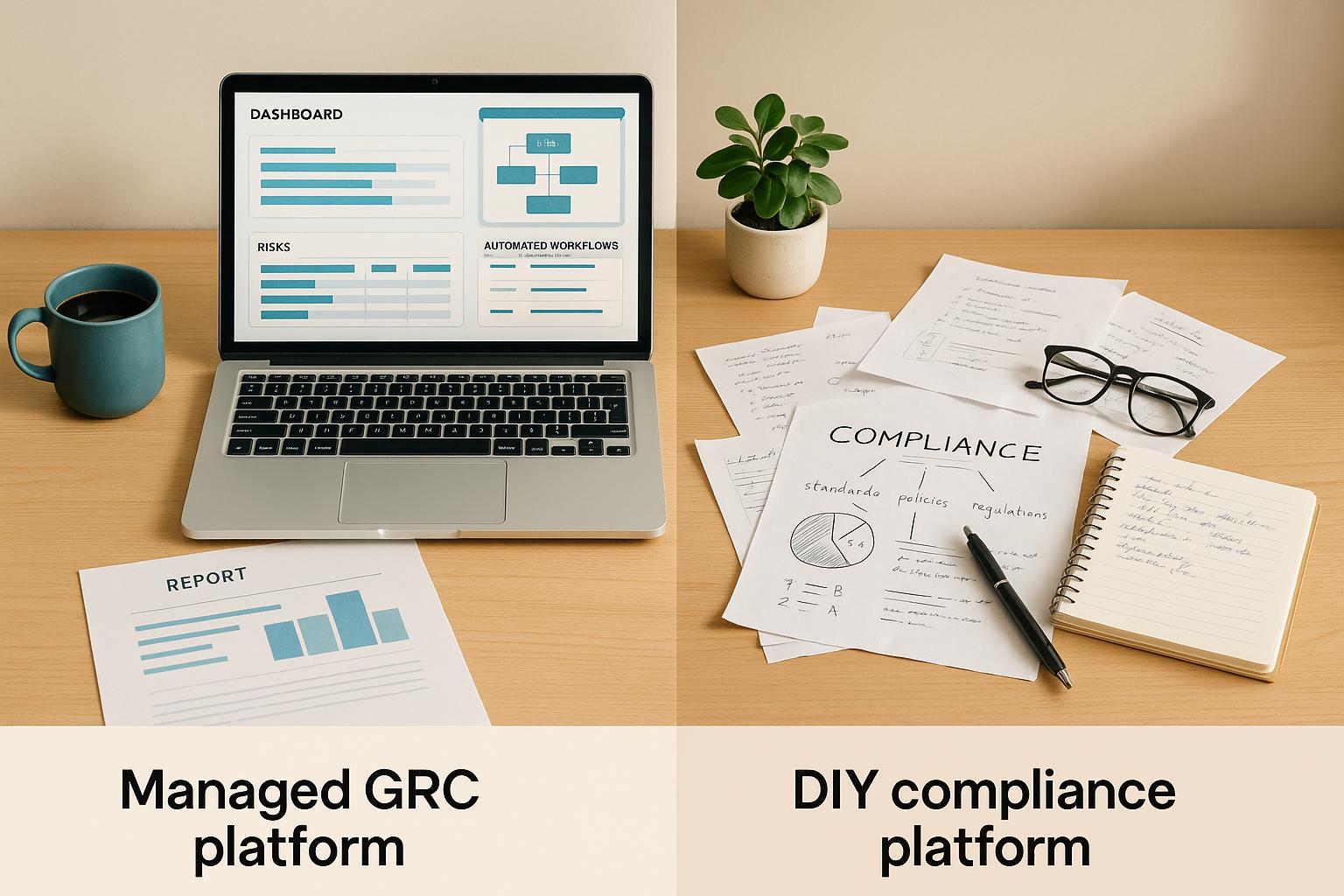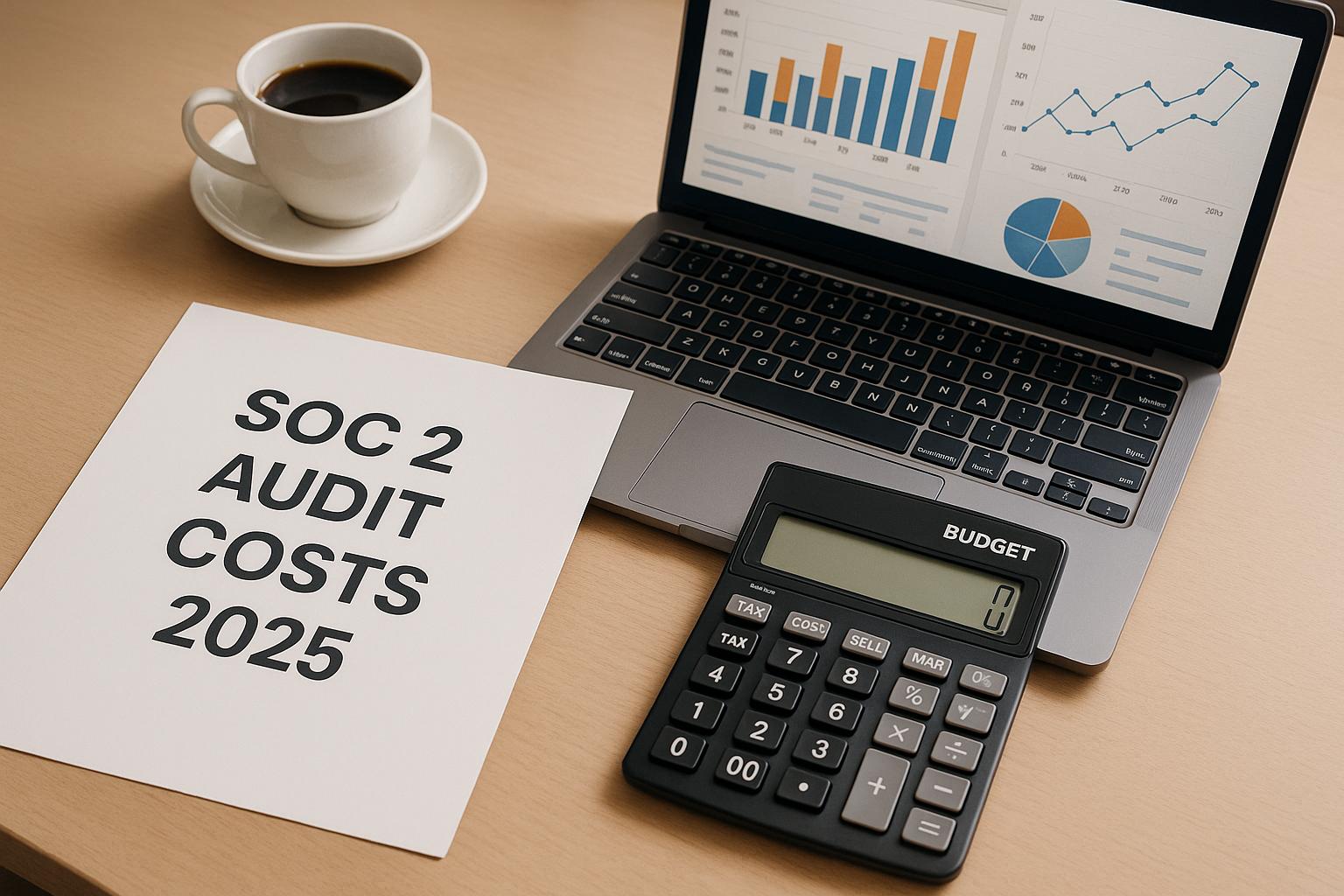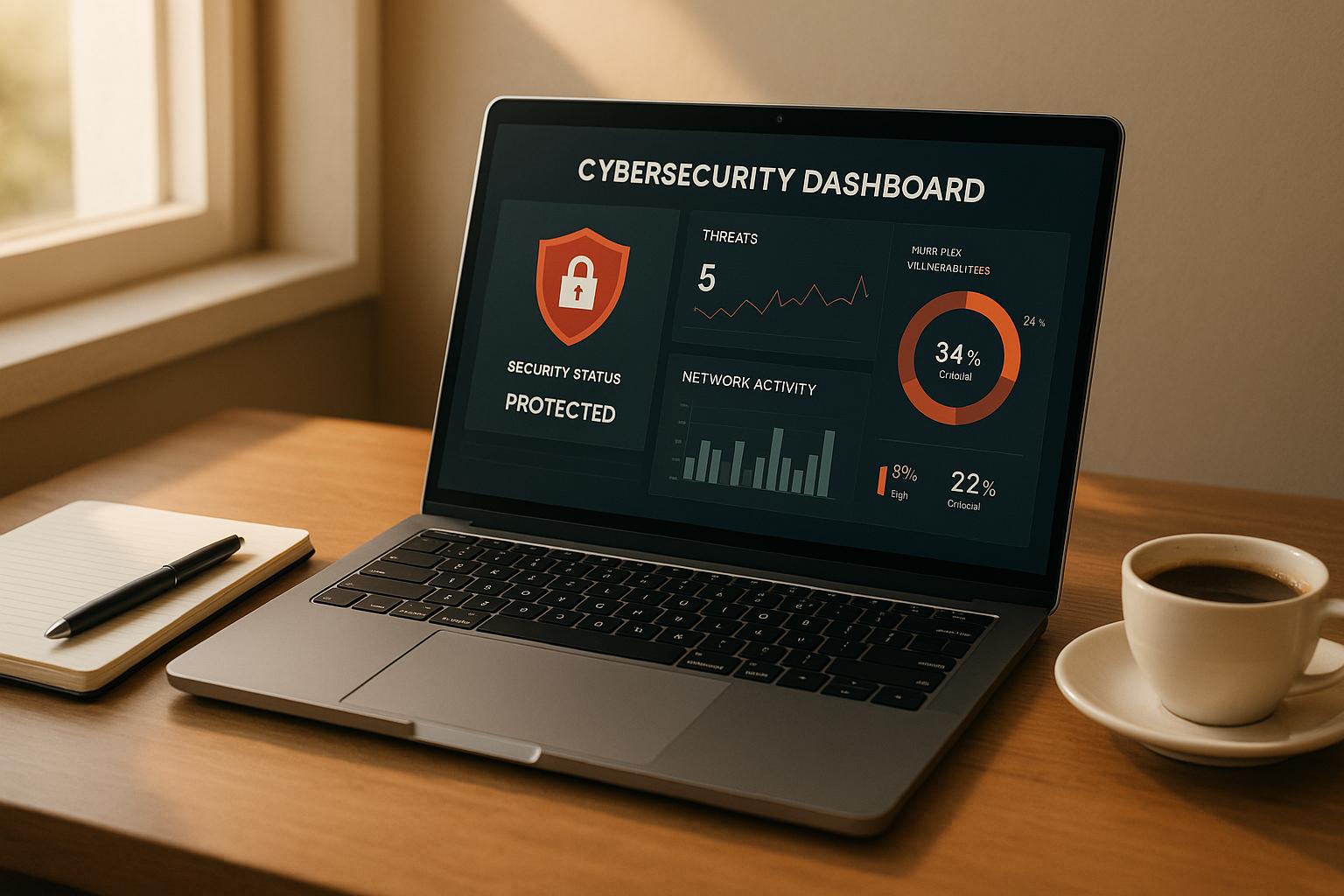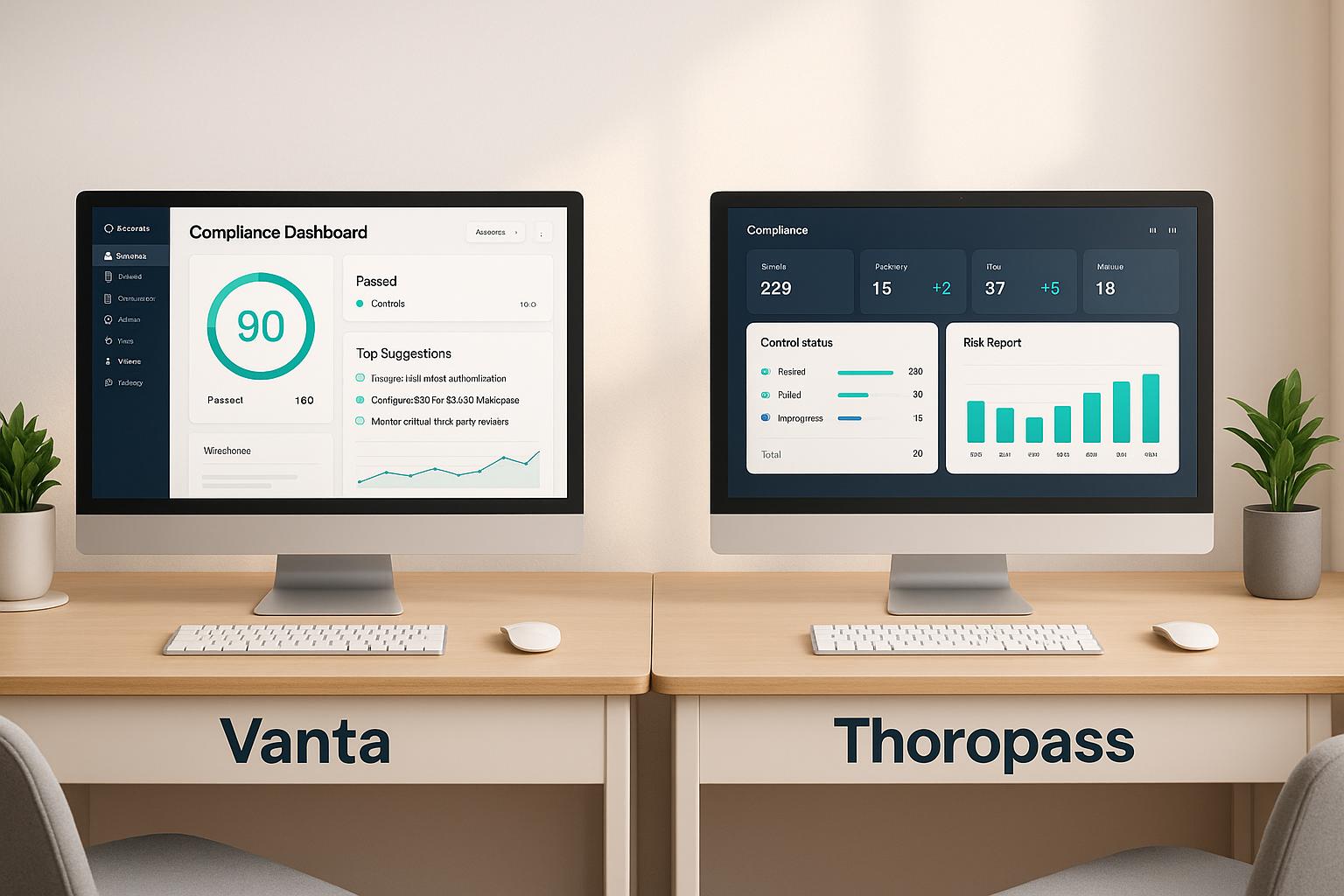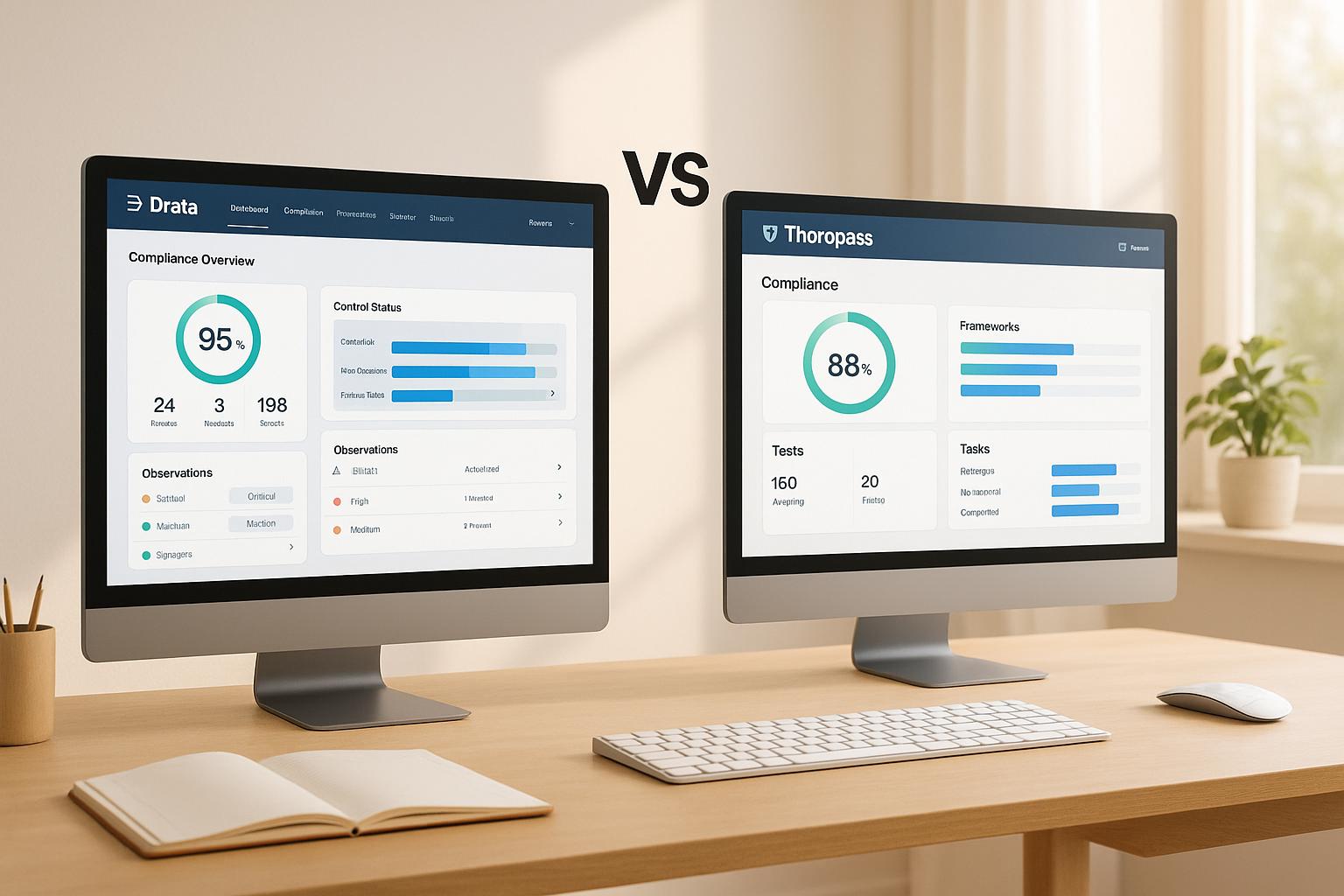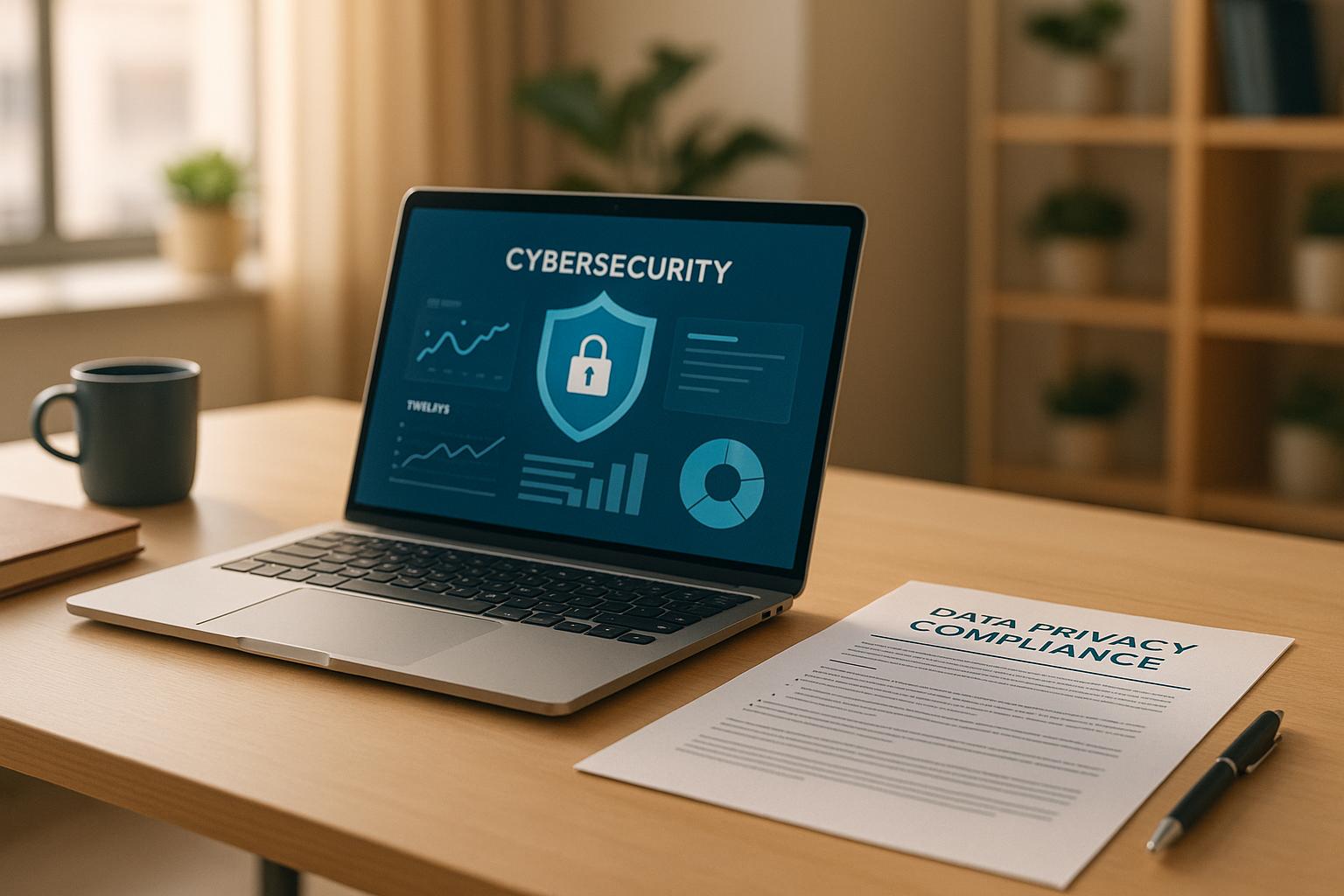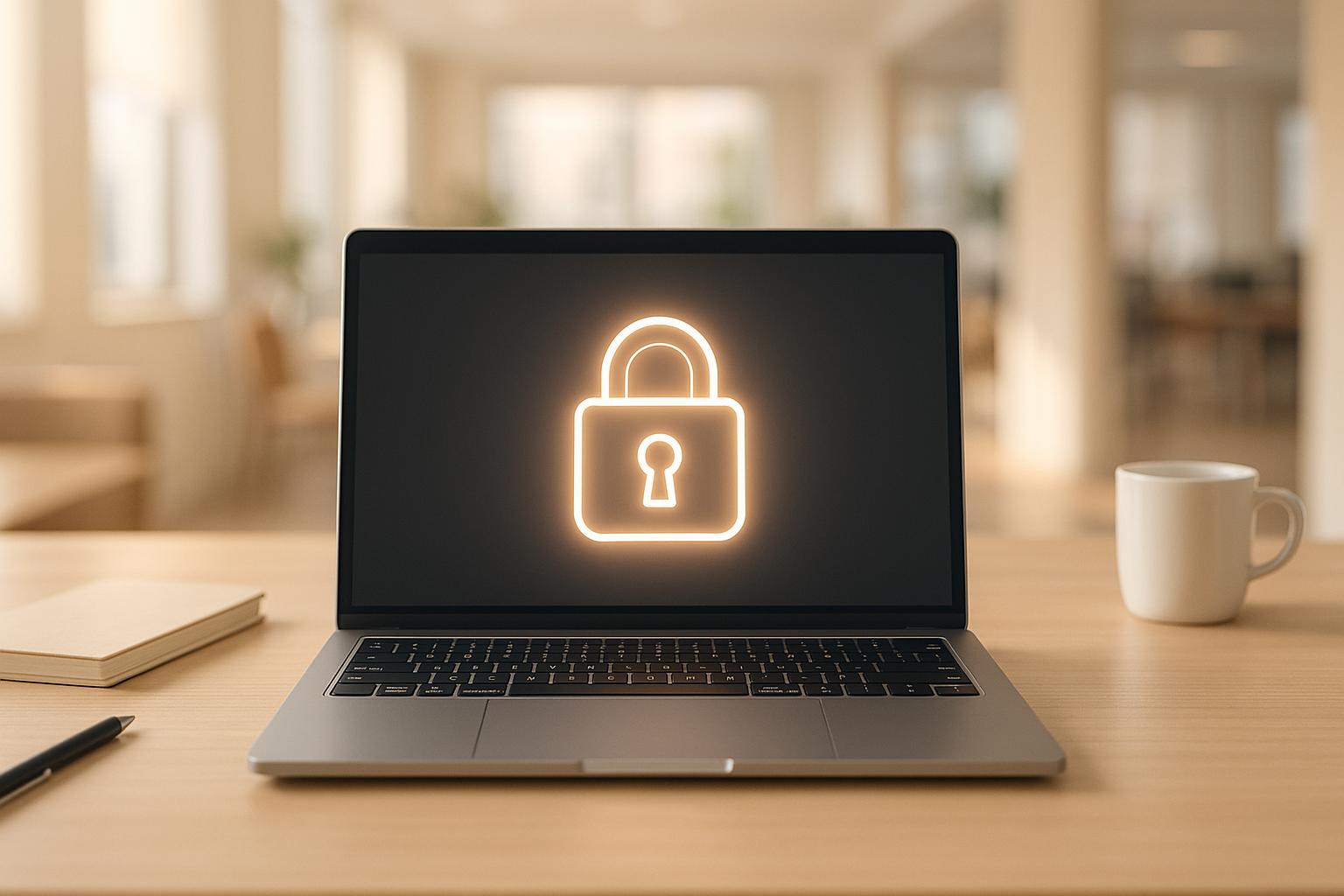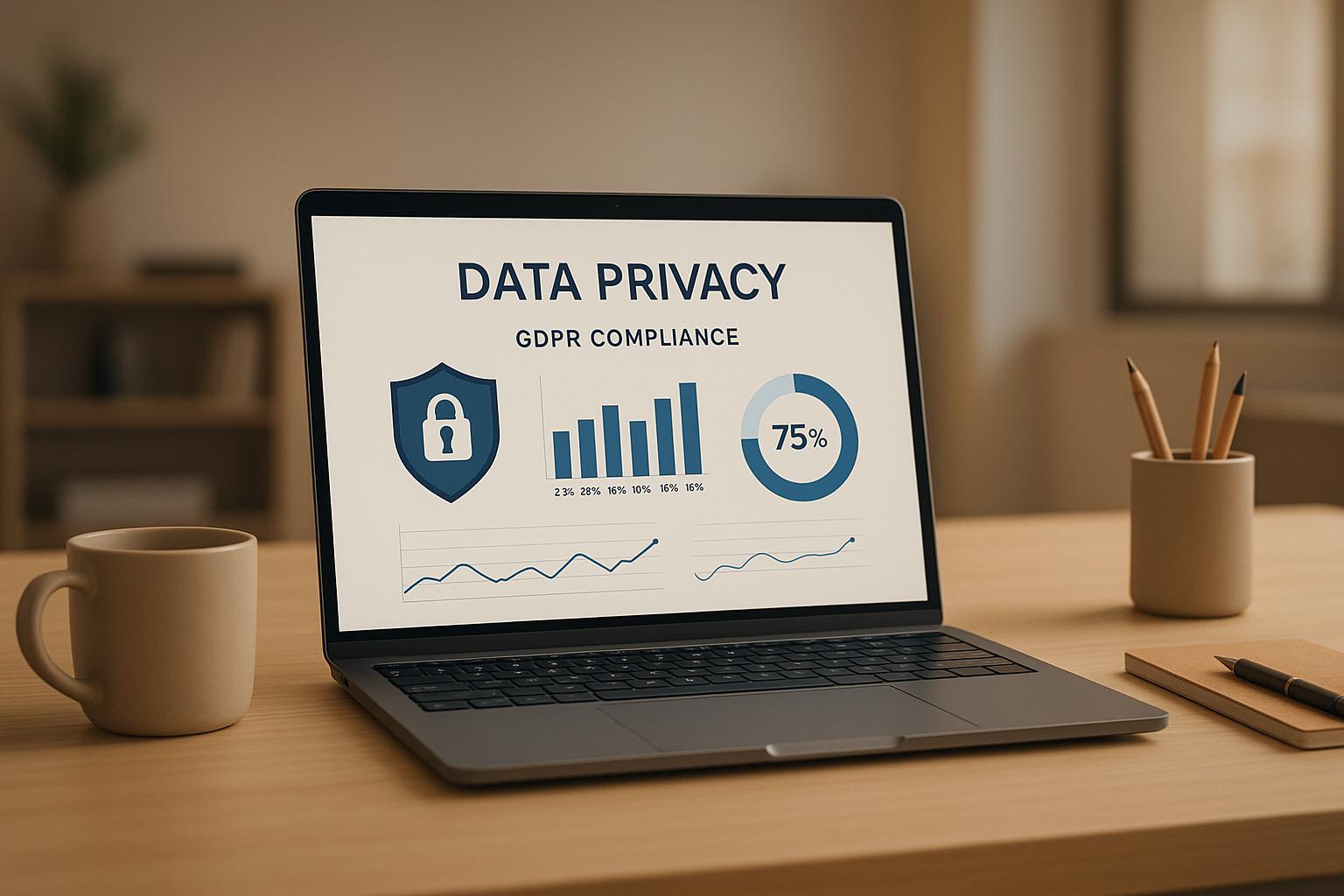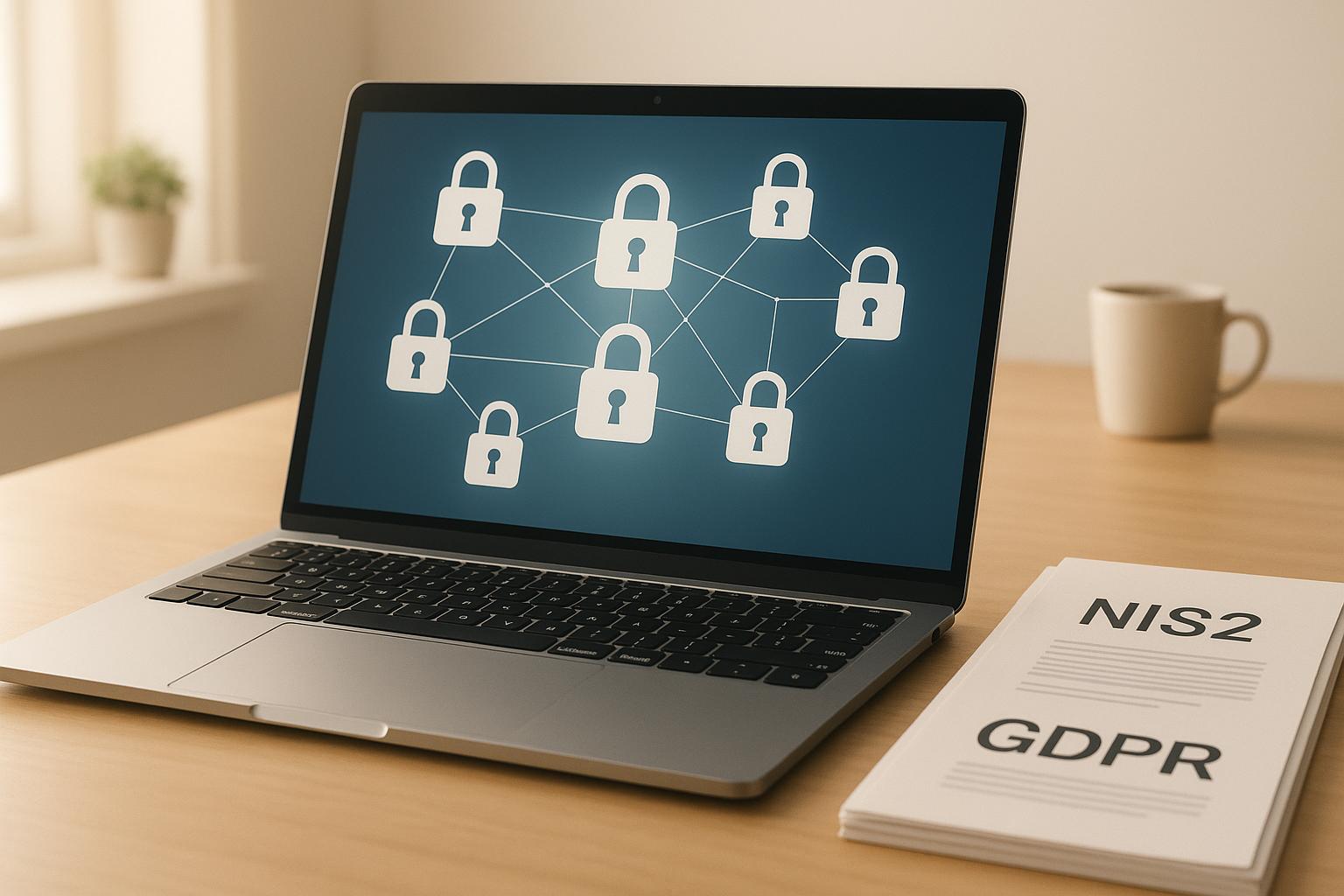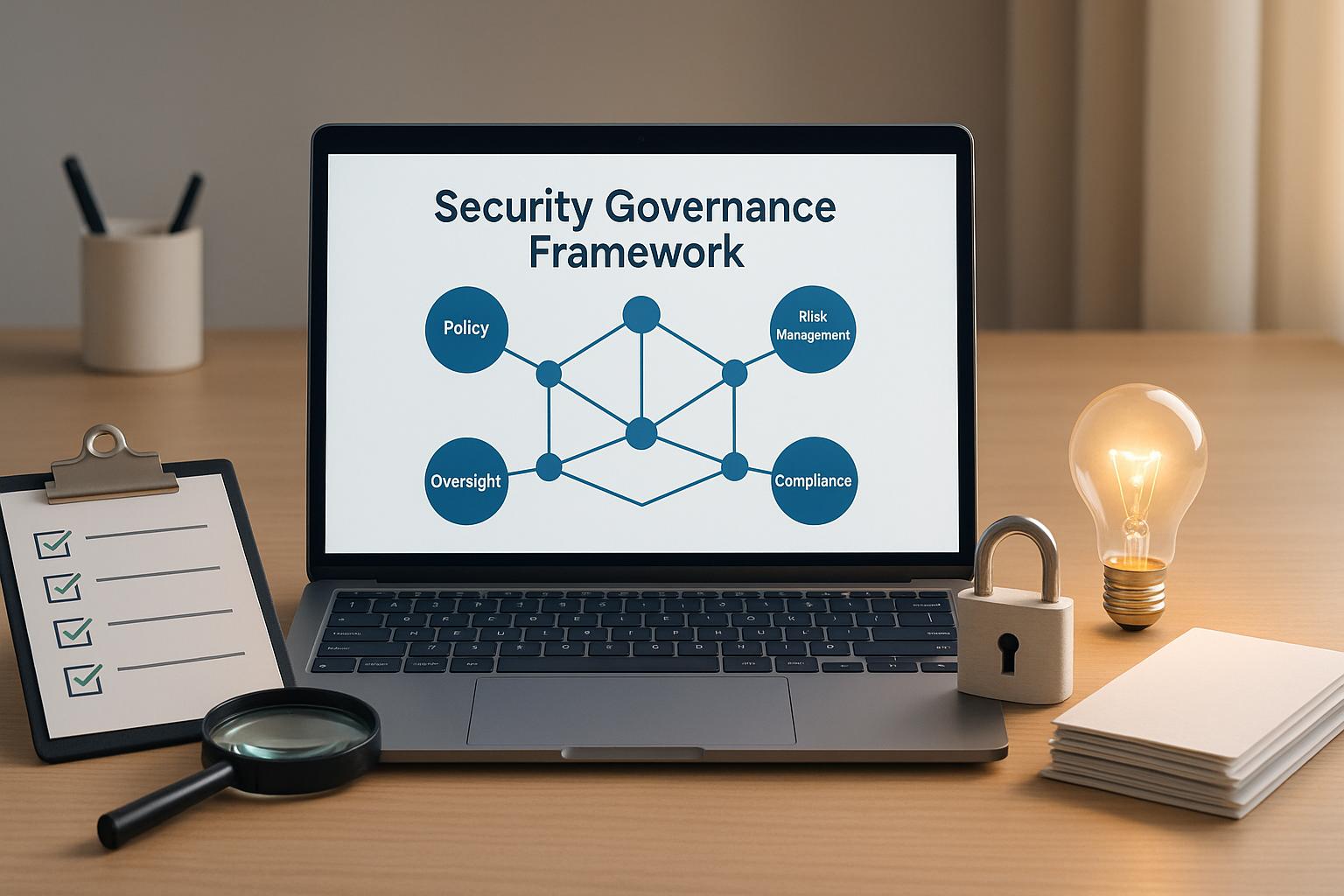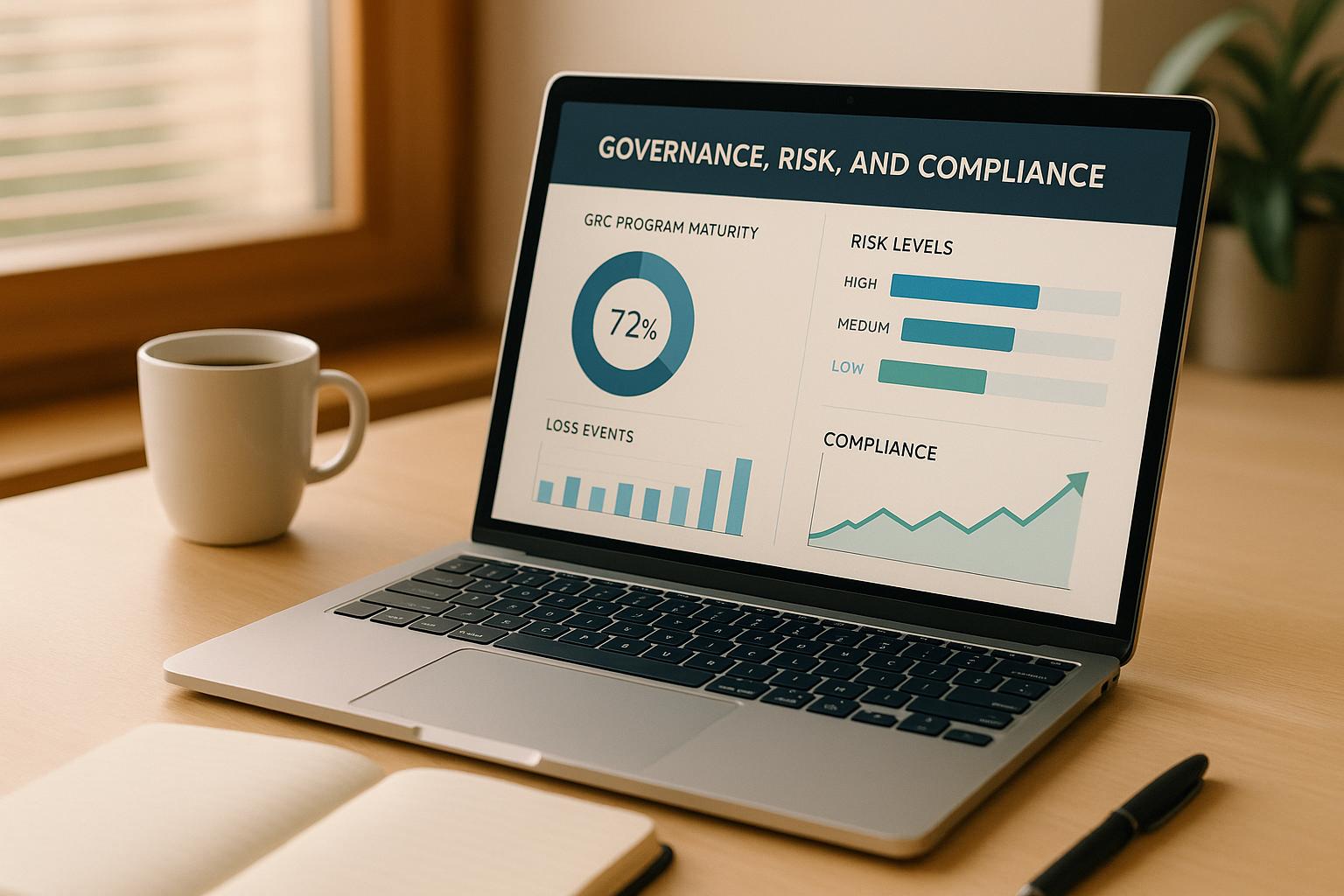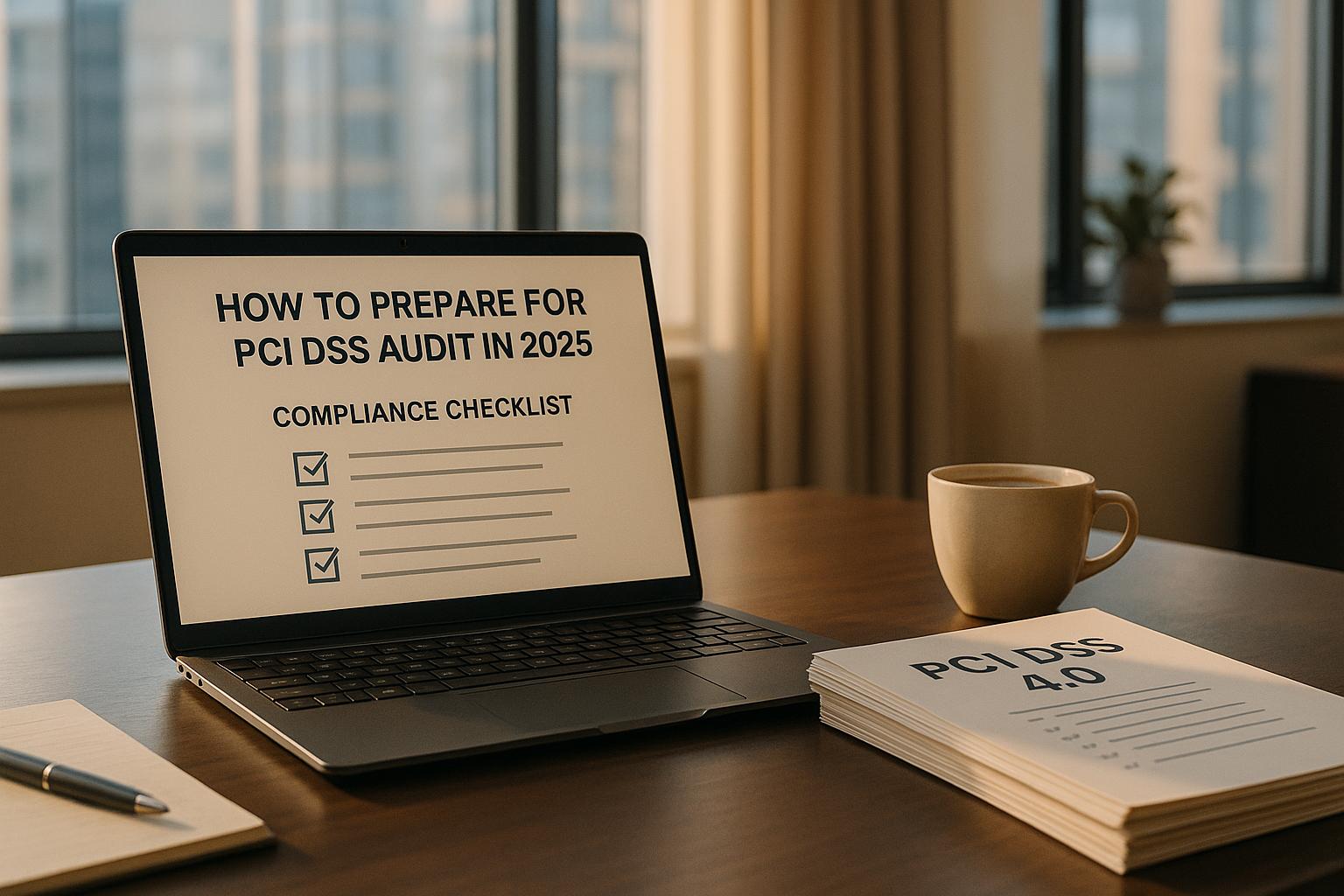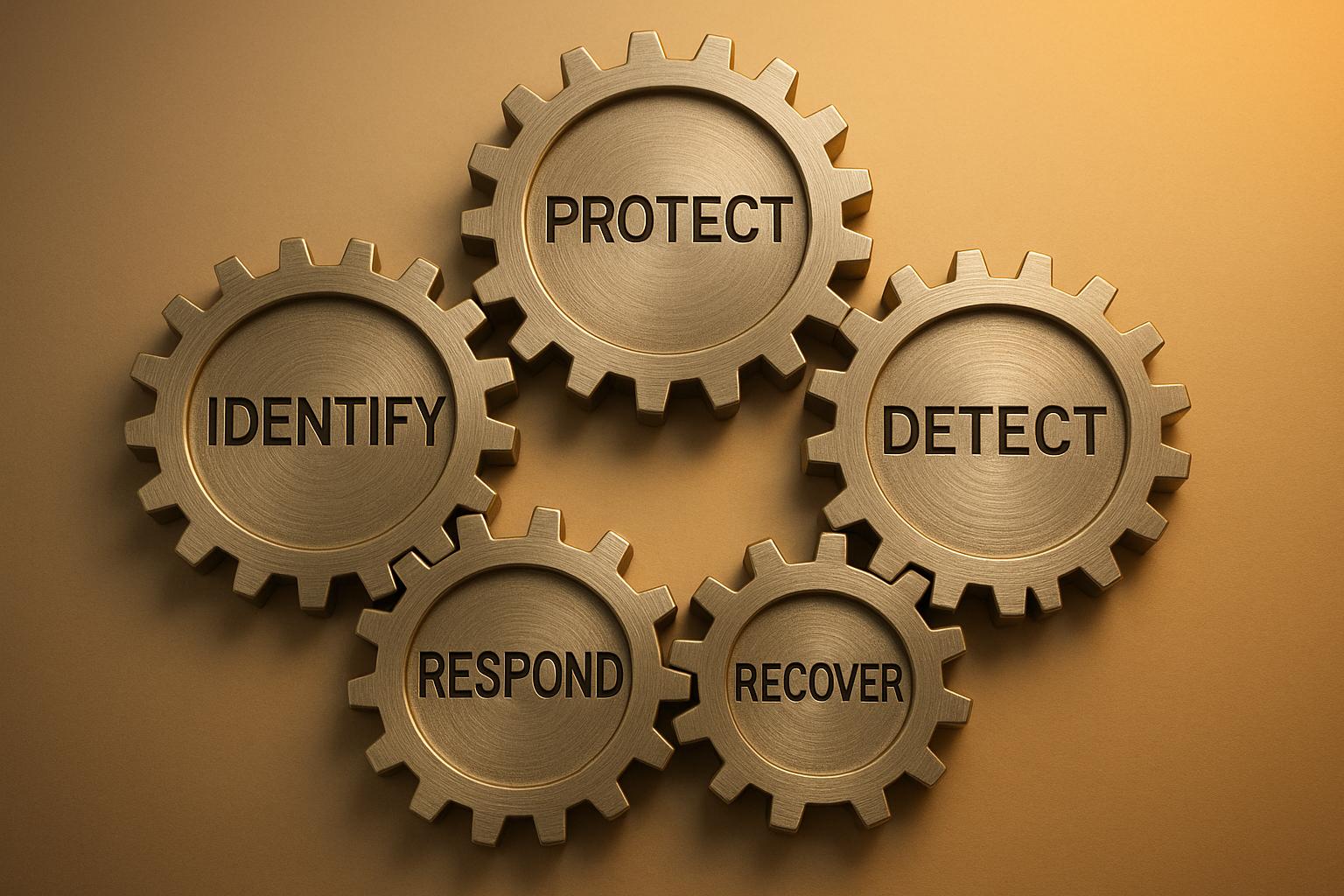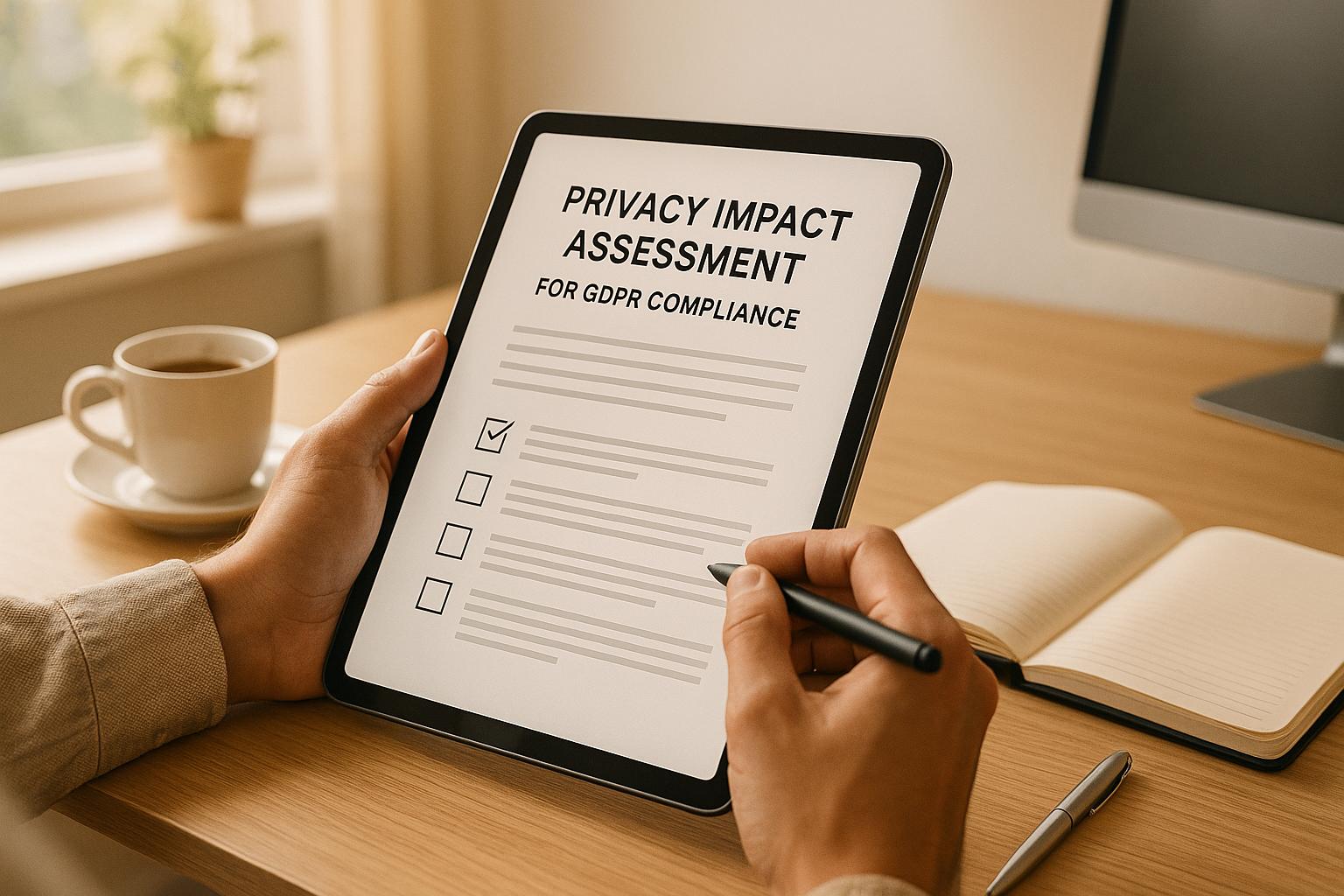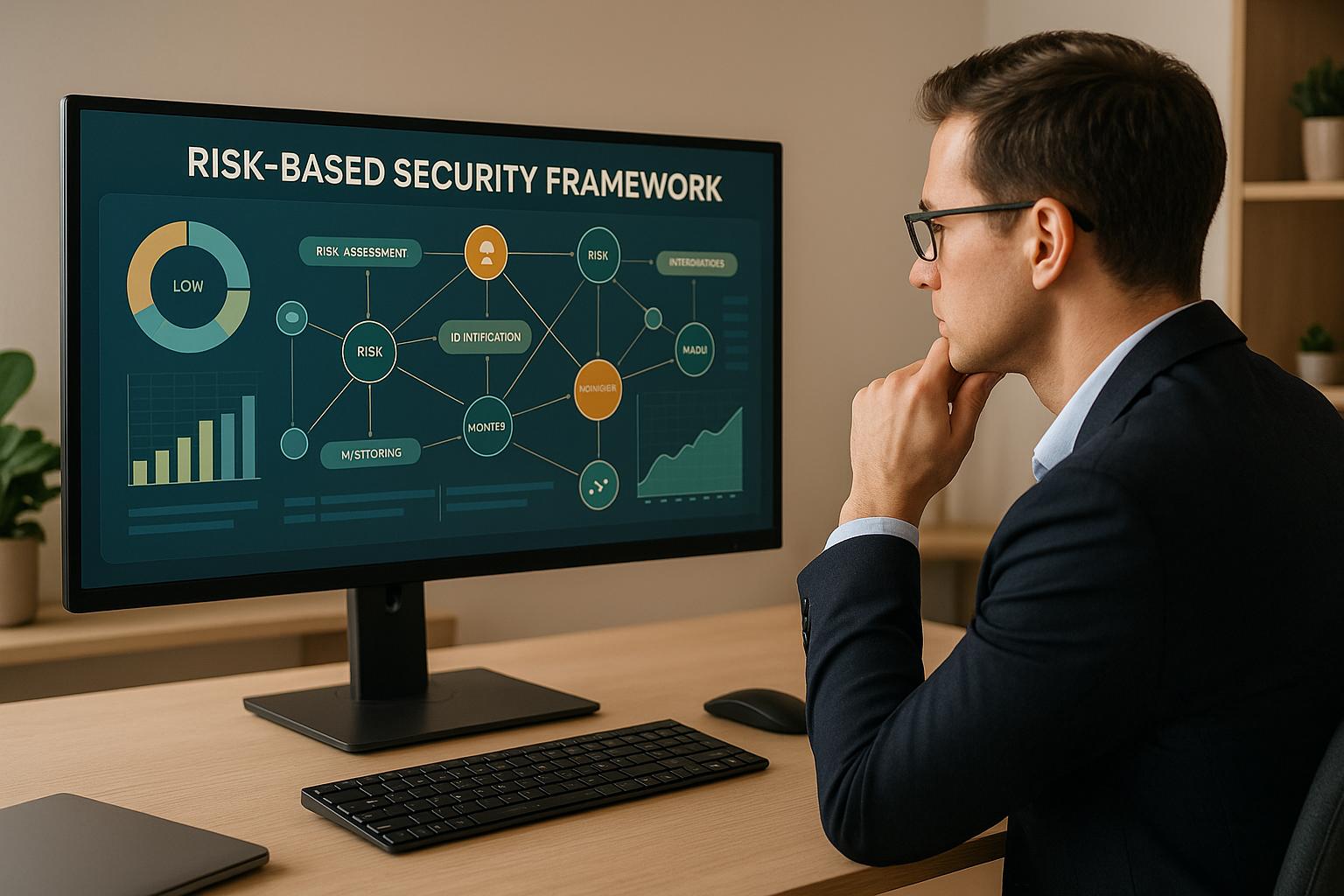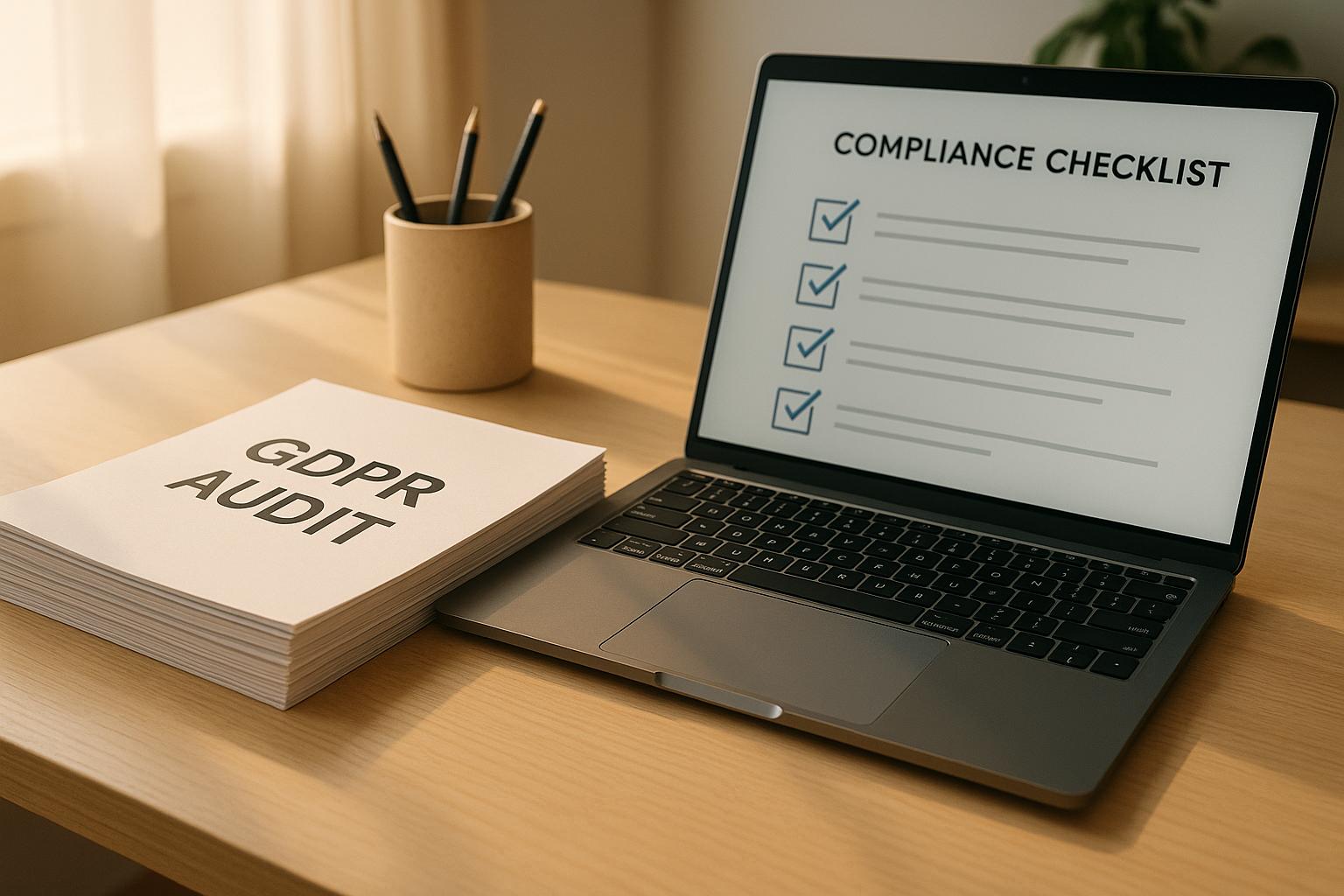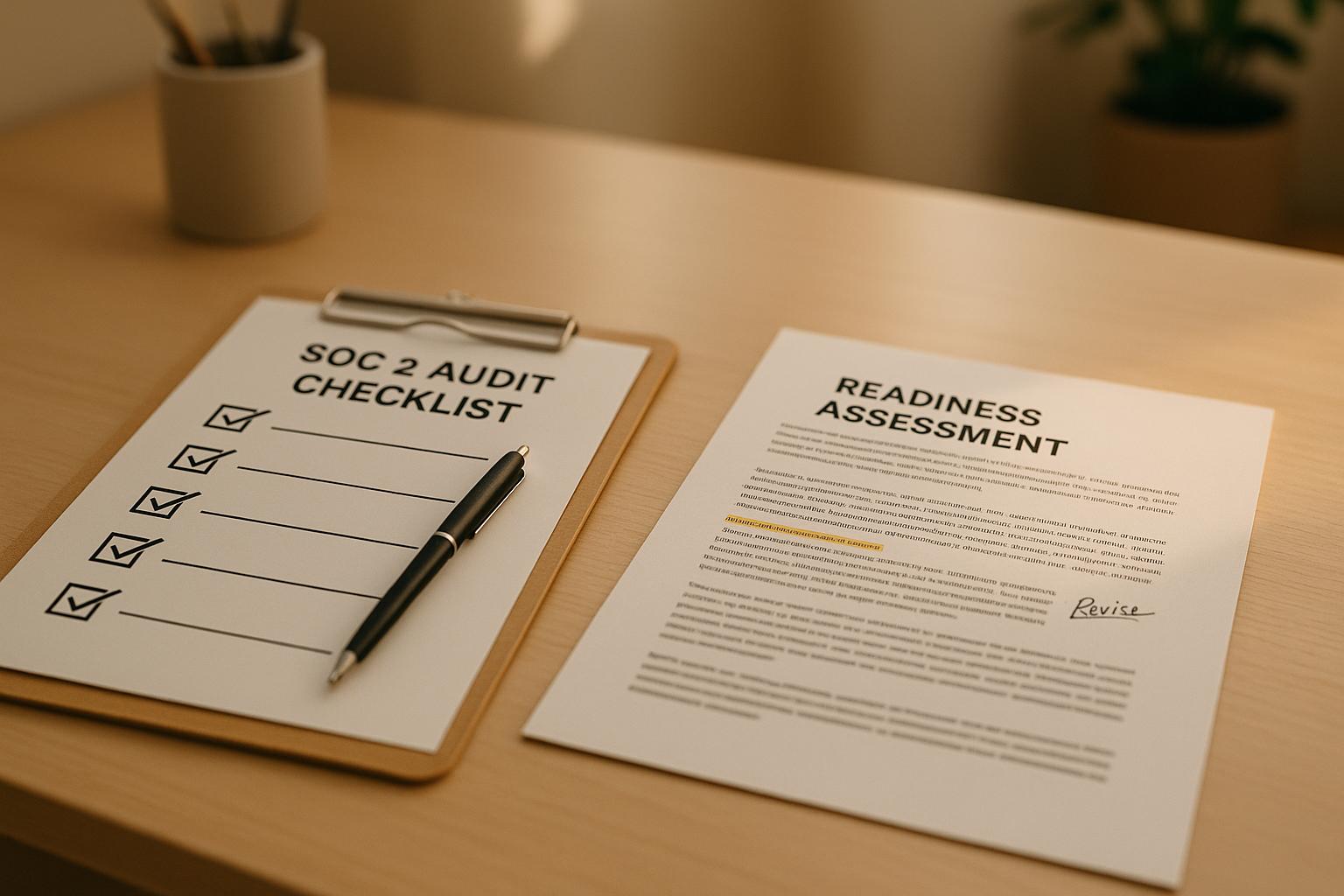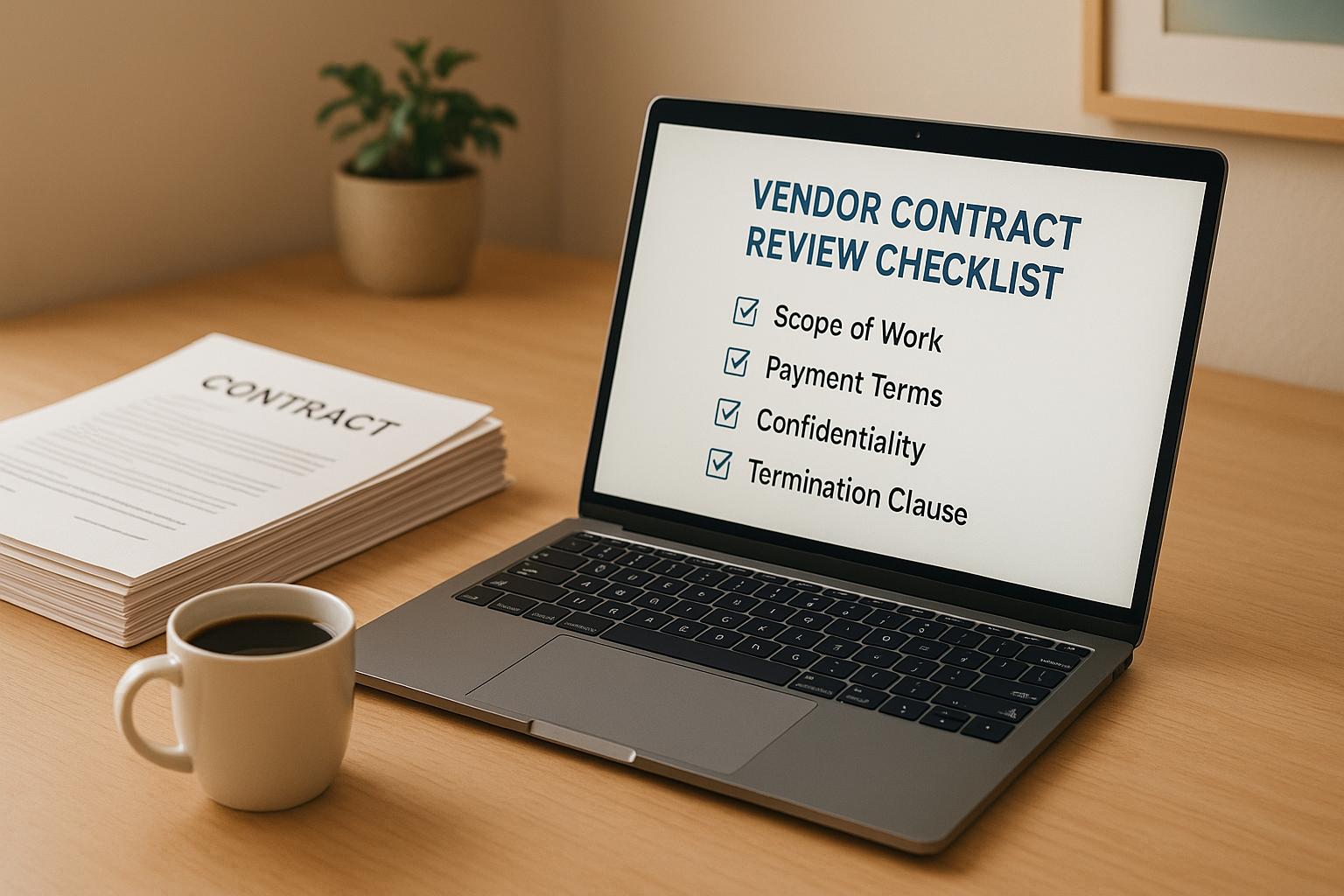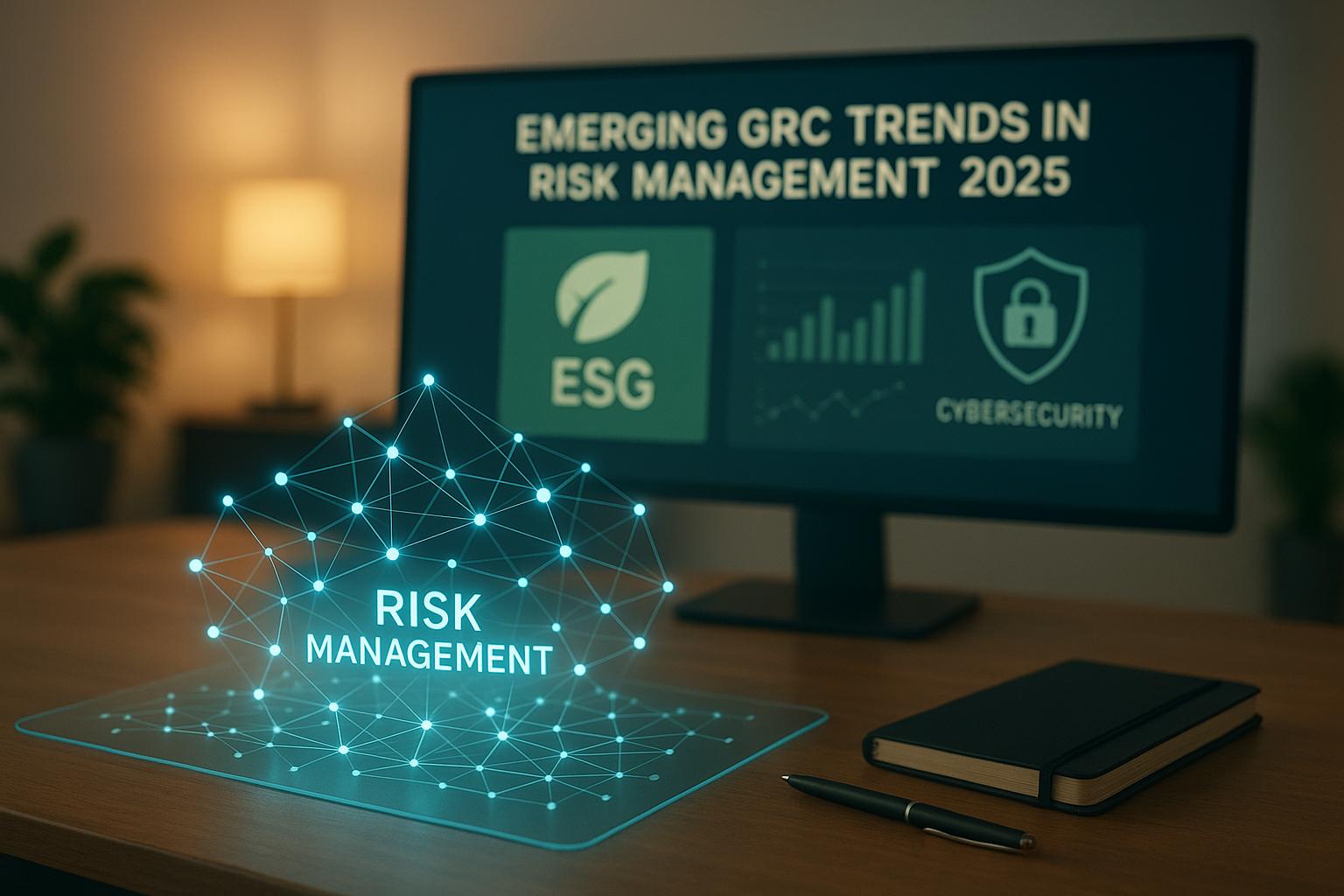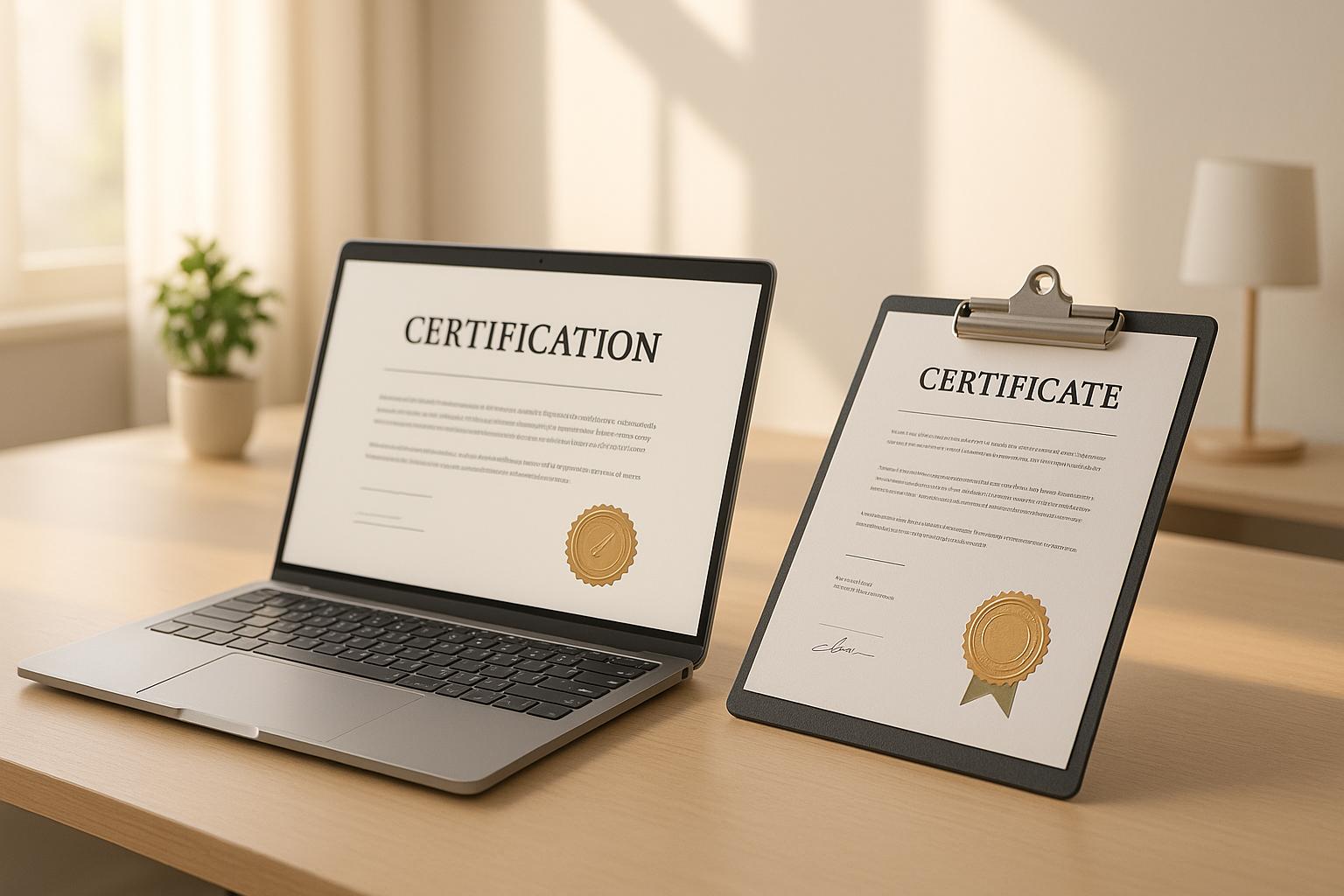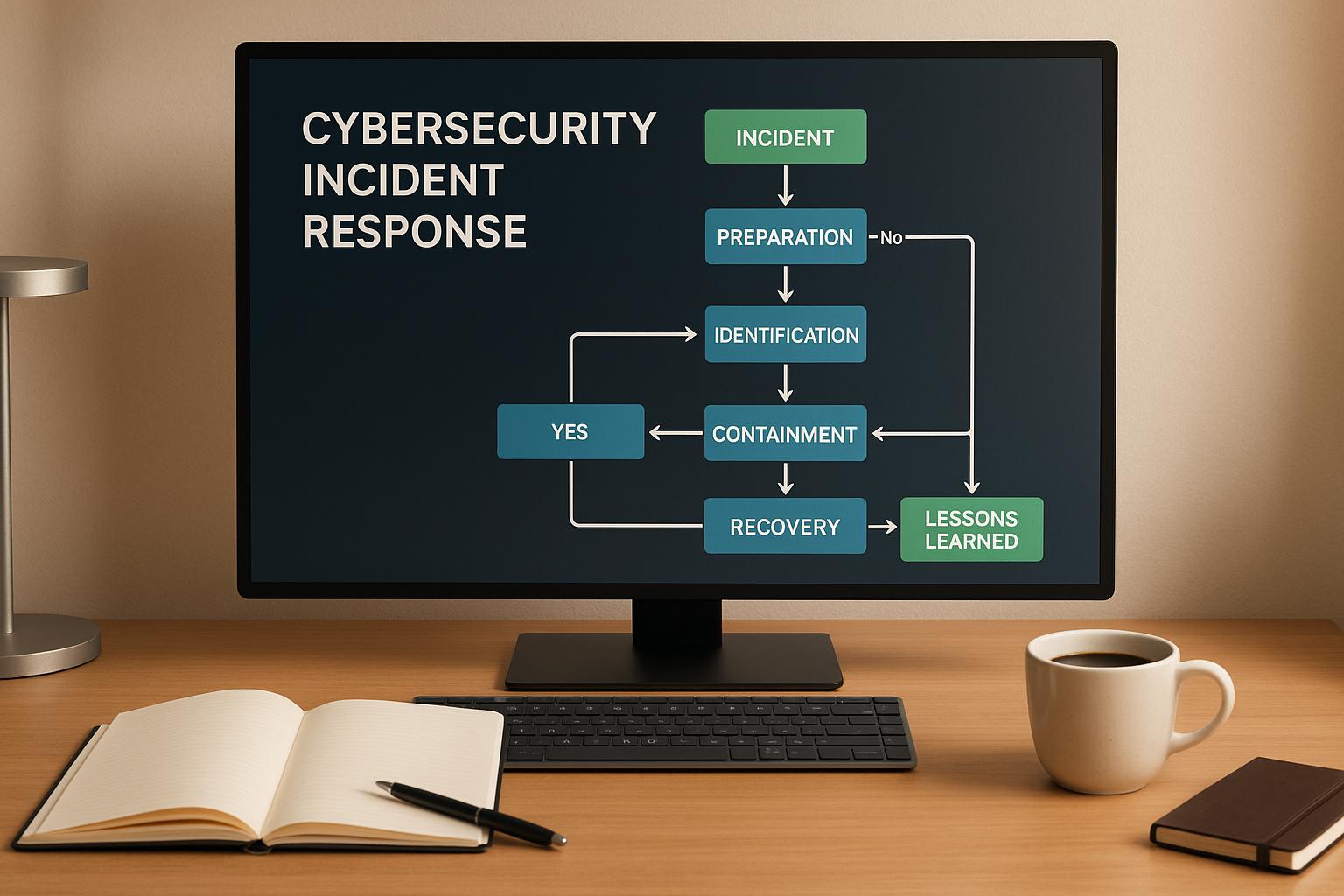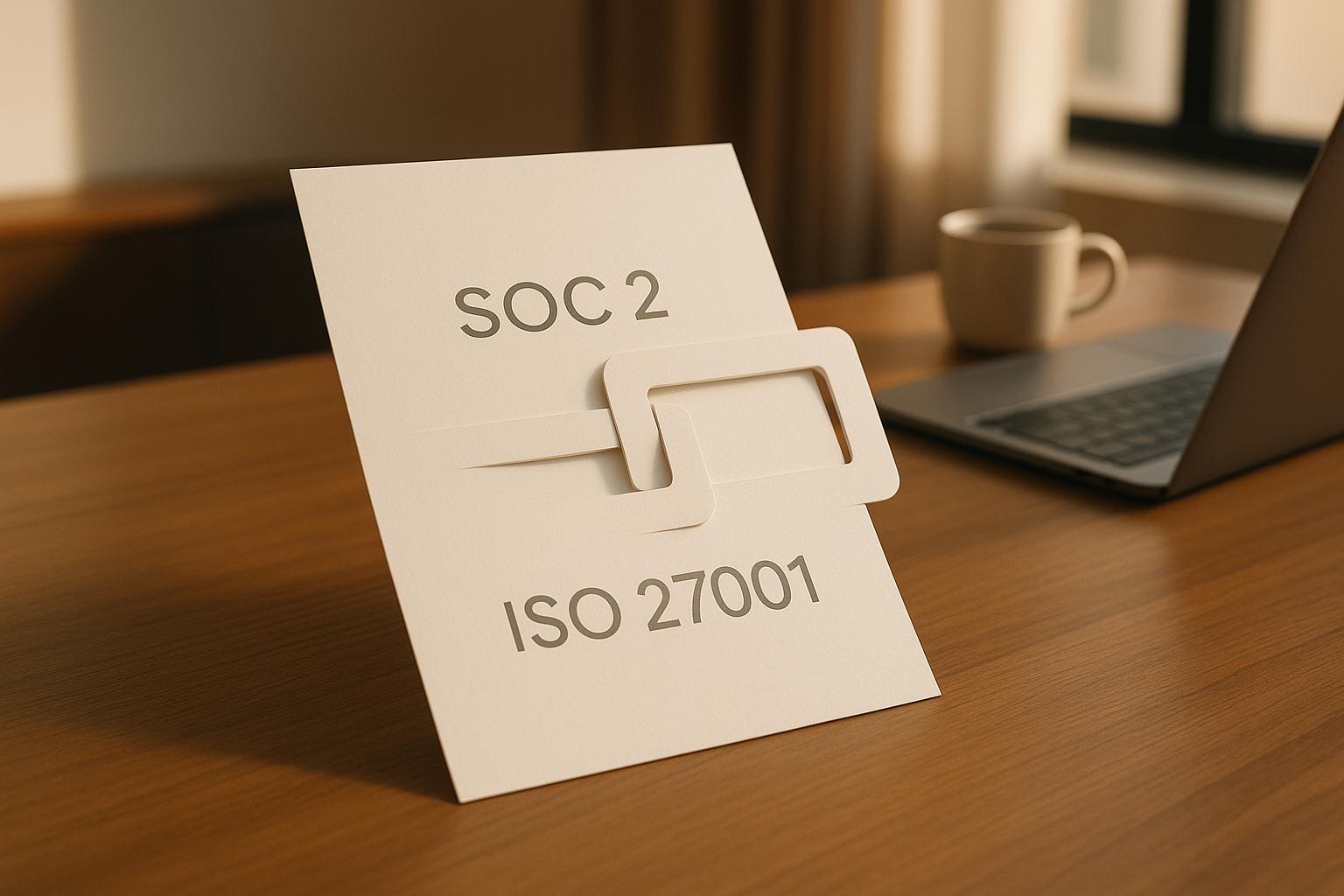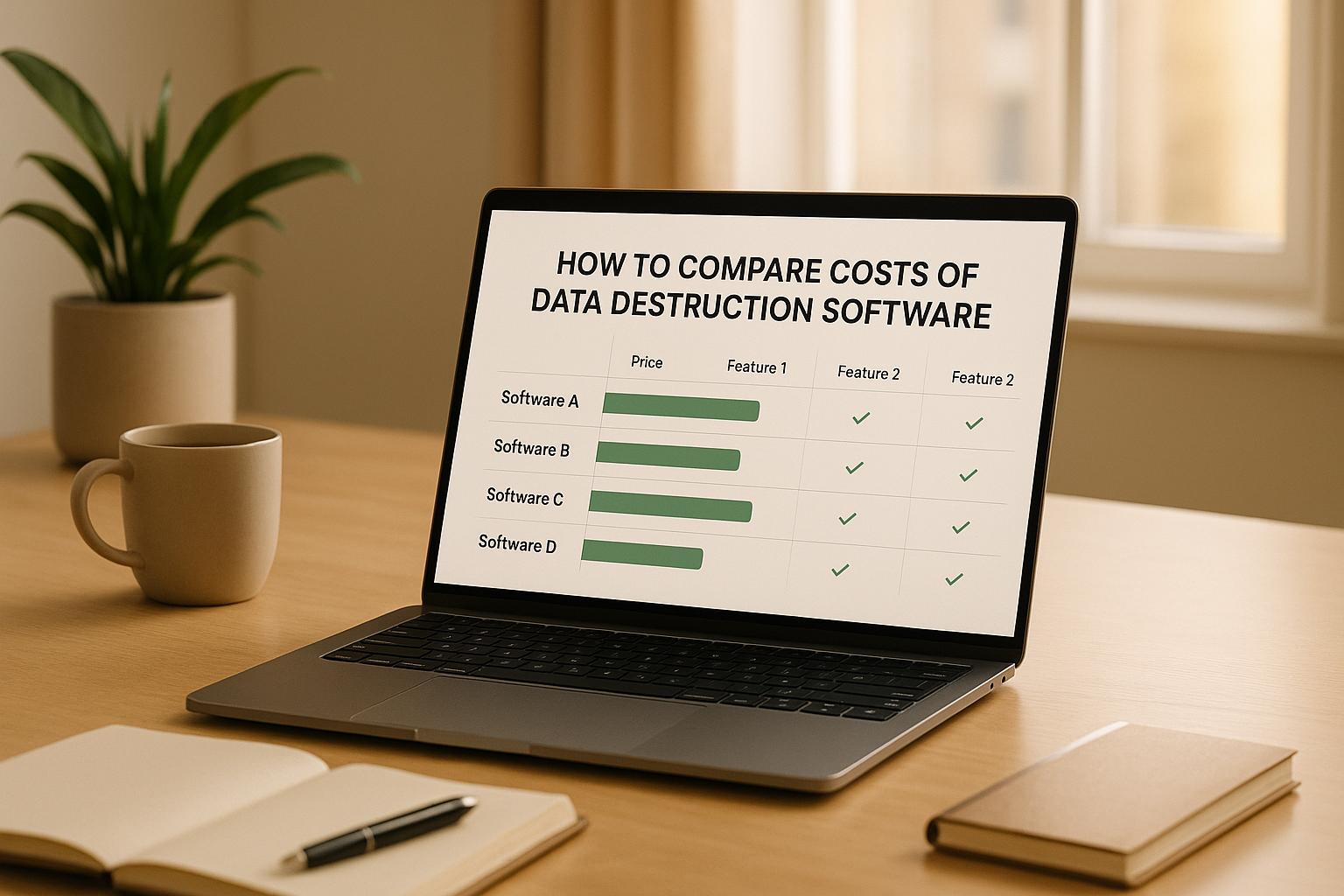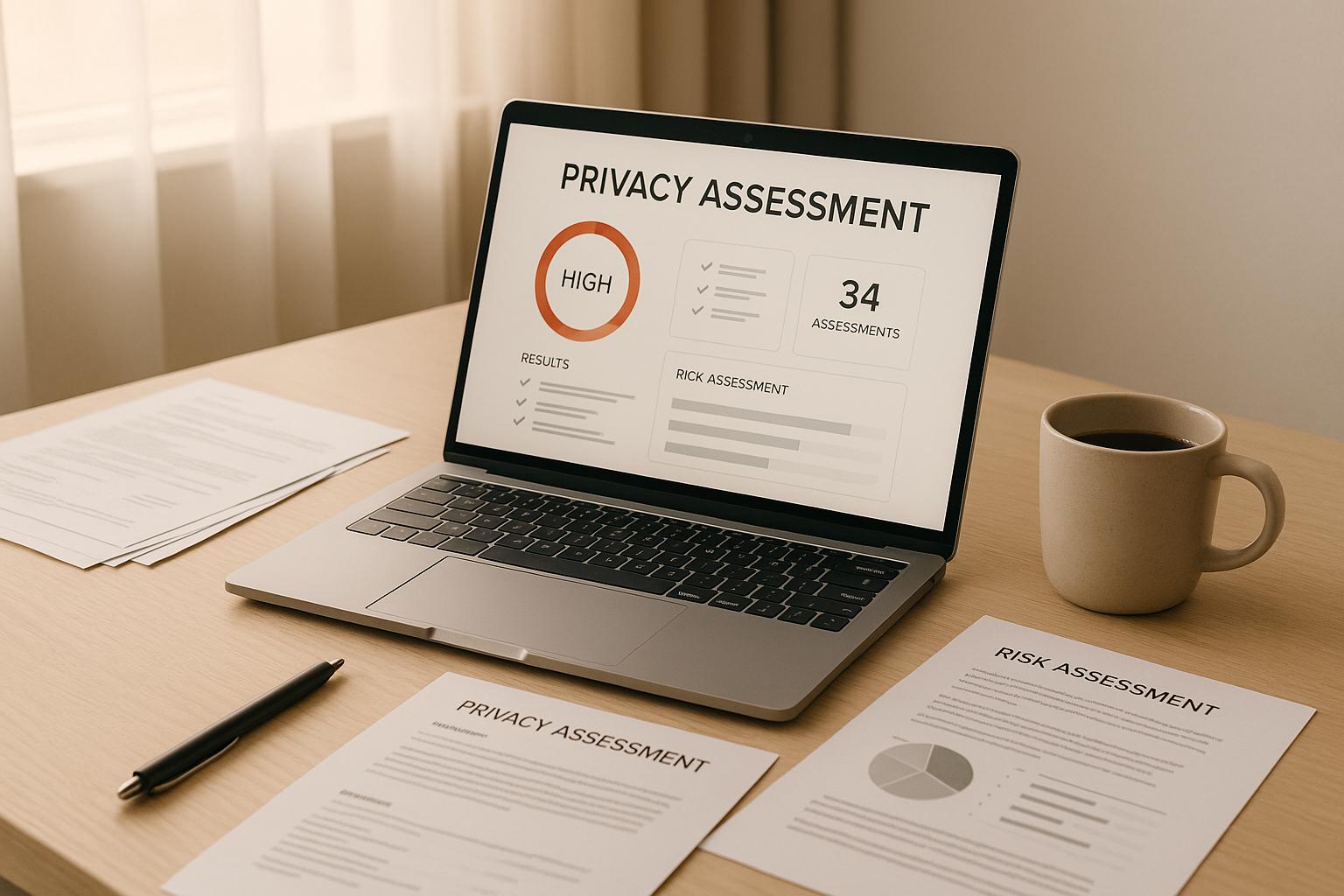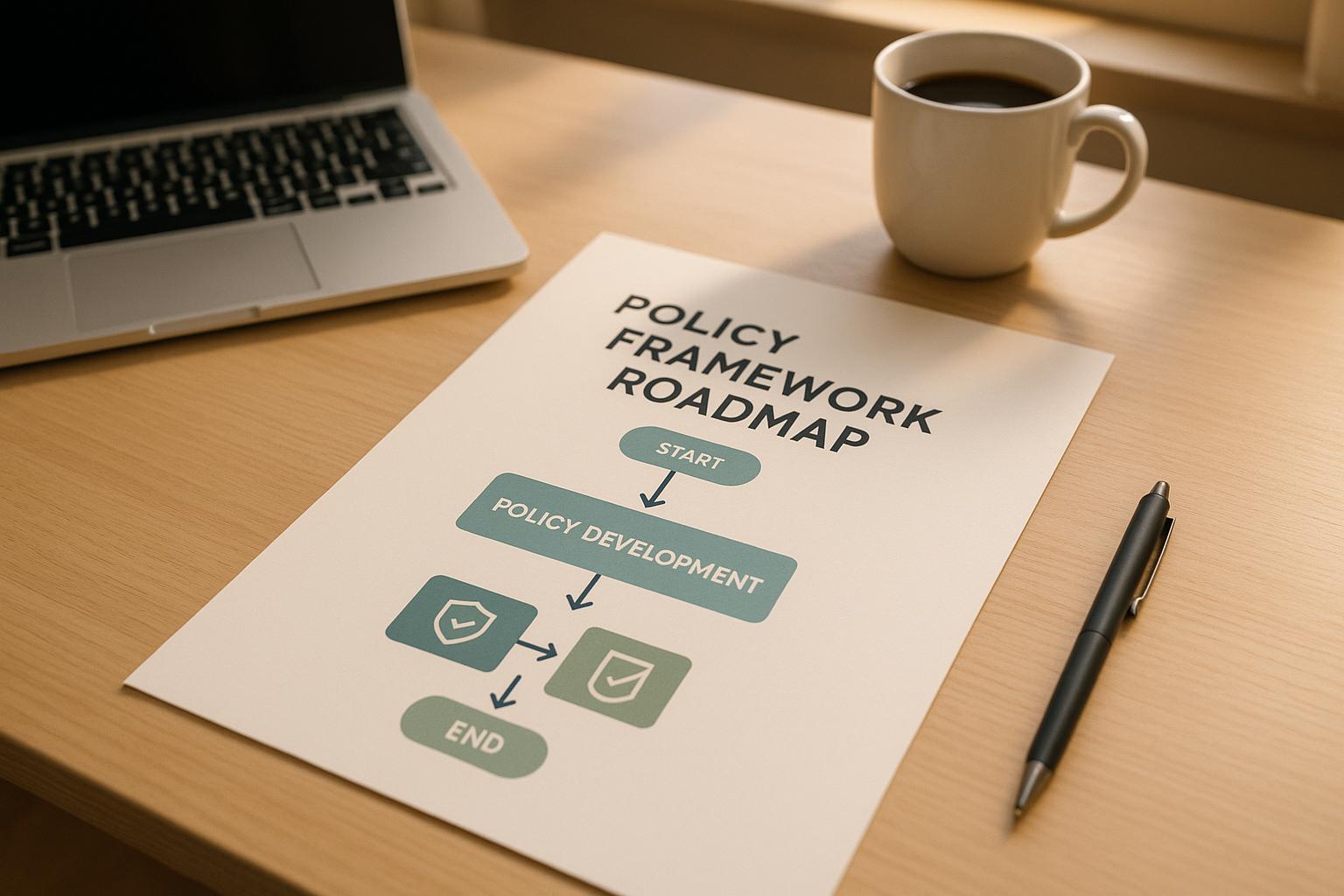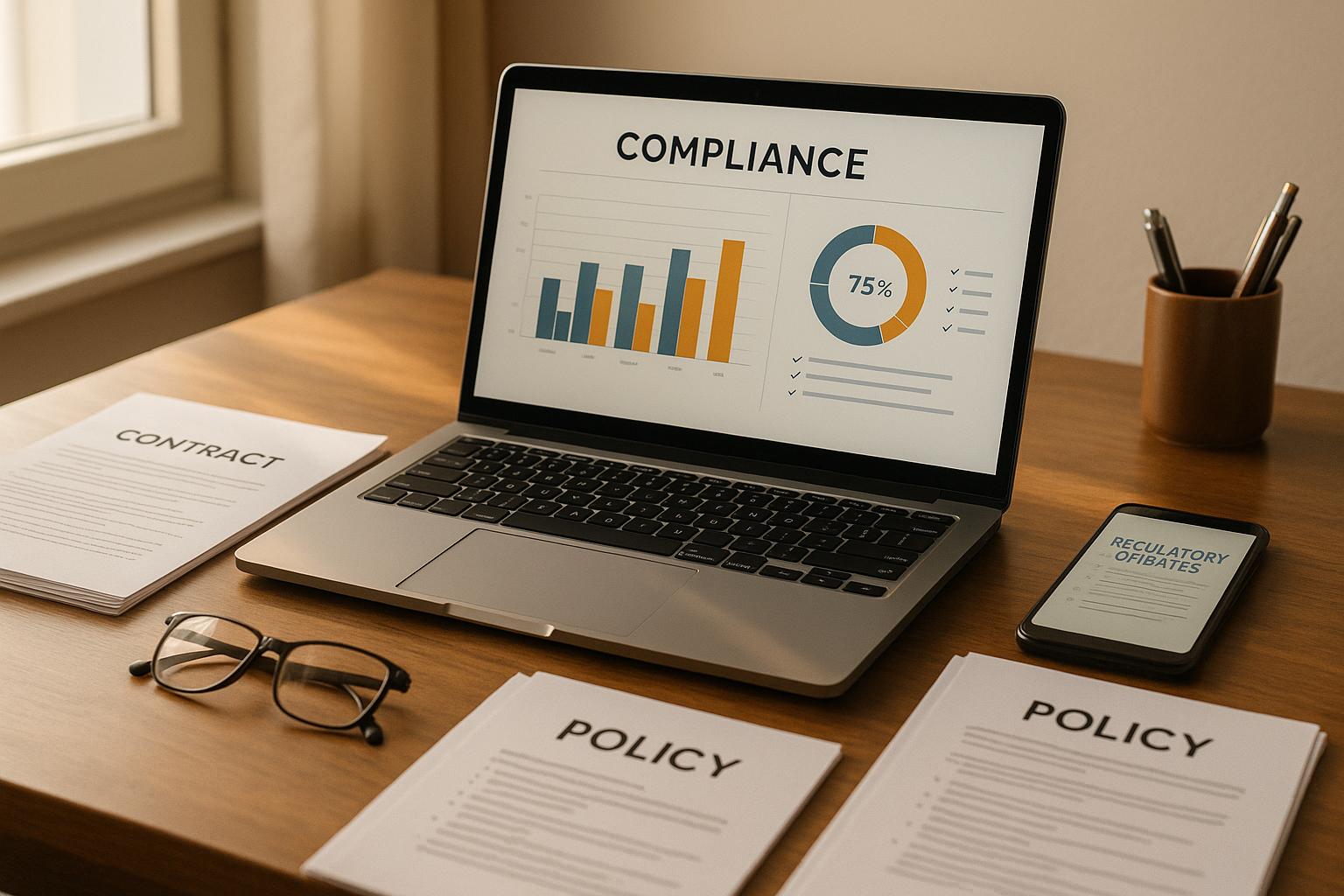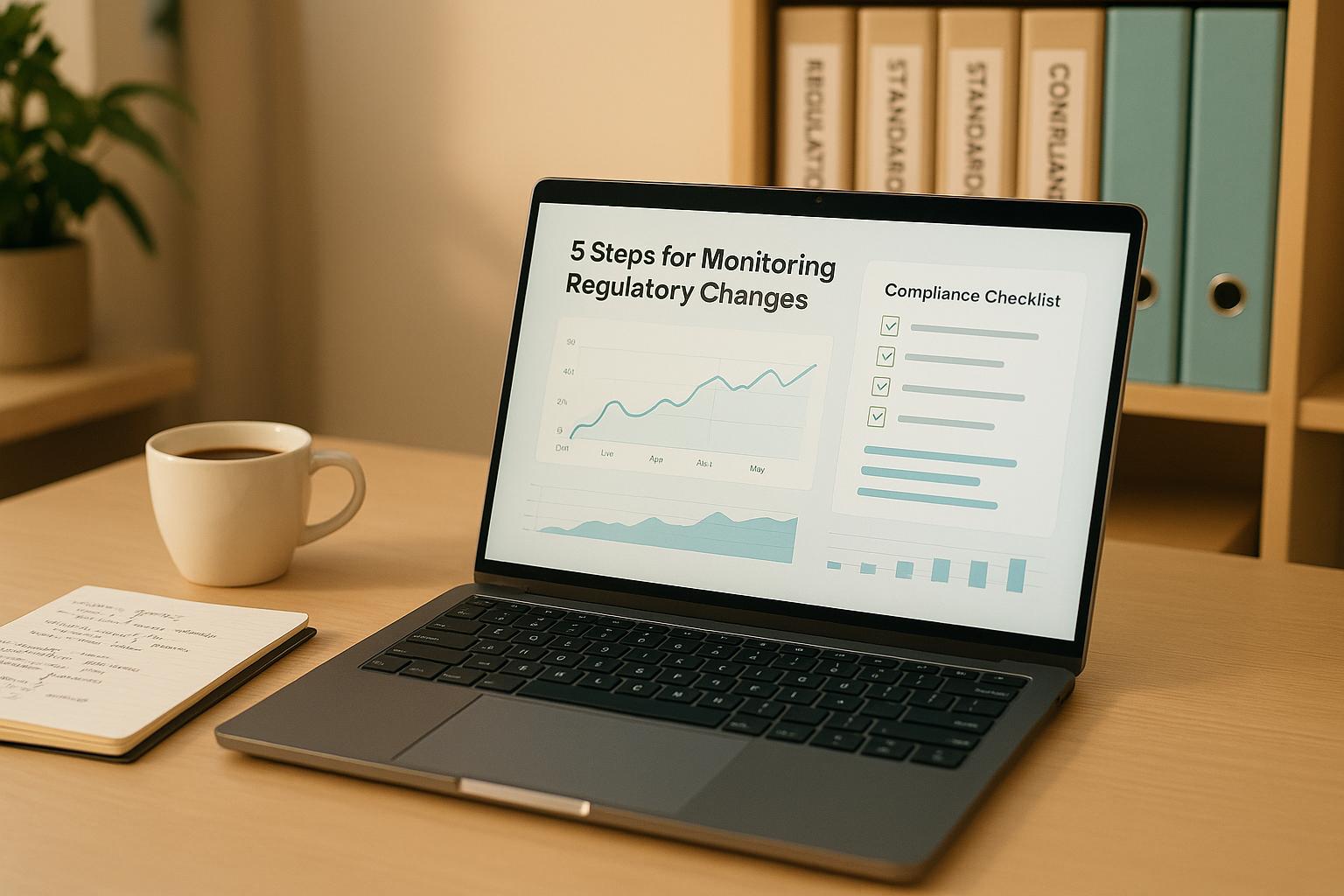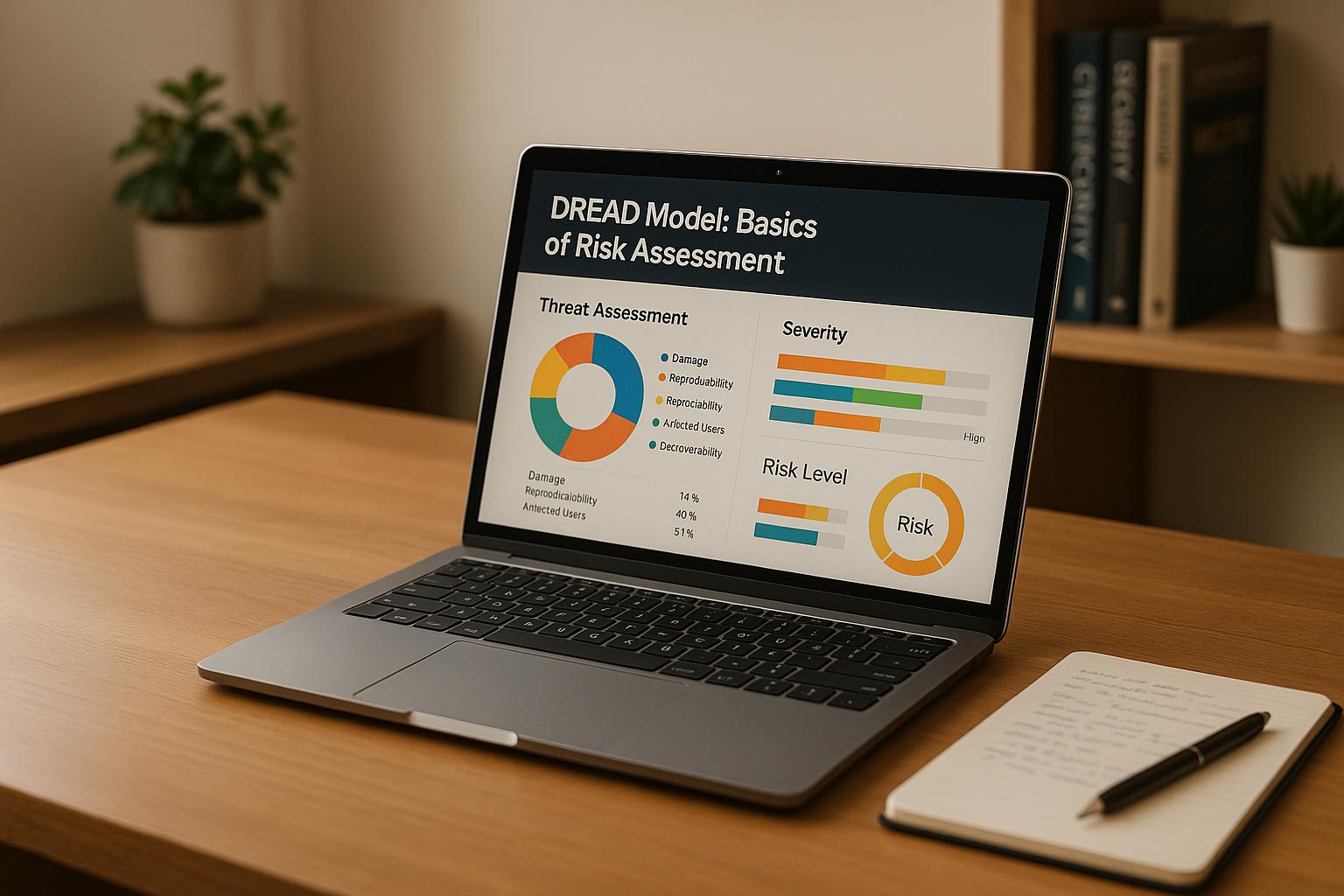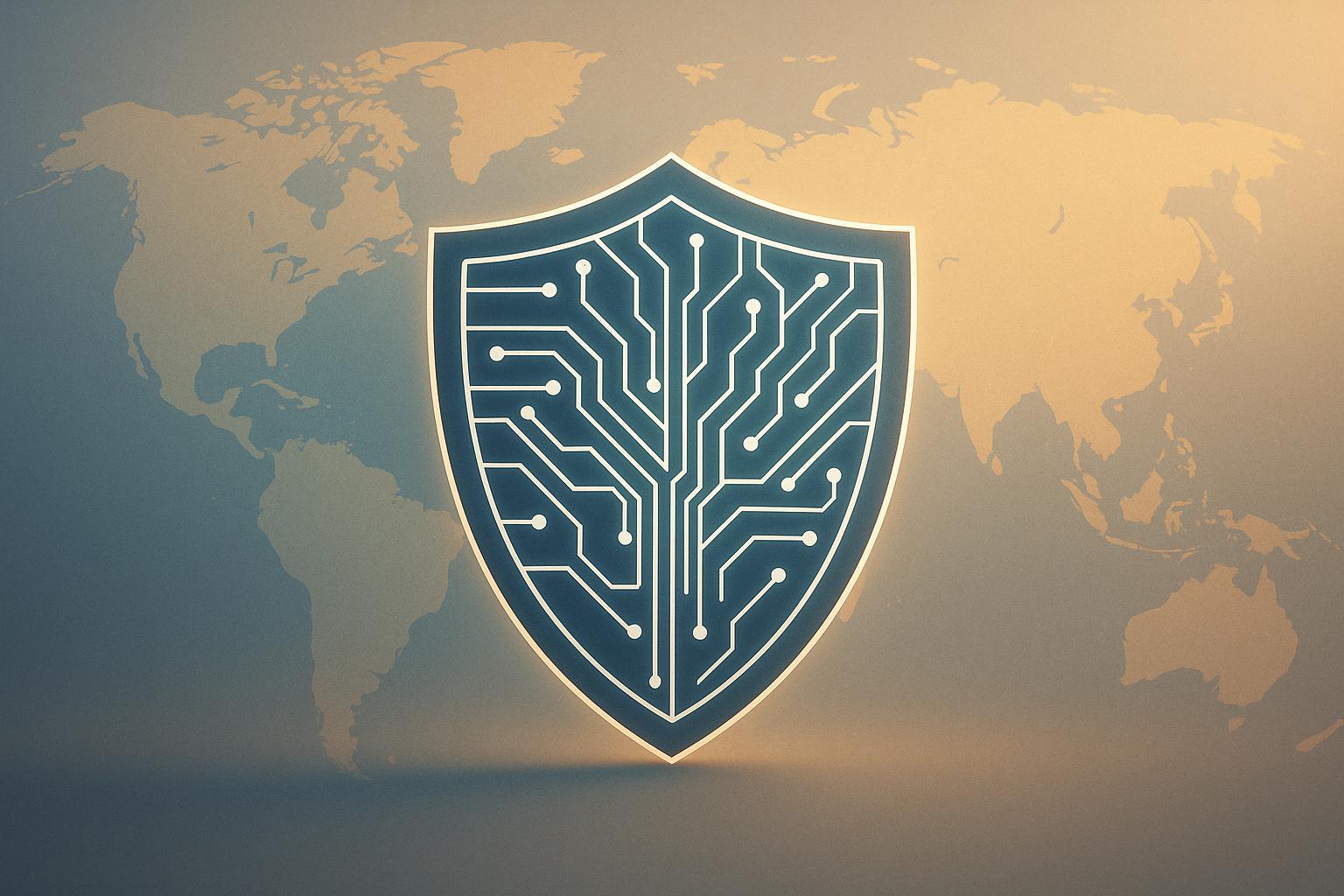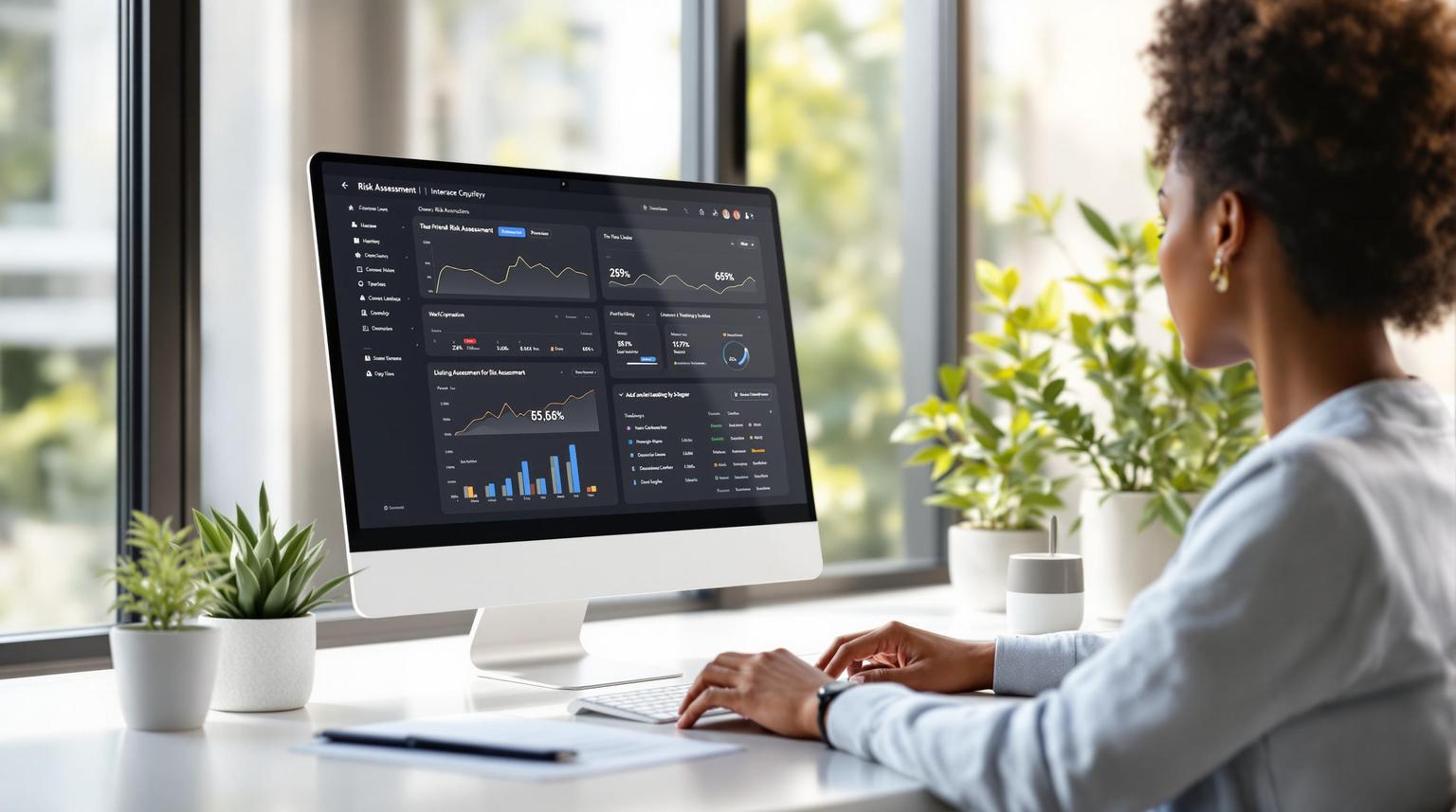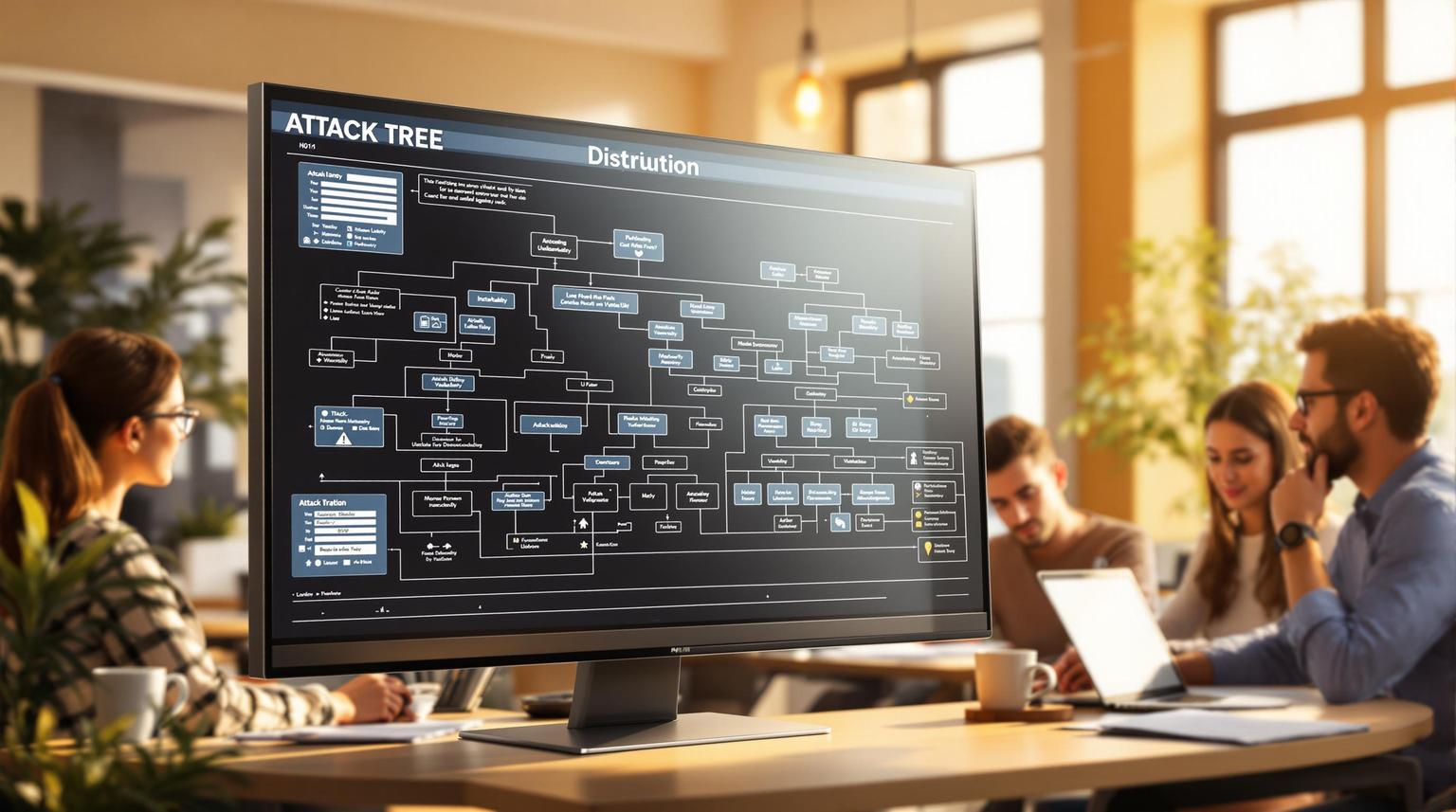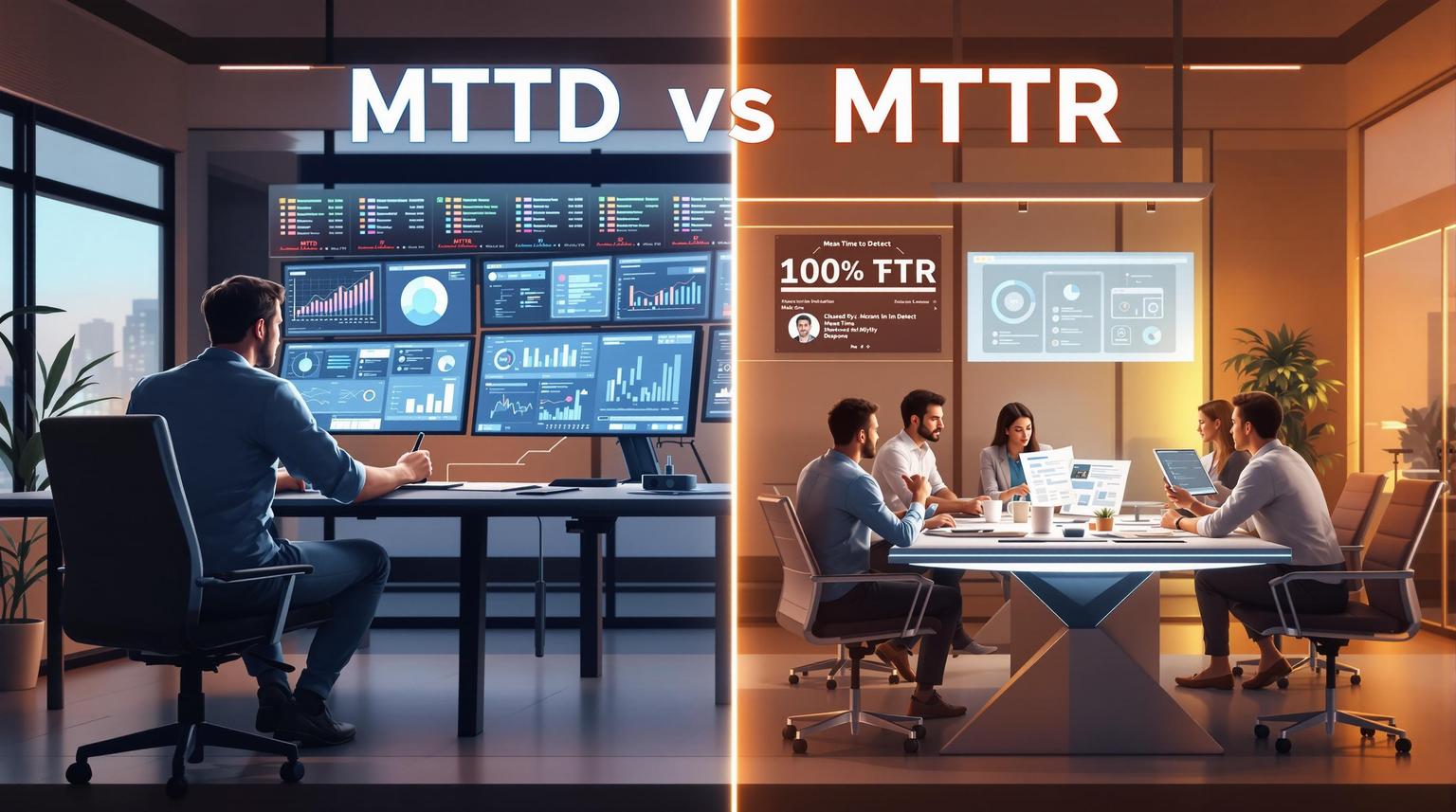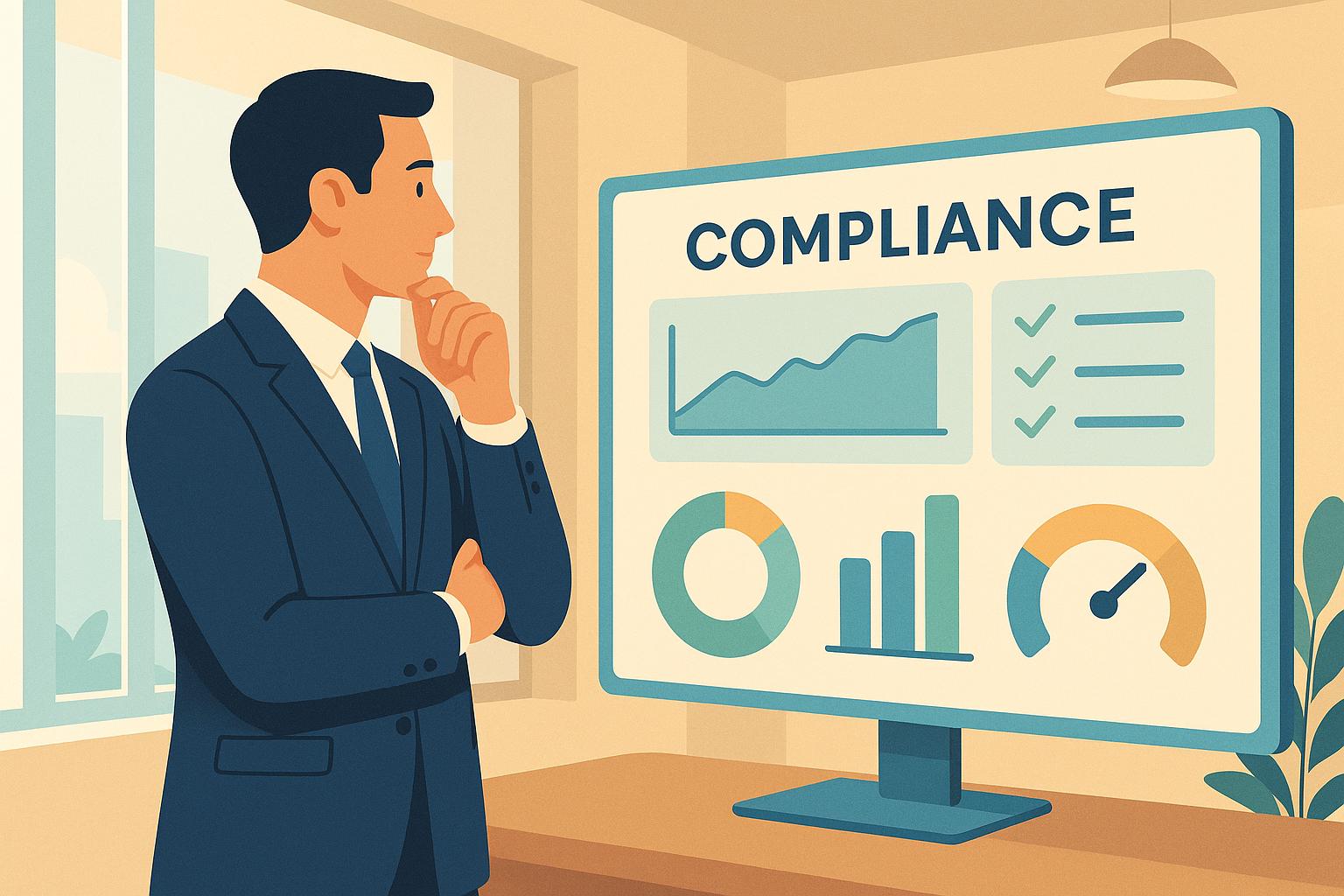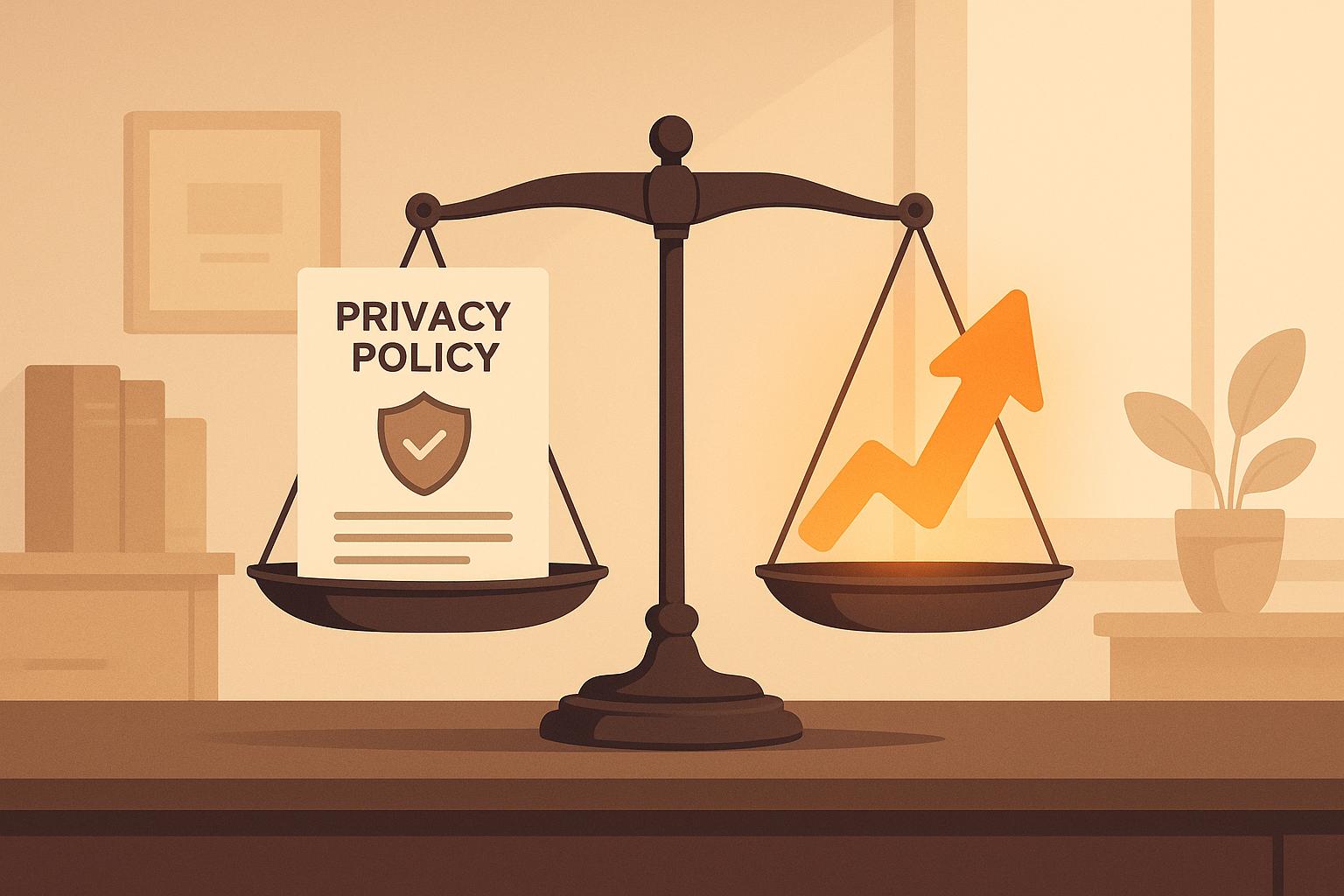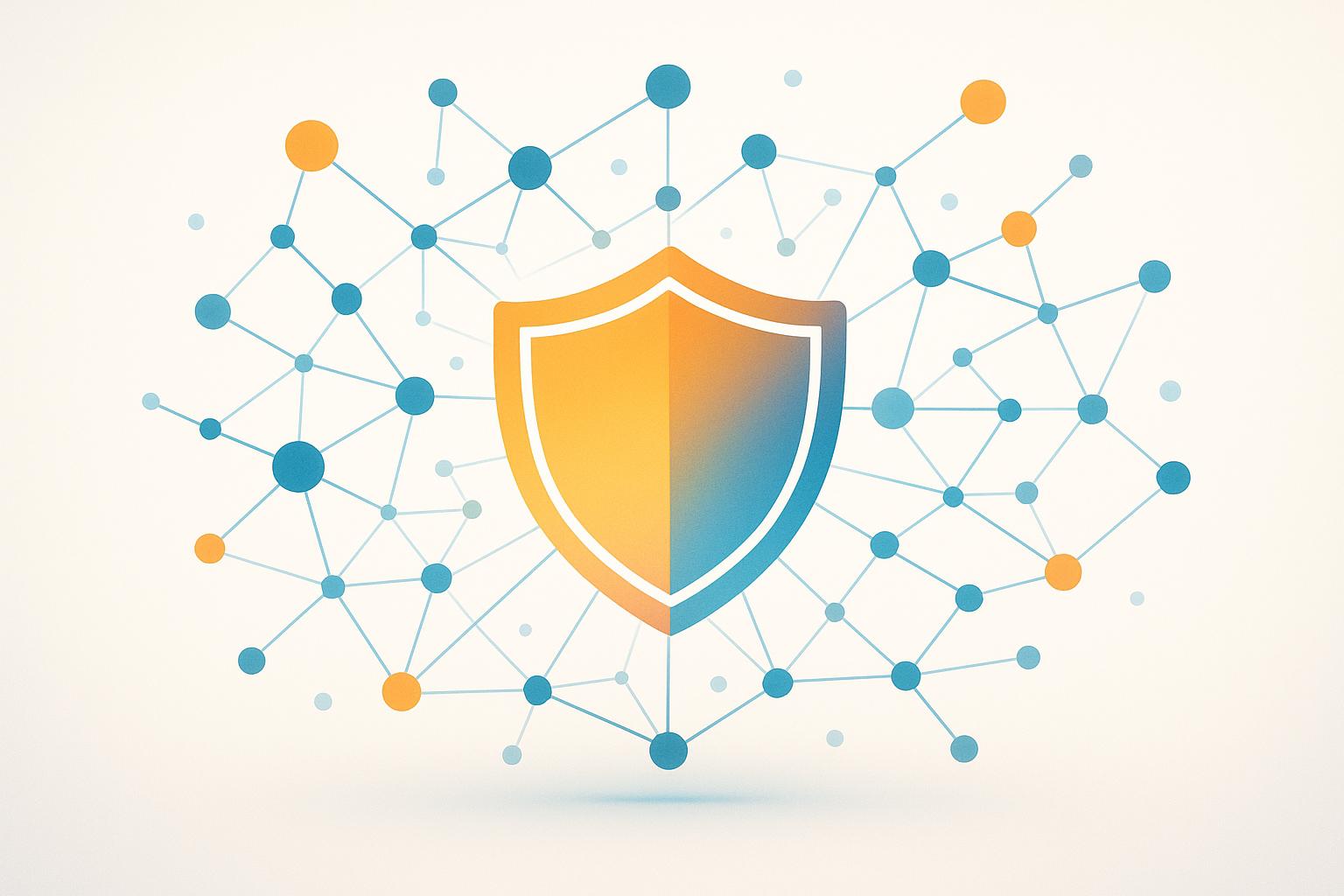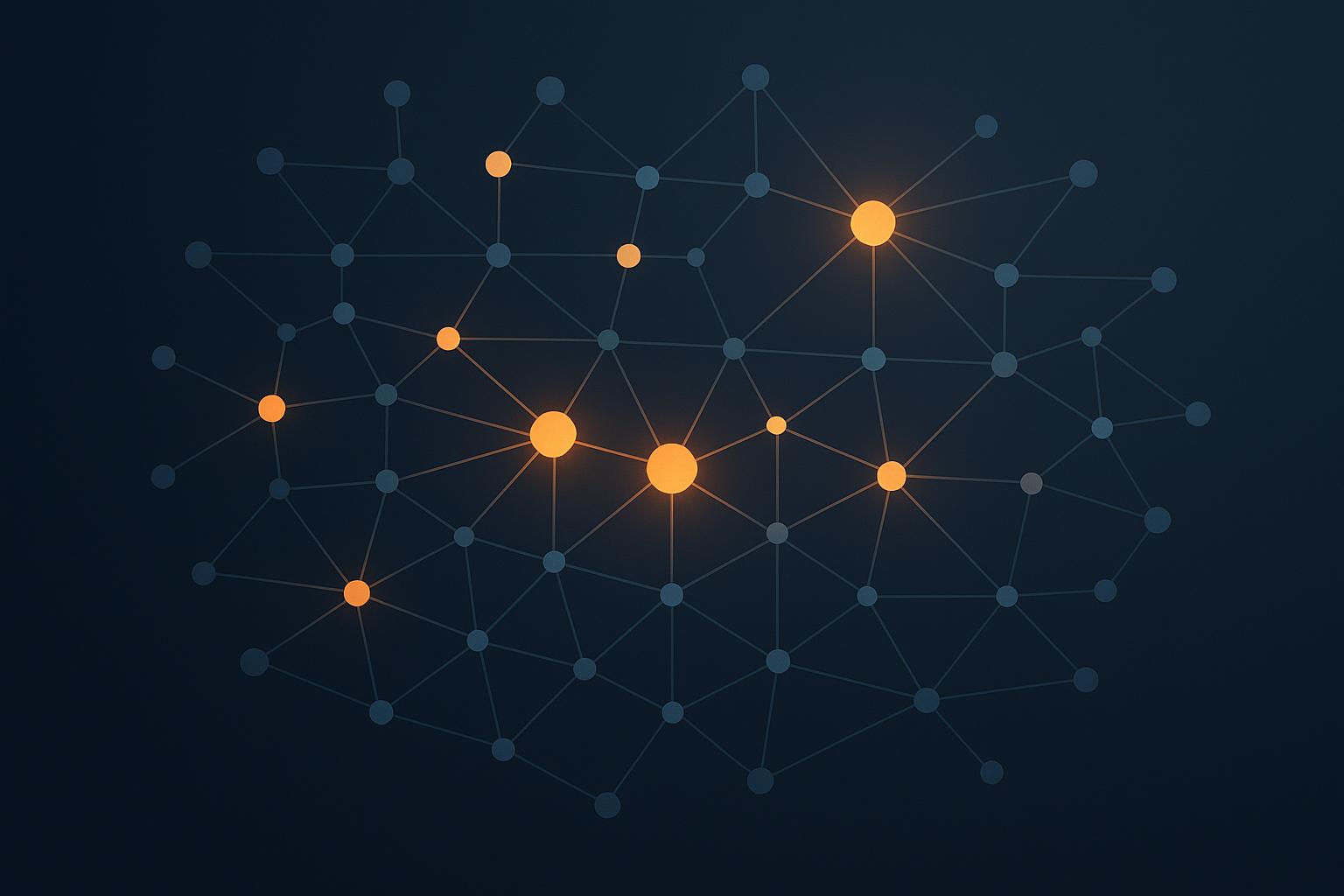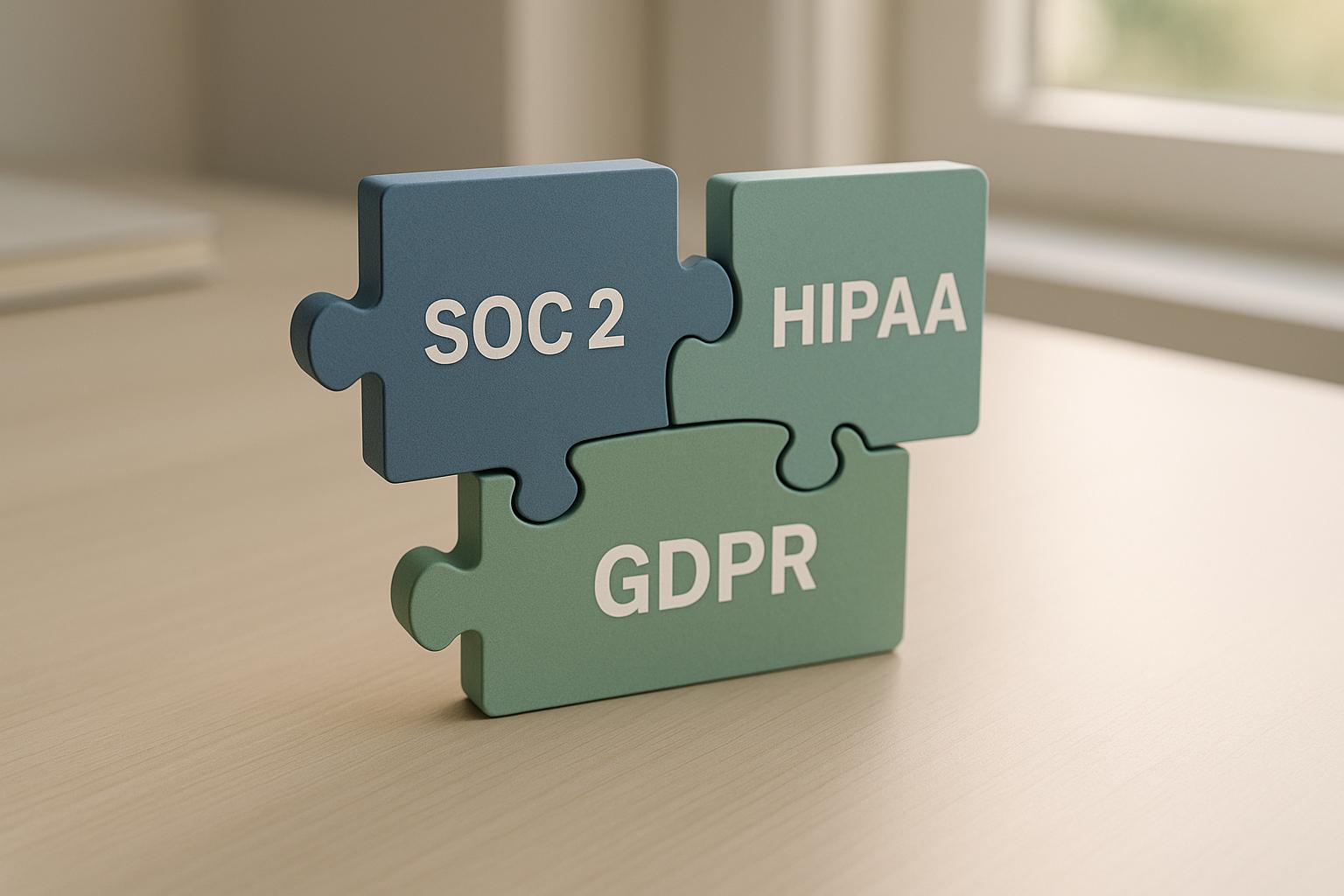
Protecting sensitive data is crucial for modern businesses. SOC 2, HIPAA, and GDPR are three major compliance frameworks designed to help organizations manage risks, secure data, and meet regulatory requirements. Here's a quick breakdown:
- SOC 2: Focuses on data security and privacy for service organizations. It's voluntary but essential for building trust with customers.
- HIPAA: A U.S. law that protects patient health information (PHI). Mandatory for healthcare providers, insurers, and their associates.
- GDPR: A European regulation that safeguards personal data of EU residents. It applies globally to businesses handling such data.
Why It Matters:
- Data breaches are on the rise, with healthcare breaches increasing by 256% over the past five years.
- Non-compliance can lead to fines: up to €20M (GDPR), $1.5M per violation (HIPAA), or loss of business (SOC 2).
Shared Goals:
- Protect sensitive data through encryption and access controls.
- Manage third-party risks.
- Build trust and minimize legal exposure.
Quick Comparison:
| Aspect | SOC 2 | HIPAA | GDPR |
|---|---|---|---|
| Legal Weight | Voluntary | Mandatory (U.S. law) | Mandatory (EU regulation) |
| Focus | Data security & privacy | Patient health information (PHI) | Personal data of EU residents |
| Target Entities | Service organizations | Healthcare providers & associates | Any entity handling EU data |
| Penalties | Loss of trust/business | Fines up to $1.5M per violation | Fines up to €20M or 4% of revenue |
1. SOC 2 Compliance Mapping
Core Compliance Focus and Scope
SOC 2 compliance is all about ensuring that companies handling data adhere to rigorous security measures. It’s particularly relevant for service organizations that rely heavily on data. The framework is based on Trust Services Criteria, which cover five key areas: Security, Availability, Processing Integrity, Confidentiality, and Privacy. Of these, Security is mandatory for every SOC 2 audit, while the other four are optional, depending on the company’s specific needs.
"SOC 2 Trust Service Criteria are high-level guidelines on how you can keep your organization and its information safe and secure." - Devika Anil, ISC 2-certified compliance expert and ISO 27001 lead auditor at Sprinto
SOC 2 mapping is the process of aligning a company’s internal controls with these Trust Services Criteria to ensure compliance across areas like security, availability, and privacy. For many SaaS companies in the U.S., achieving SOC 2 compliance is more than a checkbox - it’s a way to build customer trust and fulfill contractual obligations.
Key Requirements for Mapping
To streamline the mapping process, it’s essential to understand the SOC 2 Common Criteria. These criteria are aligned with COSO’s nine internal control areas, which serve as a solid foundation for compliance. They also overlap with other standards like ISO 27001, GDPR, and NIST, making the process more efficient.
| COSO Internal Control Area | Objective |
|---|---|
| CC1 – Control Environment | Focuses on integrity, ethical values, and governance within the organization |
| CC2 – Communication and Information | Ensures effective communication and information management to support security efforts |
| CC3 – Risk Assessment | Identifies and evaluates risks that could impact organizational goals |
| CC4 – Monitoring of Controls | Ensures controls remain effective and compliant over time |
| CC5 – Control Activities | Implements measures to address risks and meet objectives |
| CC6 – Logical and Physical Access Controls | Focuses on secure access to systems and data |
| CC7 – System Operations and Availability | Ensures system reliability and accessibility |
| CC8 – Change Management | Manages system and process changes in a controlled manner |
| CC9 – Risk Mitigation | Addresses risks tied to external vendors and partnerships |
To execute SOC 2 mapping effectively, organizations should start with a gap analysis, align controls with their operational goals, and implement continuous monitoring. This approach not only simplifies compliance but also lays the groundwork for integrating SOC 2 into broader risk management strategies.
Integration into Risk Management
Once controls are mapped, companies can shift toward a proactive risk management approach.
"To manage risk under SOC 2, organisations must implement a structured, evidence-based framework that aligns with the Trust Services Criteria - starting with asset identification and threat analysis, followed by continuous risk assessment, control implementation, and traceable evidence mapping. This ensures that all risks are prioritised, mitigated, and auditable in real-time for ongoing compliance." - Max Edwards, Author, ISMS.online
Integration involves mapping controls to the Trust Services Criteria through steps like identifying assets, analyzing threats, and performing ongoing risk assessments. Companies should gather risk data from internal audits and external monitoring, combining expert insights with measurable metrics to build a detailed risk profile.
The data collected is then transformed into actionable insights using methods like weighted scoring models and control gap analysis. This helps prioritize areas that may have been overlooked in compliance efforts, improving the overall risk management strategy. Additionally, mapping controls can highlight overlaps and gaps between different frameworks, making it easier to expand compliance efforts while enhancing security.
Challenges and Benefits
Integrating SOC 2 compliance into a company’s operations isn’t without its challenges. Common issues include limited resources, adapting to updates in the SOC 2 framework, and efficiently managing evidence collection. The stakes are high - data breaches in 2023 had an average cost of $4.45 million, emphasizing the financial importance of effective compliance.
To tackle these challenges, organizations should focus on three key areas: eliminating redundant tasks, standardizing audit processes, and maintaining a continuous management mindset within their security practices. Practical steps include adopting real-time monitoring tools, centralizing all SOC 2 documentation, and implementing thorough training programs.
When done right, SOC 2 mapping not only reduces risks but also strengthens compliance efforts. It provides a foundation that supports multiple frameworks, enhances security, and improves risk management capabilities.
2. HIPAA Compliance Mapping
Core Compliance Focus and Scope
HIPAA compliance revolves around safeguarding patients' Protected Health Information (PHI). It applies to both covered entities and their business associates. The HIPAA Security Rule is structured around three key safeguard categories: administrative, physical, and technical. These categories allow organizations to choose tools and methods that align with their operations while meeting compliance standards.
"Administrative actions, and policies and procedures, to manage the selection, development, implementation, and maintenance of security measures to protect electronic protected health information and to manage the conduct of the covered entity's workforce in relation to the protection of that information." – HIPAA
Key Requirements for Mapping
To effectively map HIPAA compliance, organizations must start with a detailed risk analysis and implement appropriate controls. This begins with a security risk analysis to identify vulnerabilities and potential threats to PHI across all systems and workflows. It's essential to document the entire lifecycle of PHI.
Key steps include:
- Implementing role-based access controls.
- Enforcing business associate agreements.
- Encrypting PHI both in transit and at rest.
- Maintaining audit logs.
- Establishing disaster recovery procedures.
- Providing comprehensive HIPAA training.
- Conducting regular audits.
Integration into Risk Management
Incorporating HIPAA mapping into a broader risk management strategy strengthens an organization's overall security framework. This approach not only protects sensitive data but can also safeguard the organization's reputation, minimize financial risks, and offer a competitive edge in the healthcare sector.
Success depends on aligning HIPAA requirements with business goals and fostering collaboration between compliance and risk management teams. Effective integration involves centralizing third-party risk management to address threats posed by business associates. Continuous monitoring and automated analytics through Governance, Risk, and Compliance (GRC) platforms can help mitigate vendor-related risks. Additionally, mapping NIST Cybersecurity Framework controls to the HIPAA Security Rule can further bolster data security initiatives.
Challenges and Benefits
HIPAA compliance mapping comes with its share of challenges. The healthcare industry saw a staggering 107% rise in data breaches between 2018 and 2022. In 2024 alone, over 133 million patient records were exposed. During the same period, the Office for Civil Rights collected $802,500 in settlements and $100,000 in civil monetary penalties. Striking a balance between strong security measures and operational efficiency can be tough, as strict protocols may sometimes be viewed as barriers to patient care.
High-profile breaches, with fines reaching several million dollars, highlight the urgent need for thorough HIPAA mapping, robust training programs, and efficient vendor management.
To address these challenges, healthcare organizations should prioritize:
- End-to-end encryption.
- Single sign-on solutions to enhance usability.
- Ongoing security awareness training.
With over two-thirds of global data breaches linked to unintentional human error, investing in staff training and clear policy guidelines is critical for long-term success.
For organizations aiming to simplify their HIPAA compliance mapping as part of an integrated risk management strategy, partnering with experts like Cycore Secure can provide tailored guidance in security, privacy, and compliance management.
3. GDPR Compliance Mapping
Core Compliance Focus and Scope
The General Data Protection Regulation (GDPR) stands as one of the strictest data privacy laws globally, reshaping how organizations handle personal information. Unlike frameworks that primarily emphasize security controls, GDPR prioritizes the protection of EU citizens' fundamental right to data privacy. Its reach is not confined to Europe; any organization that processes the personal data of EU citizens - whether by offering goods, services, or employing individuals within the EU - must comply, no matter where it operates.
GDPR is founded on seven key principles: lawfulness, fairness, and transparency; purpose limitation; data minimization; accuracy; storage limitation; integrity and confidentiality; and accountability. Among these, the accountability principle requires organizations to actively demonstrate their compliance efforts. This focus on privacy rights sets GDPR apart from frameworks that lean heavily on technical measures.
Key Requirements for Mapping
To effectively align with GDPR, organizations must first gain a thorough understanding of their data flows. Every piece of personal data handled must be documented, along with its legal basis for processing. This detailed data mapping serves as the backbone for GDPR compliance.
Key activities include conducting regular information audits to evaluate and refine data-processing practices. Organizations need to document data types, sources, destinations, and the systems used for processing. With the sheer volume of data generated today, maintaining precise and up-to-date data inventories is a challenging but essential task.
To meet GDPR requirements, organizations should implement measures such as:
- Conducting Data Protection Impact Assessments (DPIAs) for high-risk processing.
- Creating clear and accessible privacy notices.
- Establishing procedures to uphold data subject rights.
- Developing breach notification protocols.
- Appointing Data Protection Officers (DPOs) where necessary.
- Providing comprehensive staff training on privacy and compliance.
Additionally, technical safeguards like encryption, multi-factor authentication, and regular security assessments can play a critical role in preventing data breaches.
Integration into Risk Management
Just like SOC 2 and HIPAA compliance, GDPR mapping strengthens overall risk management by promoting transparency and proactive risk mitigation. By integrating GDPR compliance into broader risk strategies, organizations can gain a clear understanding of their data processing activities, identify privacy risks, and implement measures to address them. This approach ensures accountability and aligns data protection efforts with business goals.
The financial stakes for non-compliance are high. Severe GDPR violations can result in fines of up to €20 million or 4% of a company's annual global revenue, whichever is greater. In the UK, these penalties can reach £17.5 million or 4% of worldwide annual turnover for breaches of fundamental processing principles.
To successfully integrate GDPR compliance, organizations must continuously monitor their vendors, develop procedures for detecting and reporting data breaches, and establish governance structures that align privacy practices with business objectives. These efforts mirror strategies used in SOC 2 and HIPAA compliance, reinforcing a unified approach to managing risk.
Challenges and Benefits
Incorporating GDPR mapping into a broader compliance strategy, alongside SOC 2 and HIPAA, comes with both obstacles and rewards. One major challenge is the complexity of tracking data in today’s digital environment. With over 80% of enterprise workloads now in the cloud, documenting and managing information flows - especially within third-party cloud infrastructures - has become increasingly difficult. Organizations must also ensure vendor compliance, manage data spread across multiple systems, and adapt to evolving processing activities, all of which require significant investment in both technology and skilled personnel.
However, the benefits of effective GDPR mapping are undeniable. It sharpens data governance, enhances decision-making, strengthens risk assessments, and bolsters overall security frameworks. The process also uncovers inefficiencies and promotes data minimization, which can reduce both risks and costs.
"As the privacy lead, your job isn't to have all the answers, but to ask the right questions so that you can extract the answers from the people who do have them – even if they don't realize it themselves."
– Andrew Snow, Data Privacy Trainer
For businesses looking to navigate GDPR compliance as part of an integrated risk management strategy, partnering with experts like Cycore Secure can provide specialized Virtual Data Protection Officer services and comprehensive compliance support.
Risk Management: A Strategy for Compliance with Multiple Security Frameworks (Part 3 of 4)
sbb-itb-ec1727d
Framework Comparison: Overlaps and Key Differences
Comparing SOC 2, HIPAA, and GDPR across critical dimensions helps organizations craft better compliance strategies. While all three frameworks aim to safeguard sensitive data, they differ significantly in their legal authority, scope, and implementation requirements.
The biggest distinction lies in enforceability. SOC 2 is a voluntary framework that organizations adopt to showcase their commitment to data security to clients and stakeholders. On the other hand, HIPAA and GDPR are legally binding. HIPAA is a federal regulation in the U.S. that healthcare-related entities must follow, while GDPR applies to any organization worldwide that processes personal data of EU residents.
Their scope also varies. SOC 2 focuses on service organizations handling customer data. HIPAA, however, targets healthcare providers, insurers, and business associates managing Protected Health Information (PHI). Meanwhile, GDPR has the broadest reach, applying to any entity, anywhere, that processes personal data of EU citizens.
The compliance and audit processes further highlight their differences. SOC 2 requires an independent audit by a CPA firm, which results in an attestation report evaluating an organization’s controls over a specific period. HIPAA mandates internal risk assessments and compliance program maintenance but does not require external certification. GDPR, on the other hand, calls for internal assessments and offers optional certifications.
| Compliance Aspect | SOC 2 | HIPAA | GDPR |
|---|---|---|---|
| Legal Weight | Voluntary framework | Mandatory federal regulation | Mandatory |
| Target Entities | Service organizations | Healthcare providers, insurers | Any entity processing EU citizens' data |
| Primary Focus | Data security, confidentiality | PHI security, privacy, breach response | Data protection for EU residents |
| Audit Process | Independent CPA audit | Internal risk assessments | Internal assessment; optional certification |
| Breach Notification | Recommended | Mandatory | Mandatory |
| Non-Compliance Impact | Loss of business, trust | Fines, criminal penalties | Fines up to €20M or 4% of annual revenue |
Despite these differences, there are shared principles among the frameworks. All emphasize controlled access to sensitive data and require measures to detect unauthorized changes. Encryption of data - both at rest and in transit - is a common standard. Additionally, user consent for data processing is a key requirement across all three.
Another shared focus is third-party risk management. Each framework provides guidance on managing vendor risks and securing the supply chain. SOC 2’s recommendations for process and activity monitoring align closely with HIPAA’s monitoring requirements.
The financial stakes of non-compliance vary widely. Under GDPR, penalties can reach up to €20 million or 4% of global annual revenue - whichever is higher. HIPAA violations can result in fines and even criminal charges. In contrast, SOC 2 non-compliance mainly leads to loss of business opportunities, customer trust, and reputation rather than direct fines.
Best Practices for Combined Compliance Mapping
Managing compliance across frameworks like SOC 2, HIPAA, and GDPR can feel overwhelming, but a unified approach can make the process smoother and more efficient. Samantha Boterman from Baker Tilly puts it well:
"Managing multiple frameworks can feel daunting, but a unified approach can streamline the process and reduce the redundancy of overlapping controls".
Start with a Clear Understanding of Compliance Needs
The first step is to clearly define your compliance obligations based on your industry, geographic location, and the types of data you handle. Integrating these requirements into your broader risk management strategy strengthens your overall security posture and lays the groundwork for effective control mapping.
Use a Common Controls Framework (CCF)
A Common Controls Framework (CCF) simplifies multi-framework compliance by identifying overlapping requirements and addressing them collectively. For example, identity and access management controls required by SOC 2 (CC6.1) align closely with GDPR's Article 32 and HIPAA's 164.312(a). By mapping these shared requirements, you can eliminate duplicate efforts and streamline your compliance efforts.
Define the Scope Early
Clearly outline the scope of your compliance assessments. Identify which organizational units fall under each framework, establish timelines, and map out controls. This upfront planning helps avoid scope creep and ensures all areas are thoroughly covered.
Leverage Technology to Simplify Compliance
Technology plays a critical role in easing the compliance burden. Organizations that use compliance technology report average savings of $1.02 million. Governance, Risk, and Compliance (GRC) platforms centralize compliance activities, making it easier to track, report, and automate processes. These tools can:
- Automate evidence collection
- Centralize control management
- Streamline collaboration among teams
When choosing a GRC platform, look for features like integrated risk, policy, and audit management. These tools replace inefficient manual processes (like spreadsheets and email chains) and allow for seamless coordination across your organization.
Centralize Your Compliance Documentation
A centralized compliance repository is invaluable. It consolidates policies, risk assessments, incident reports, and audit evidence, making audits smoother and ensuring consistency across frameworks. Internal audits can also be aligned to assess multiple standards at once, saving time and resources.
Engage and Train Your Team
Compliance isn’t just an IT responsibility - it’s a company-wide effort. Employees at every level need to understand their role in maintaining data security and meeting regulatory requirements. Continuous training and fostering a compliance-first culture are essential for long-term success.
Consider Outsourcing for Specialized Expertise
If your organization lacks the internal expertise or resources for compliance management, outsourcing can be a smart move. GRC consulting services provide professional guidance for developing and maintaining effective compliance programs. When selecting a partner, consider their industry experience, understanding of regulations, and alignment with your specific needs and budget. Cycore’s GRC Tool Administration, Virtual CISO, and Virtual DPO services are great examples of solutions that enhance scalability and efficiency.
Stay Ahead with Continuous Monitoring
Compliance doesn’t stop after implementation. As regulations evolve, continuous monitoring and adaptive policies are crucial. Regular evaluations help identify gaps early, allowing for timely corrective actions. Stay informed about regulatory changes by subscribing to official updates and participating in industry groups. Implementing a change management process ensures smooth transitions when new regulations take effect.
Plan for the Future
Design your policies and procedures to be scalable and flexible. This forward-thinking approach reduces the need for major overhauls as your organization grows, saves time and resources, lowers audit costs, and boosts stakeholder confidence. A proactive strategy not only keeps you compliant but also strengthens your overall security and operational resilience.
Conclusion
Integrating SOC 2, HIPAA, and GDPR compliance into your risk management strategy creates a strong foundation to address risks in today’s ever-changing threat landscape. With data breaches on the rise, the importance of such a strategy has never been clearer.
By turning regulatory requirements into actionable steps, compliance mapping not only strengthens security but also helps optimize how resources are used. This approach allows organizations to focus on the most critical risks, use their resources wisely, and make decisions that safeguard operations and maintain stakeholder confidence. It’s a streamlined way to unify compliance efforts while staying prepared for future regulatory demands.
Organizations that embrace ongoing compliance mapping gain a strategic edge by being ready to adapt to new regulations without starting from scratch. As privacy laws evolve and new rules emerge around AI and other technologies, having a well-structured mapping framework minimizes overlaps and ensures no gaps are left unaddressed.
For businesses looking to simplify compliance, working with specialized providers can make a huge difference. Cycore’s Virtual CISO, Virtual DPO, and GRC Tool Administration services offer tailored support for cross-framework compliance. These partnerships allow companies to seamlessly align compliance with their operational goals, letting internal teams focus on driving the business forward while staying confidently up to date with regulatory requirements.
FAQs
What are the key differences between SOC 2, HIPAA, and GDPR compliance frameworks in terms of their requirements and who they apply to?
SOC 2 is a framework that service organizations can choose to follow. It’s all about implementing data security controls and policies to safeguard customer information. This framework is especially crucial for companies offering technology or cloud-based services.
HIPAA, on the other hand, is a federal law in the US. It applies to healthcare providers, insurers, and their business associates. Its main purpose is to protect protected health information (PHI) while ensuring privacy and security within the healthcare industry.
GDPR is a regulation from the European Union, but its influence isn’t limited to Europe. It applies to any organization - no matter where they’re based - that processes the personal data of EU residents. It focuses on data protection rights and privacy, which is essential for businesses managing international data.
To put it simply, SOC 2 addresses general data security for service providers, HIPAA is tailored to healthcare-related entities in the US, and GDPR sets privacy standards for organizations handling the personal data of EU citizens.
What challenges do organizations face when integrating SOC 2, HIPAA, and GDPR into their risk management strategies?
Integrating SOC 2, HIPAA, and GDPR into one seamless risk management strategy isn’t exactly a walk in the park. One of the biggest headaches? Figuring out how to handle overlapping or ambiguous requirements across these frameworks. It’s like trying to solve a puzzle where some pieces don’t quite fit - leading to confusion and wasted effort. On top of that, keeping detailed documentation and juggling multiple compliance tools for evidence collection can quickly feel overwhelming.
Then there’s the challenge of syncing up the specific controls from each framework, all while staying on top of ever-changing regulations. Each standard zeroes in on different aspects like data security, privacy, or governance, which makes regular risk assessments a complicated task. To navigate this maze, businesses need a straightforward approach that strikes a balance between meeting compliance demands, staying efficient, and ensuring ongoing monitoring.
How can businesses use a Common Controls Framework (CCF) to simplify compliance with SOC 2, HIPAA, and GDPR?
A Common Controls Framework (CCF) is a practical tool for businesses aiming to simplify compliance. It works by consolidating overlapping requirements from various frameworks - like SOC 2, HIPAA, and GDPR - into one standardized set of controls. This unified approach helps cut down on duplication, making compliance processes smoother and easier to manage across multiple standards.
Using a CCF offers several benefits. It boosts efficiency, ensures consistent practices, and provides better oversight of compliance efforts. Beyond saving time, it also strengthens risk management by offering a clear, organized structure for tackling regulatory obligations.


